-
Can Ukrainian soldiers survive without Musk’s Starlink?
Editor’s Note: We go deep into the lives of those who have been most affected by this war.
We don’t just opine about the state of world affairs. We do thorough reporting, introducing you to the human stories of those living through global events – and teach you something new with every issue.
Don’t let our work go unnoticed. Upgrade today to support us!TOMORROW: Thursday at 7am Pacific, 10 am Eastern, 5pm Kyiv – watch Tim Mak and Alexander Vindman on our new show – catch it at Counteroffensive.News or the Substack app.
After a busy day at work as a software engineer, Oleg Kutkov returns to his apartment in Kyiv. He goes out to the balcony, but not to smoke or water the flowers.
Oleg’s balcony is a workshop. Here he repairs Starlink terminals damaged at the front, and sends them back to soldiers.
"At first, I used to work with Starlink as a hobby. But when I fix them now, I realize that it is not just a hobby, it is the main means of communication at the front,” Oleg said.
Hundreds of thousands of people in Ukraine (including The Counteroffensive’s Kyiv offices) depend on Starlink satellites, which have replaced internet networks that have been damaged during the war. Civilians in hospitals, schools, and frontline areas all rely on it – as does the military along the entire frontline.
But President Trump and Elon Musk see Starlink as a great way to put pressure on the Ukrainian government. Starlink is part of Musk’s SpaceX company, and although Ukraine and its partners pay for the operation of Starlink terminals, Musk can theoretically turn them off whenever he wants.
The centrality of Starlink to Ukrainian military success highlights just what an important geopolitical figure Musk has become, and how the world’s richest man has influence well beyond his net worth. In fact, the trajectory of the war is very much in the hands of one person.
Although Ukrainian soldiers realize that there are no alternatives to Starlink, they can fight without it – simply because Ukrainians have no choice. The solution may be to switch to more traditional means of communication, including radios and cell phone networks. It is also possible to partially switch to satellite communications from other companies. But the Starlink alternatives are less efficient, and will not be able to cover the entire front line.
Since childhood, Oleg Kutkov, who is now 36, has loved disassembling and reassembling various devices. So when he heard about the Starlink system in 2021, he knew it would interest him.
Oleg ordered his first terminal from the US at the end of 2021. Back then, Starlink connection was not yet available in Ukraine. Oleg was more interested in taking apart the satellite terminal and seeing how it worked inside.
Oleg’s was probably the first Starlink in Ukraine, he said.
A few months later, the full-scale invasion began. In late February 2022, Kyiv asked Elon Musk to provide Ukraine with Starlink access. This was necessary because Russia was attacking communication towers and disrupting access to traditional systems.
The billionaire can give, and he can take away – such is his hold over his company. A few hours later, Musk replied that Starlink communication was now active in Ukraine, and the first terminals were on en route.
Oleg saw Musk's tweet and decided to try to activate his terminal. His contacts at SpaceX helped him with this, and the terminal worked. He believes it was one of the first activations in the entire country.
“It allowed me to at least somehow stay in touch and get some news [When Oleg was in Kyiv at the beginning of the full-scale invasion]. Where there was no connection due to Russian attacks, it appeared thanks to Starlink,” Oleg said.
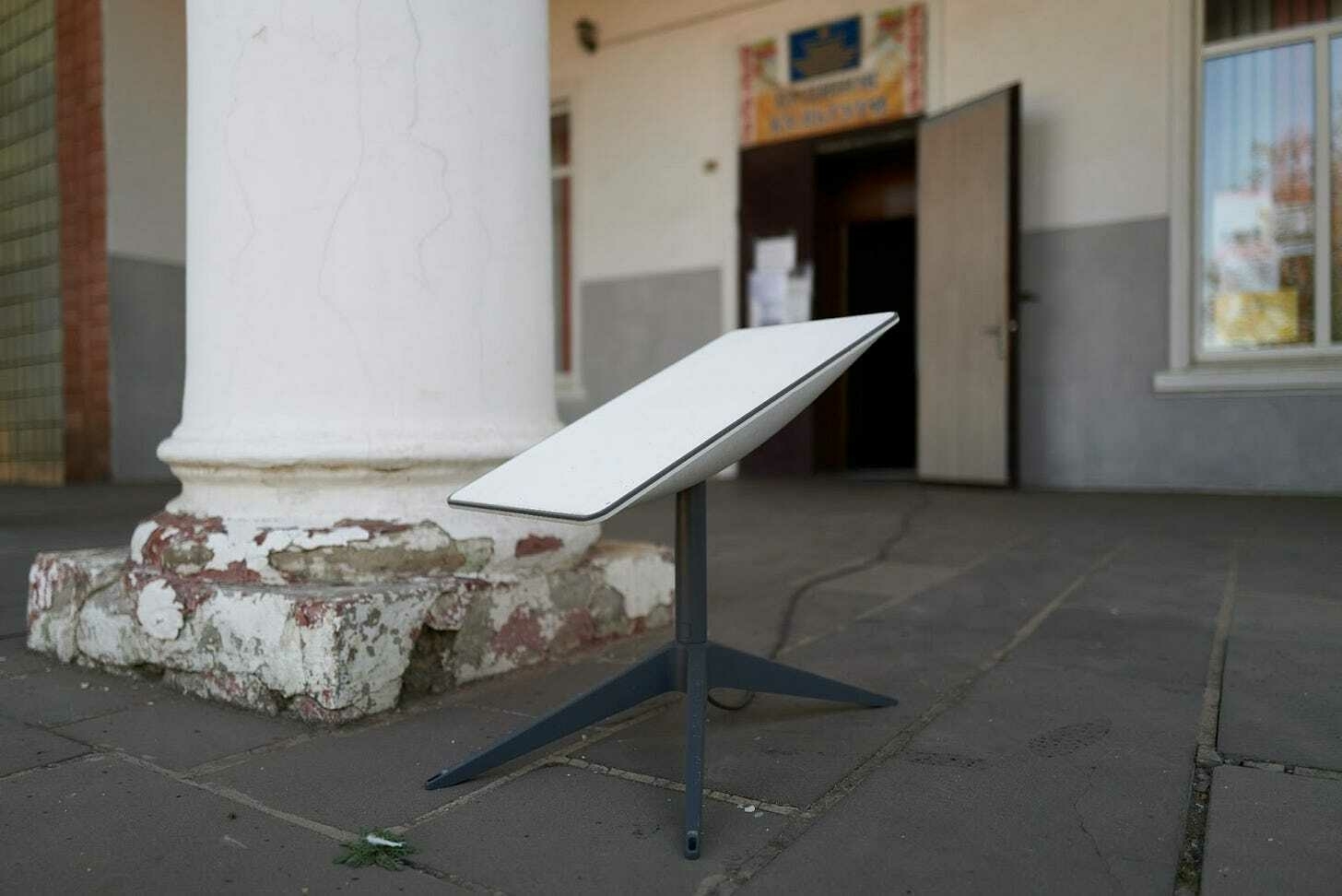
A Starlink dish establishes a satellite connection to provide internet to a humanitarian center on September 24, 2024 in Ivanopillya, Ukraine. Photo by Pierre Crom/Getty Images. Despite helping Ukraine at the start of the war, later, Musk began to undermine the operations of the Ukrainian military.
In September 2023, biographer Walter Isaacson claimed that Musk had secretly turned off Starlink access near the occupied Crimea the year before, to disrupt an attack on the Russian fleet. This information was also confirmed by Kyrylo Budanov, Ukraine’s military intelligence chief.
In February 2023, SpaceX restricted the use of Starlink in Ukraine, in particular restricting its ability to control drones in the region. Elon Musk said that his company did this “to prevent World War III.” The restrictions were eventually lifted.
New threats over shutting down the Starlink satellites emerged more recently when Trump returned as American president. Trump administration negotiators threatened to cut off Ukraine's access if it did not sign a minerals deal, Reuters reported.
The deal remains unsigned.
There was also a fight between Polish Foreign Minister Sikorski and Musk over the possible shutdown of Starlink. Although it ended with a tweet from Musk that he would never turn off access, there is doubt about whether his word alone can be trusted.
Ukraine is still vulnerable to the possibility that Starlink will be turned off and the army will be left without communication. So it has to look for alternative means of communication.
“I know that Starlink is not reliable, as SpaceX has shut it down several times. But currently, there are no full-fledged alternatives, all other options are worse,” said Oleg.
Using Starlink, the military can coordinate combat operations, transmit data from the front line, and quickly monitor the situation on the battlefield – even when there is mobile network coverage.
It can also control strikes and reconnaissance missions by drones.
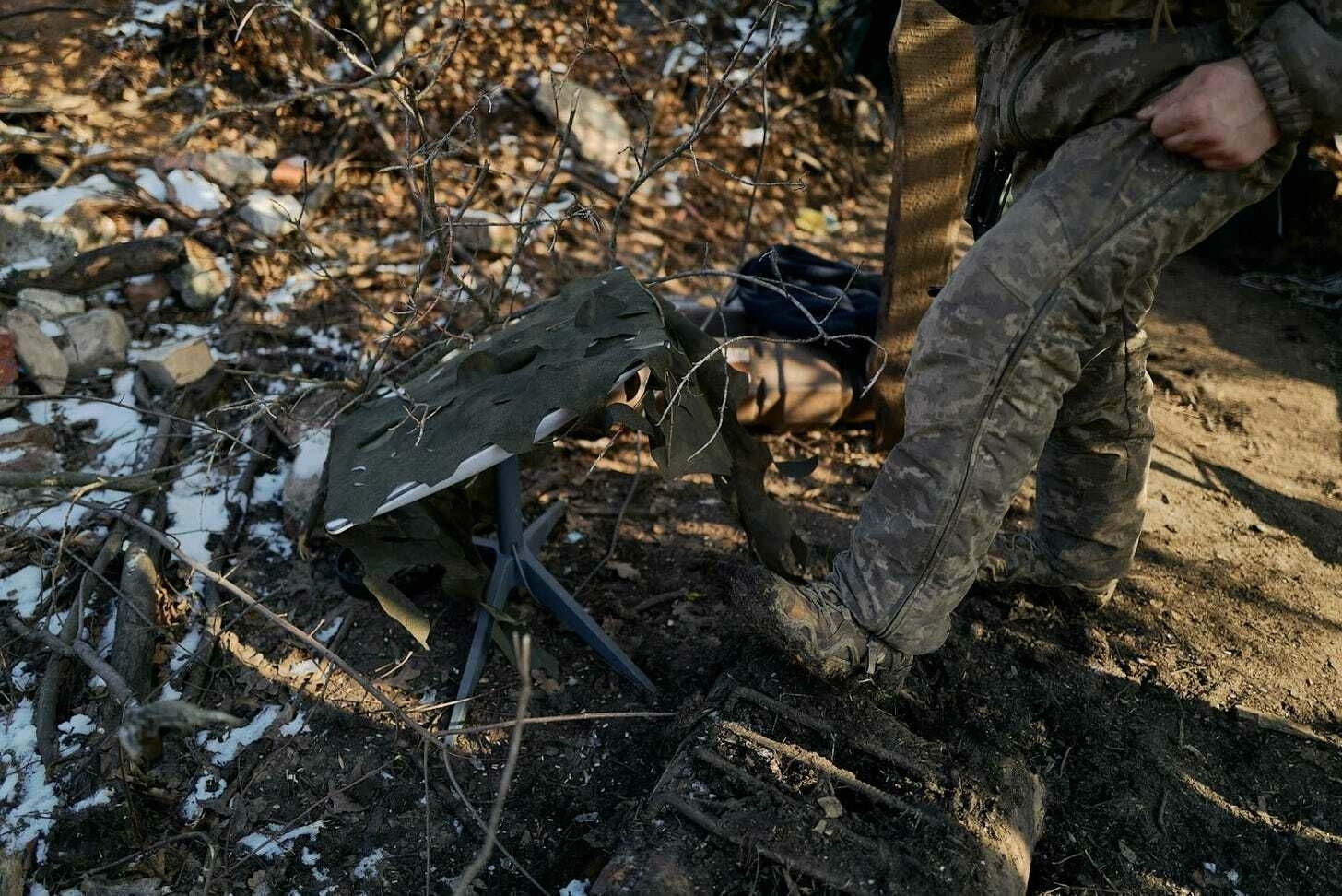
A Ukrainian soldier cleans his shoes near a Starlink device as servicemen of the 155th Brigade of the Armed Forces of Ukraine near Pokrovsk on February 9, 2025 in Pokrovsk, Ukraine. Photo by Pierre Crom/Getty Images. “Communication [provided by Starlink] is the basis of command and control. If there is communication, then there is control, and then we can talk about offense, defense, and everything else,” said Yaroslav Honchar, who heads the NGO Aerorozvidka, which promotes the introduction of robotic military capabilities.
Although Starlink is not officially available to the Russian army, it has been reported that some Russians have used it anyway.
Nonetheless, Starlink has its drawbacks. That’s largely because Starlink has insufficient durability for extended use on the battlefield. As a result, the terminals often break when they are used in extreme conditions.
The most common problem people come to Oleg with is to repair a Starlink after it was hit by shrapnel. And in trenches, terminals are often flooded with water or gnawed at by rodents, or can fall off the vehicle at speed.
“There was a case when I drained 5 liters [approximately 2.6 gallons] of water from two new terminals. I dried them out, repaired them, and they started working,” Oleg said.
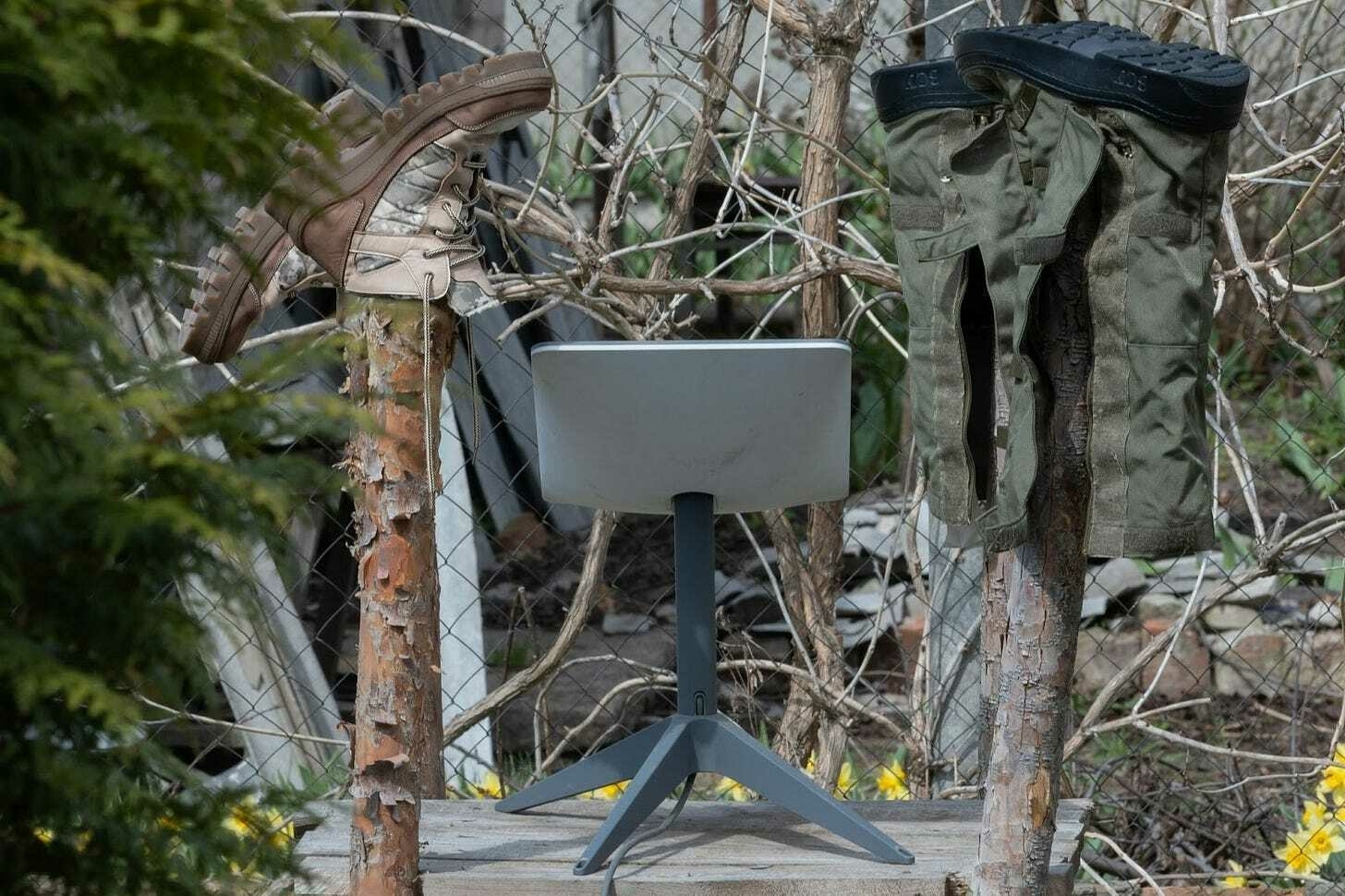
An antenna of the Starlink satellite-based broadband system stands in a yard next to the wooden posts on which shoes are dried on April 7, 2024 in Kupiansk, Ukraine. Photo by Yan Dobronosov/Global Images Ukraine via Getty Images. The main reason why Ukraine began to look for an alternative to the Starlink system in earnest is to reduce its dependence on Musk.
According to the Financial Times, the EU is currently negotiating with four similar operators to potentially replace Starlink in the Armed Forces. These include Luxembourg's SES, Spain's Hisdesat, Britain's Viasat, and France's Eutelsat/OneWeb.
The first three companies have outdated technology. Their satellites are too high above the ground, about 30,000 km, while Musk's satellites are only between 500 and 800 km away. This distance increases signal transmission time.
Eutelsat/OneWeb satellites are located much closer to the Earth at a distance of 1,200 km, similar to Starlink. However, the Starlink satellite network is much larger – with more than 6,000 satellites, compared to just five or six hundred Eutelsat/OneWeb satellites. This also affects the speed and quality of communication.
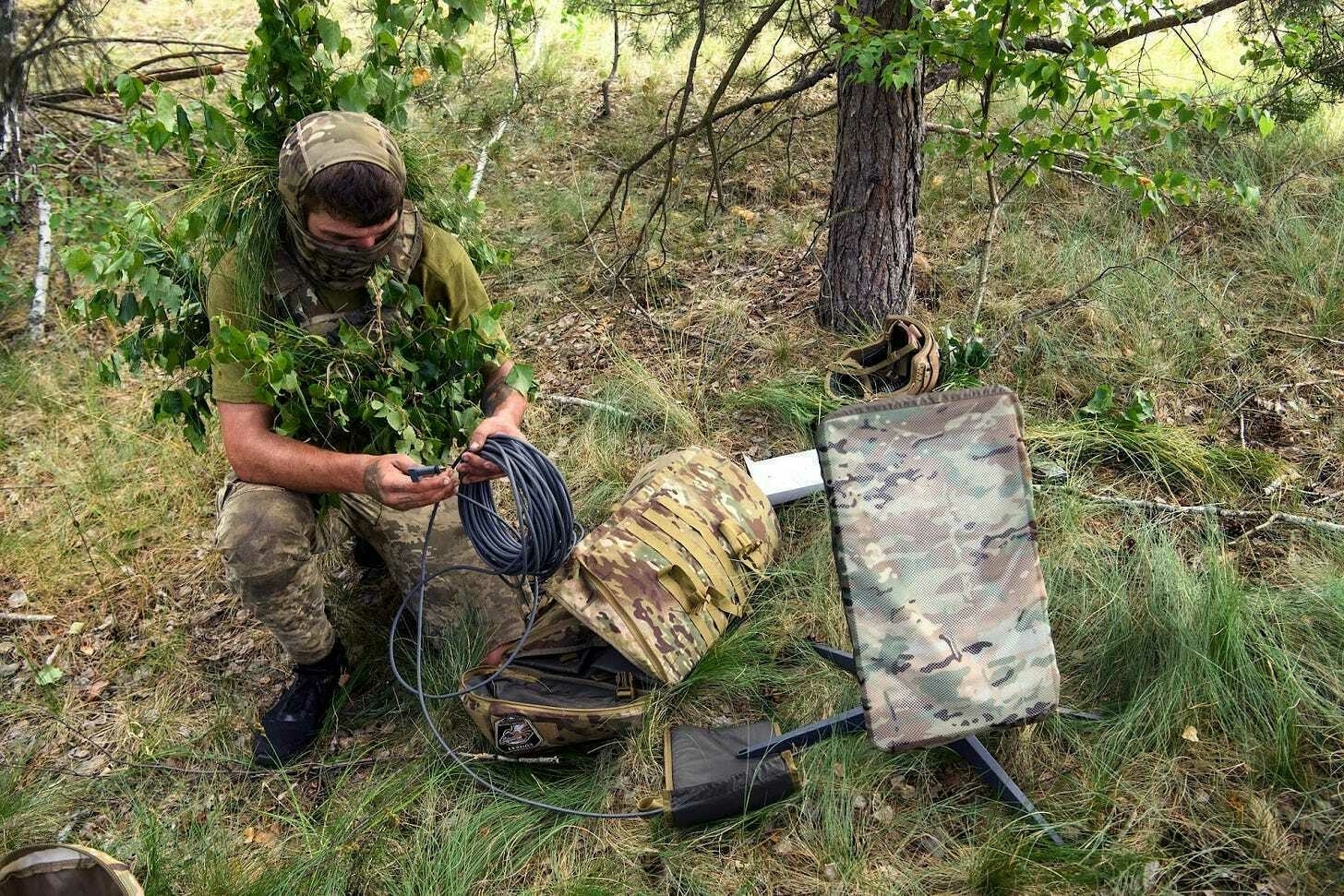
A Ukrainian soldier of the 61st Separate Mechanized Brigade uses the Starlink system during military exercises in the Chernihiv region, Ukraine, June 2023. Photo by Maxym Marusenko/NurPhoto via Getty Images. The other alternatives are more primitive technologies. During the Kursk operation, Ukrainian forces used radio stations or wired communication, as Starlink does not work in Russia.
“We can successfully defend the country without Starlink. We did it at the very beginning of the full-scale invasion, and we can do it now. It is more difficult, more expensive… but it is possible,” added Volodymyr Stepanets of the initiative ‘Narodnyi Starlink,’ which deals with the repair and procurement of Starlink terminals in Ukraine.
At the same time, Volodymyr Stepanets believes that disconnecting Starlink is not only bad for Ukraine, but also for Musk himself. According to him, there are currently more than 150,000 Starlink terminals in Ukraine, and monthly subscription fees alone bring the company about $15 million.
“As a country, we are Musk's largest customer on this continent. Probably, the number of Starlink terminals in Ukraine is higher than in the whole of Europe,” he said.
The Counteroffensive sent a letter of inquiry to the Ministry of Digital Transformation and the Starlink office in Ukraine to determine the official number of Starlink terminals in Ukraine. At the time of publication, we did not receive a response.
Oleg has personally worked on Starlink Gen 2 terminals, which feature a vulnerability when it comes to use in the field. One of the connections used for the cable between the equipment was susceptible to moisture getting into the system, and so easily failed.
So Oleg had to figure out how to use another company's connector, which would be more resistant to moisture. He tried it out for himself, then recorded a video to show others how to do it.
So, like Ukrainians have done for years, he made do with what he had. He adapted, innovated and showed how to replicate his idea. He made more with less.
Under pressure, Ukraine’s creativity shines – and would even if Elon turned off the Starlink terminals.
In this time of great uncertainty — and unstable American support — it means that the situation on the ground is very dangerous. Your contributions help us get the body armor, medical gear, and supplies we need to stay safe.
Show your support by contributing to our tip jar - funds go towards keeping us safe and ensuring our work continues.
Tim Mak x The Bulwark’s Jonathan V. Last
Are we looking at a trifurcation of the world due to Trump’s tariffs? And, Tim and JVL discuss how changing drone technologies are shifting the economics of battlefield combat.
NEWS OF THE DAY:
Good morning to readers; Kyiv remains in Ukrainian hands.
RUSSIA LAUNCHES NEW ASSAULT ON SUMY, KHARKIV REGIONS: Russian troops have already begun an offensive in the Sumy and Kharkiv regions, according to Oleksandr Syrsky, the head of the Ukrainian military.
This is evidenced by Russian offensive operations in those areas, which have nearly doubled over the past week. The offensive's intensity is increasing daily despite international negotiations aimed at a ceasefire. Earlier, Ukrainian President Volodymyr Zelenskyy said Russia was preparing for a spring offensive in the Sumy and Kharkiv regions.
UKRAINIAN STEELMAKER RECEIVES FIRST COAL FROM U.S.-BASED MINE: Ukrainian steelmaker Metinvest has received its first shipment of 80,000 tons of coking coal from its plant in the United States. Coking coal, a key ingredient in steel production, is essential for maintaining Ukraine’s industrial and defense capabilities. The shipment was organized to replace losses caused by the closure of the Pokrovska mine in the Donetsk region, which ceased operations due to the threat of a Russian offensive.
The company plans to organize regular deliveries to maintain the stable operation of the Zaporizhstal and Kamet Steel plants. Each vessel is expected to carry approximately 80,000 tons of raw materials monthly.
CHINESE SOLDIERS FOUGHT IN THE RUSSIAN ARMY FOR MONEY: Chinese soldiers captured by Ukrainians in the Luhansk region on April 8 fought in the Russian army for money, according to Ukrainska Pravda. One of them said that he had been paid 300,000 rubles (approximately US$3,480) through an intermediary in China to join the Russian Armed Forces. He also hoped to obtain Russian citizenship in return.
The Ministry of Foreign Affairs of Ukraine summoned the Charge d'Affaires of China and condemned the participation of Chinese citizens in the war against Ukraine. The Chinese side said it was checking the information received. In the Lugansk region, the Ukrainian military captured two Chinese citizens who had fought on the side of the Russian army.
RUSSIAN SOLDIERS EAT MEDICINE DUE TO HUNGER ON FRONTLINES: Ukrainian military intelligence (HUR) intercepted a conversation revealing a critical situation regarding the Russian military's supplies at the front. A woman mentions that her friends have been sitting in a dugout for two weeks and have run out of food, forcing them to consume even their medicine — Teraflu (anti-cold powder).
This is not the first case; in 2022, the SBU published intercepts revealing that Russian soldiers admitted to eating a Yorkshire terrier out of hunger.
DOG OF WAR
Today's dog of war is Tosha from Mykolaiv. He was there during the entire occupation of Kherson, a neighboring large city, so he heard the shelling of Russian artillery systems almost every day. But now Kherson is free, and Mykolaiv is calmer, so he is happy.
Stay safe out there.
Best,
Artem -
Ukraine ready to negotiate 'abolition of duties' on all US goods amid Trump's tariffs
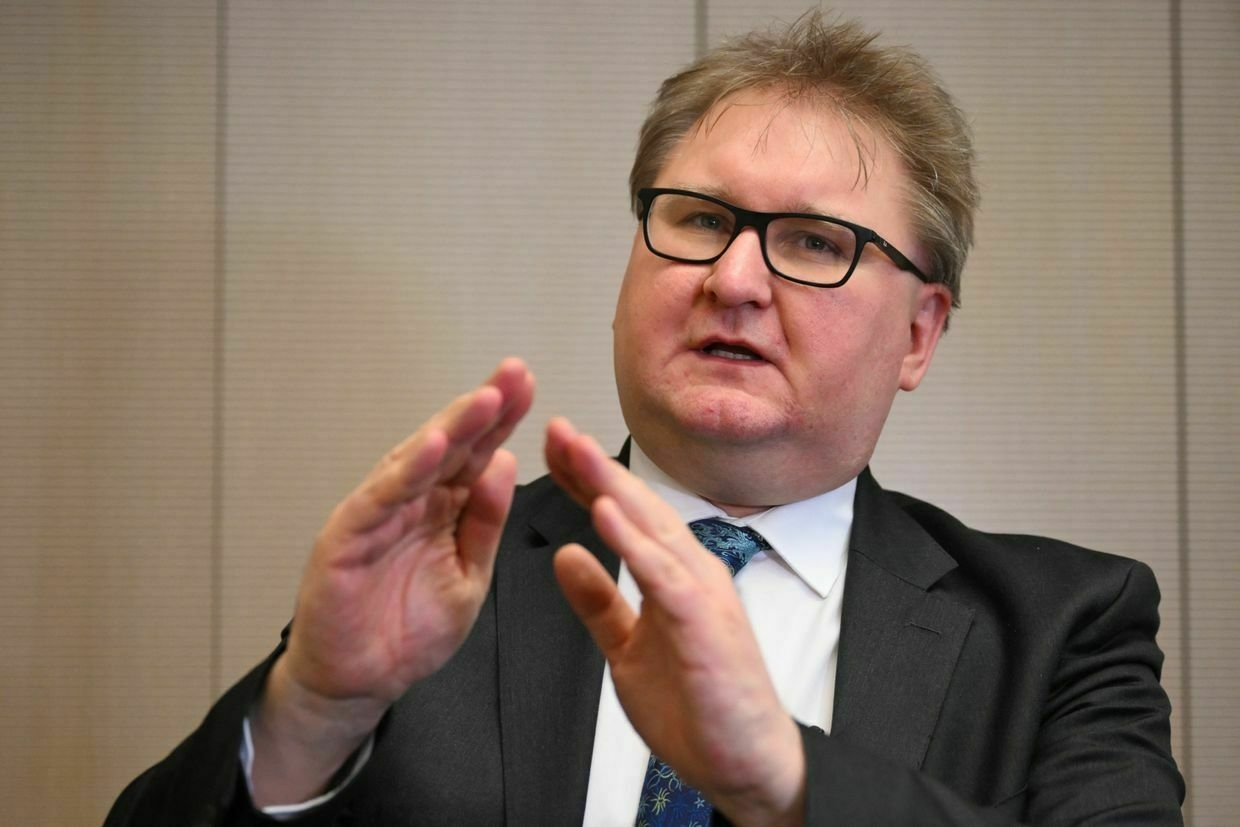
Ukraine is ready to negotiate with the U.S. the lifting of all tariffs on American goods, Deputy Economy Minister and Trade Representative Taras Kachka told Ukrainska Pravda in an interview published on April 8.
Kachka said Ukraine was prepared to zero out duties on U.S. imports, which amount to roughly $3–4 billion annually and are already subject to either low or no tariffs.
“Our priority is the abolition of duties, not escalation,” he said, emphasizing Ukraine’s desire to maintain strong economic and diplomatic ties with Washington.
The move comes in response to U.S. President Donald Trump’s sweeping new tariff policy, announced on April 2 as part of what he called “Liberation Day.”
Trump, who has framed the tariff regime as a bid to revitalize American manufacturing and fight back against foreign exploitation, said the U.S. had been “looted, pillaged, raped, and plundered” for decades.
Ukraine was hit with a 10% blanket tariff on its exports — lower than the 20% imposed on the European Union and the accumulative 104% on China, but still a setback for a country at war.
Kyiv’s metallurgy sector, a major source of Ukrainian exports to the U.S., was already impacted by a 25% tariff imposed in March. Despite this, Kachka signaled that Ukraine would not retaliate and instead hopes to engage in a “delicate dialogue” to resolve the issue.
How Trump’s tariffs will impact UkraineU.S. President Donald Trump on April 2 unleashed what he has dubbed “Liberation Day,” imposing tariffs on nearly every country in the world — including war-torn Ukraine. Kyiv got off lighter than most with only a 10% tariff on all Ukrainian goods, compared to 20% on the EU, and 54%The Kyiv IndependentDominic Culverwell
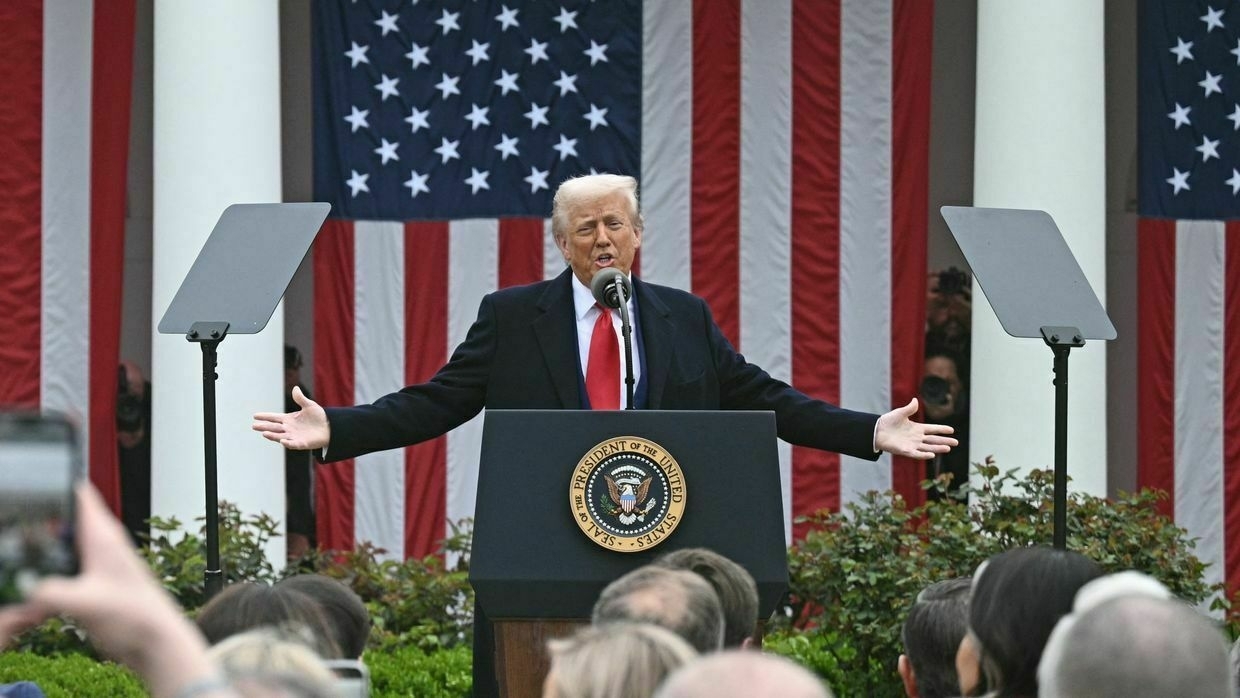
In 2023, Ukrainian exports to the U.S. totaled just $874 million, while imports from the U.S. reached $3.4 billion. The overall trade volume has declined in recent years, but the tariffs could deepen the imbalance, especially if they trigger broader protectionist measures globally.
Yuliia Svyrydenko, Ukraine’s Economy Minister, called the new U.S. tariffs on April 3 “difficult, but not critical,” saying Kyiv remained focused on long-term economic resilience and international cooperation.
Oleksandra Myronenko, an analyst at the Center for Economic Strategy in Kyiv, warned that a global trade war triggered by the new tariffs could still have knock-on effects for Ukraine.
“Even if we’re not the main target, we could feel the fallout,” she told the Kyiv Independent.
Russia was not among the countries and territories subject to the wide-ranging tariffs as the existing sanctions “preclude any meaningful trade,” White House spokesperson Karoline Leavitt claimed.
Kyiv’s strategy now centers on preserving access to global markets and maintaining stable ties with Washington amid growing uncertainty over future U.S. economic and security commitments.
Trump spares Russia from tariffs, but oil price plunge could wreck war economy regardlessU.S. President Donald Trump has inadvertently hit Russia’s economy after his “Liberation Day” tariffs caused oil prices to drop drastically on April 7, with potentially massive ramifications for the Kremlin’s ability to fund its ongoing war in Ukraine. Russia has so far failed to agree to a fullThe Kyiv IndependentDominic Culverwell
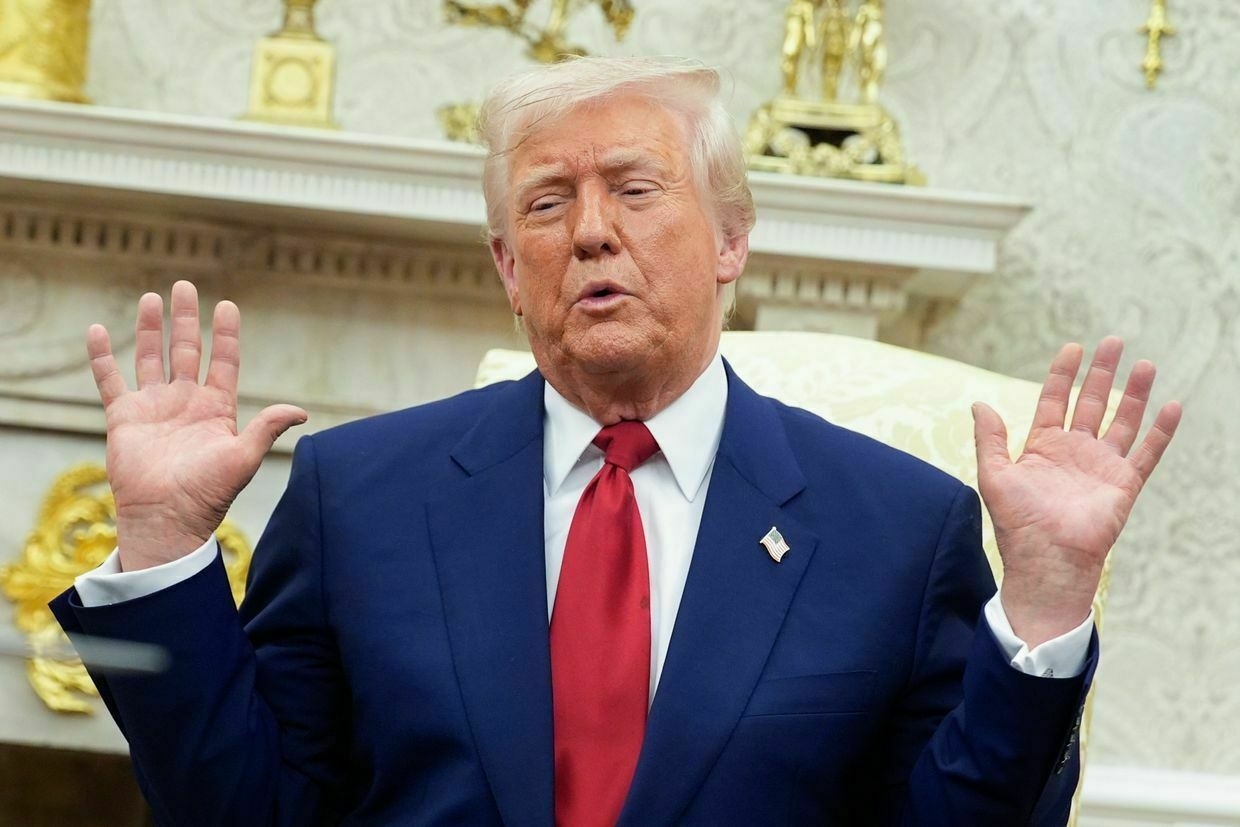
-
Russian general suspected of fraud to reportedly lead Storm-Z penal unit in Ukraine
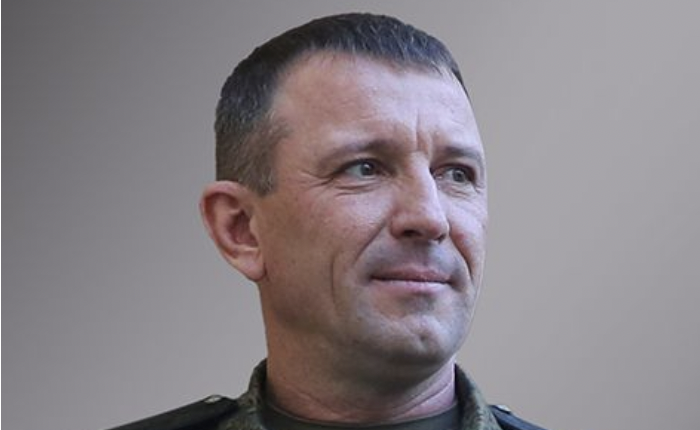
Russian Major General Ivan Popov, the former commander of the 58th Combined Arms Army suspected of large-scale fraud, signed a contract with the Russian Defense Ministry to go fight in Ukraine, pro-state outlet Kommersant reported on April 9.
Popov is expected to lead one of the Storm-Z detachments, a front-line assault group largely composed of convicts and known for high casualty rates, Kommerstant’s source in security services claimed.
The officer’s lawyer and the Defense Ministry appealed to the military court overseeing the case to suspend the proceedings and release Popov from detention to go fight in Ukraine, the Russian media reported.
Popov was arrested in May 2024 on suspicions he took part in the theft of 1,700 metric tons of metal intended for building fortifications in the Russian-occupied part of Ukraine’s Zaporizhzhia Oblast.
The general was dismissed from his command in 2023 after he reportedly bypassed the command of Chief of the General Staff of the Russian Armed Forces Valery Gerasimov and attempted to directly appeal to the Kremlin over poor battlefield conditions.
In March, Popov sent an open letter to Russian President Vladimir Putin, saying that he had always been a “loyal soldier” and asking for permission to return to military service.
Does Trump have red lines with Russia? The question has experts stumpedHe’s been “pissed off,” “not happy,” and “very angry,” but so far, U.S. President Donald Trump is yet to take any concrete action to force Russian President Vladimir Putin to agree to a full ceasefire. Trump has multiple forms of leverage he could use against the Kremlin — increasing militaryThe Kyiv IndependentChris York
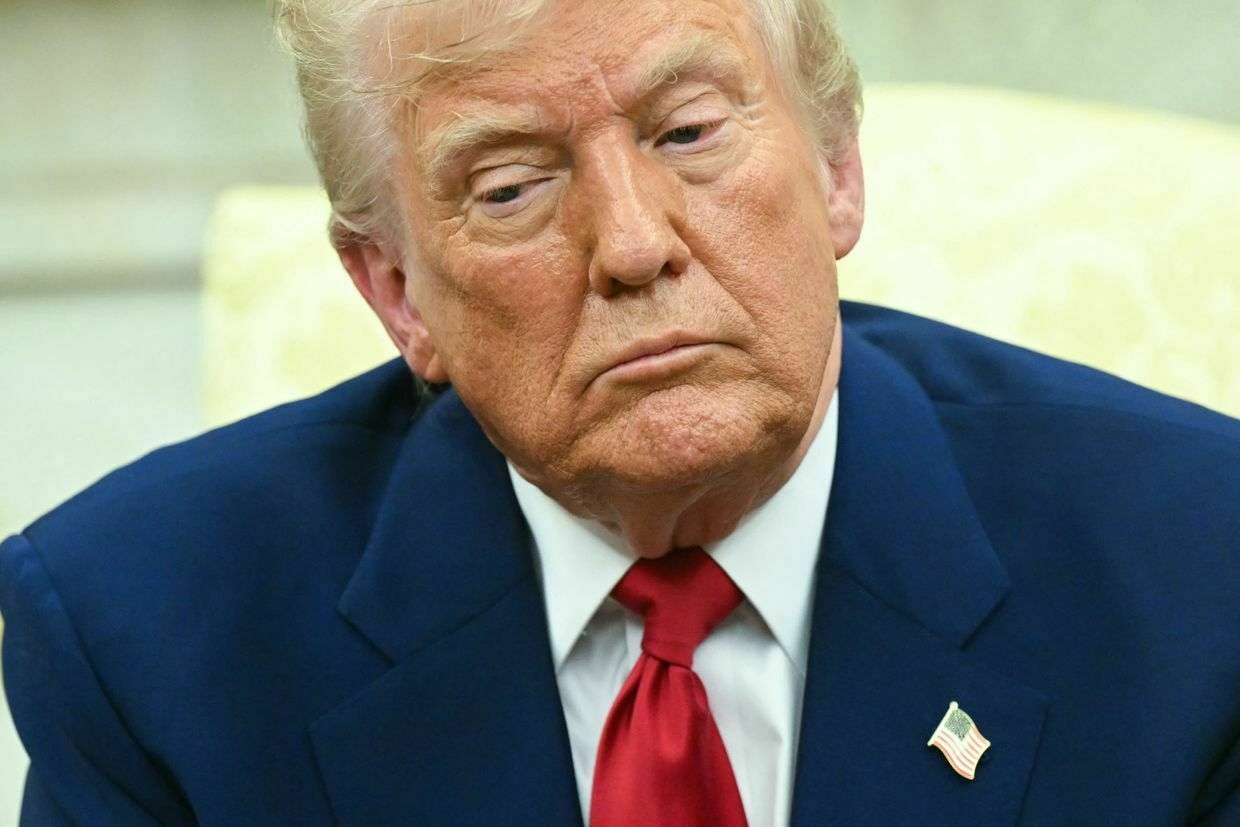
-
Europe warns US that sudden troop reduction may destabilize NATO's defenses, Bloomberg reports
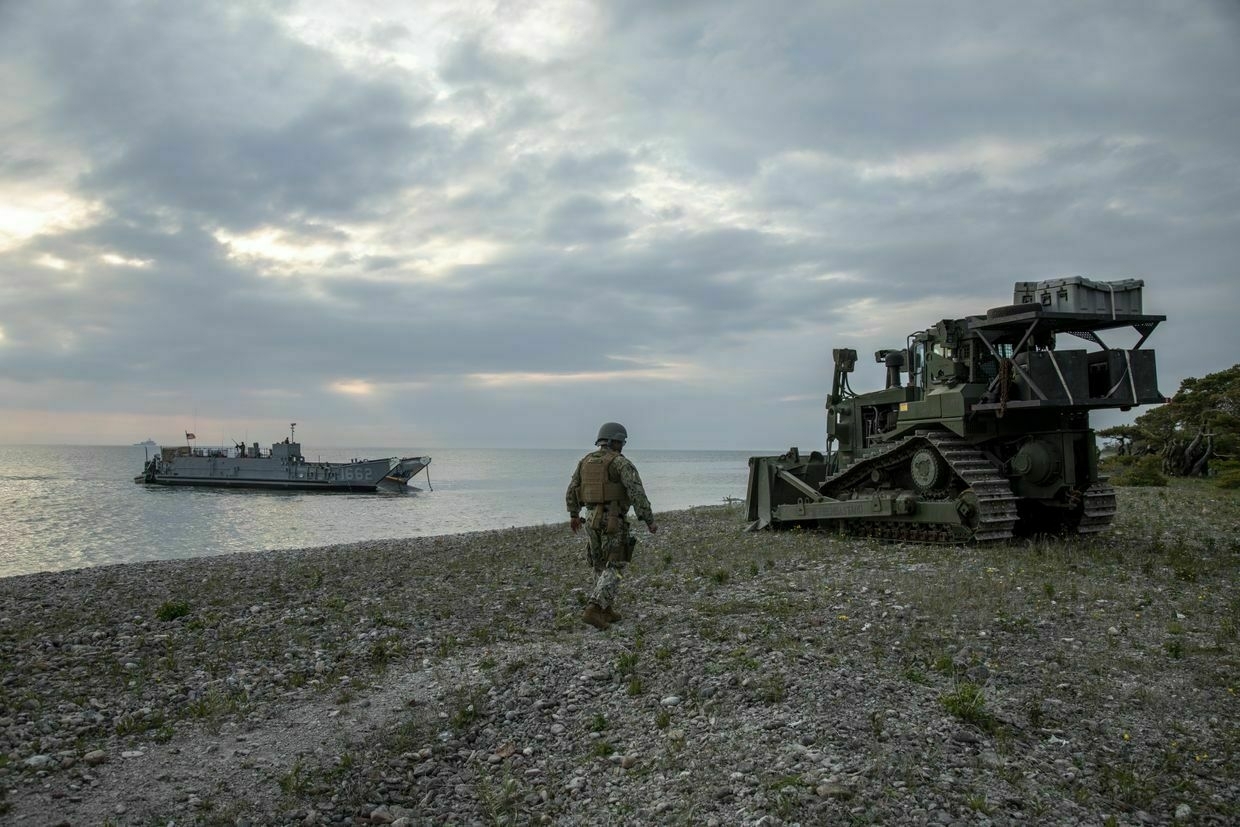
European allies have urged the U.S. to coordinate any reduction of its military presence on the continent, warning that an uncoordinated withdrawal could destabilize NATO’s eastern defenses, Bloomberg reported on April 9, citing undisclosed diplomatic sources.
The appeal comes amid growing expectations that the Trump administration will proceed with plans to scale back American troop deployments in Eastern Europe.
According to officials familiar with the matter, European governments are concerned about being caught off guard. With normal communication channels disrupted, some fear they may learn about U.S. troop reductions through the media rather than through a diplomatic notice.
European diplomats reportedly asked Washington for early warnings and time to prepare, emphasizing that troop withdrawals should be carried out without undermining NATO’s deterrence capabilities.
One senior European official stressed that U.S. troops in Europe serve not only a military purpose but also project political power. Despite growing pressure from Washington, allies are pushing back, urging the U.S. not to undercut transatlantic unity.
The concerns follow NBC News’s April 8 reporting that senior U.S. defense officials are considering withdrawing up to 10,000 troops from Europe — nearly half of the contingent deployed after the outbreak of Russia’s full-scale war against Ukraine in 2022.
The Pentagon press office told Polish broadcaster TVP Info that the U.S. has not made a final decision on reducing its military presence in Europe.
At the same time, the U.S. Army Europe and Africa Command announced the redeployment of military personnel and equipment from Rzeszow-Jasionka Airport, a key Ukraine aid hub in southeastern Poland, to other bases in the country.
U.S. Defense Secretary Pete Hegseth and President Donald Trump have repeatedly called on NATO allies to shoulder more of the continent’s defense burden.
Trump has demanded that the alliance raise its minimum defense spending benchmark from 2% to 5% of GDP — a target far beyond what most members currently meet.
Finland’s Defense Minister Antti Hakkanen recently warned that Europe must develop a coordinated roadmap with Washington to gradually take over more of the continent’s security responsibilities.
US aid has dropped, main support comes from Europe, Syrskyi saysThe U.S. assistance to Kyiv has decreased, with European countries now providing the main portion of military aid, Commander-in-Chief Oleksandr Syrskyi said in an interview with the LB.UA outlet published on April 9.The Kyiv IndependentMartin Fornusek
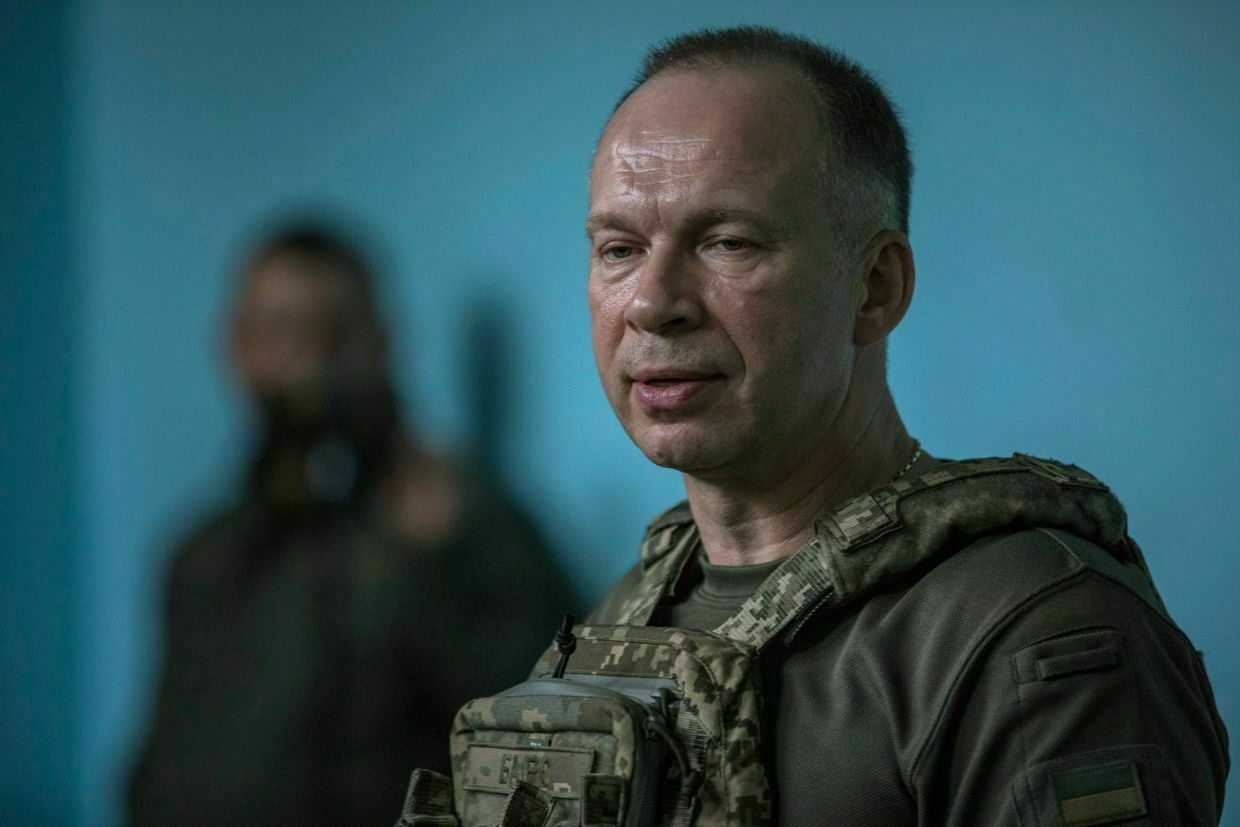
-
EU transferring new $1-billion tranche for Ukraine covered by frozen Russian assets
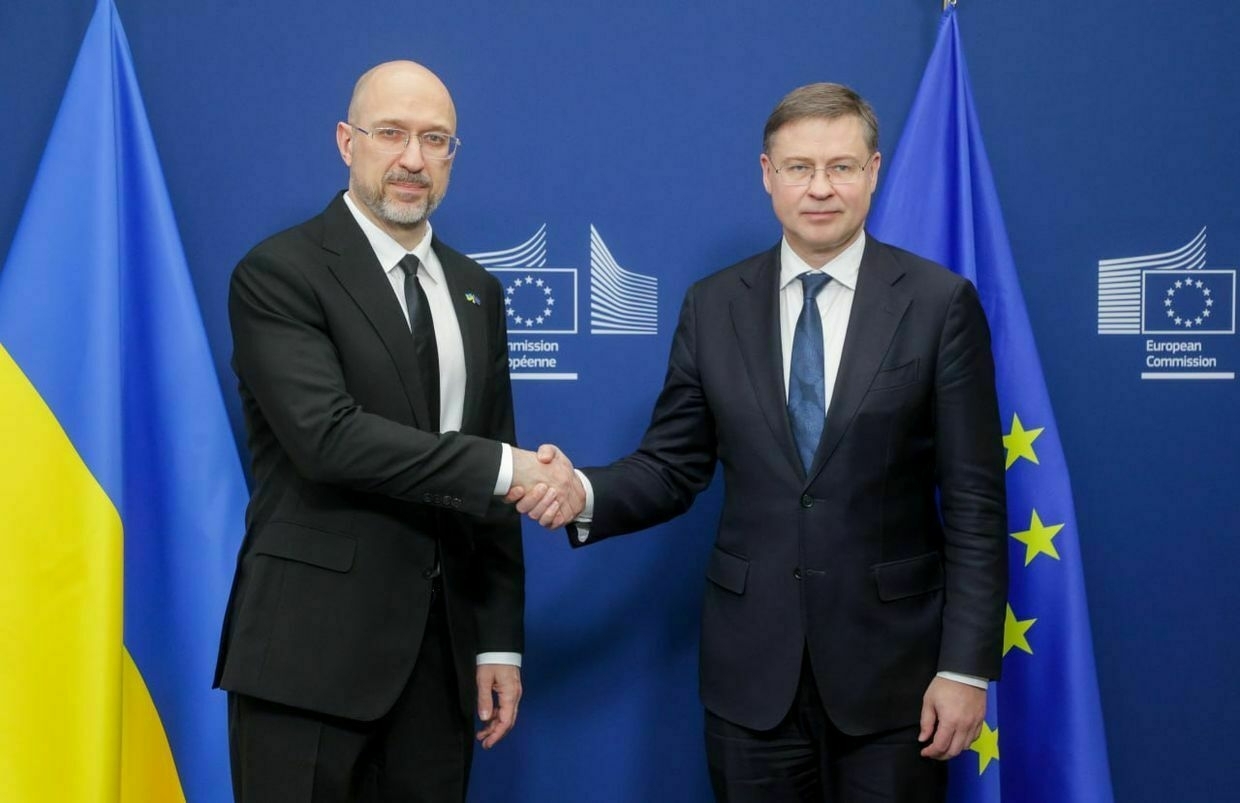
The EU is allocating another financial assistance tranche of 1 billion euros ($1.1 billion) as part of the G7 loan program for Ukraine, Prime Minister Denys Shmyhal announced on April 9.
“We are grateful to our partners for supporting the economy and the rapid recovery of our country,” Shmyhal said after meeting EU Economy Commissioner Valdis Dombrovskis in Brussels.
Western nations froze around $300 billion in Russian assets after Moscow launched its full-scale invasion of Ukraine in February 2022, with roughly two-thirds held in Europe.
Kyiv has been urging its foreign partners to confiscate the assets and funnel them to Ukraine’s defense and reconstruction efforts, but Western leaders have been hesitant to take the step, fearing legal, political, and economic pitfalls.
Instead, the G7 members agreed to provide Kyiv with a $50 billion Extraordinary Revenue Acceleration (ERA) loan, which will be repaid with proceeds from the frozen assets.
The EU is providing around 18.1 billion euros ($20 billion) as part of the loan, with another $20 billion shouldered by the U.S. and the rest by the U.K., Canada, and Japan.
“We are delivering on our promise to support Ukraine,” Dombrovskis said. “This (aid) provides crucial financing to Ukraine and makes Russia pay for its aggression."
Trump spares Russia from tariffs, but oil price plunge could wreck war economy regardlessU.S. President Donald Trump has inadvertently hit Russia’s economy after his “Liberation Day” tariffs caused oil prices to drop drastically on April 7, with potentially massive ramifications for the Kremlin’s ability to fund its ongoing war in Ukraine. Russia has so far failed to agree to a fullThe Kyiv IndependentDominic Culverwell
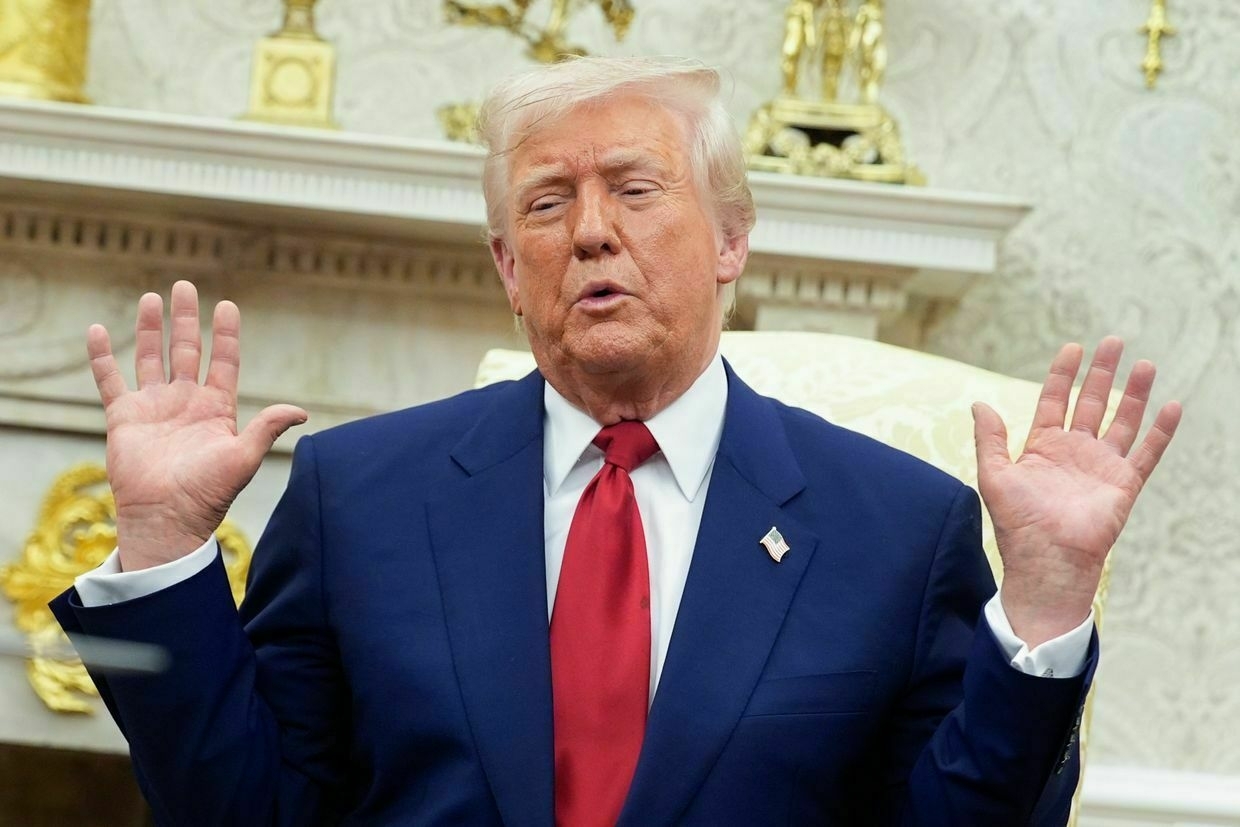
-
Global Supply Chains Under Threat: Trump’s Tariffs Shake World Markets
-
US aid has dropped, main support comes from Europe, Syrskyi says
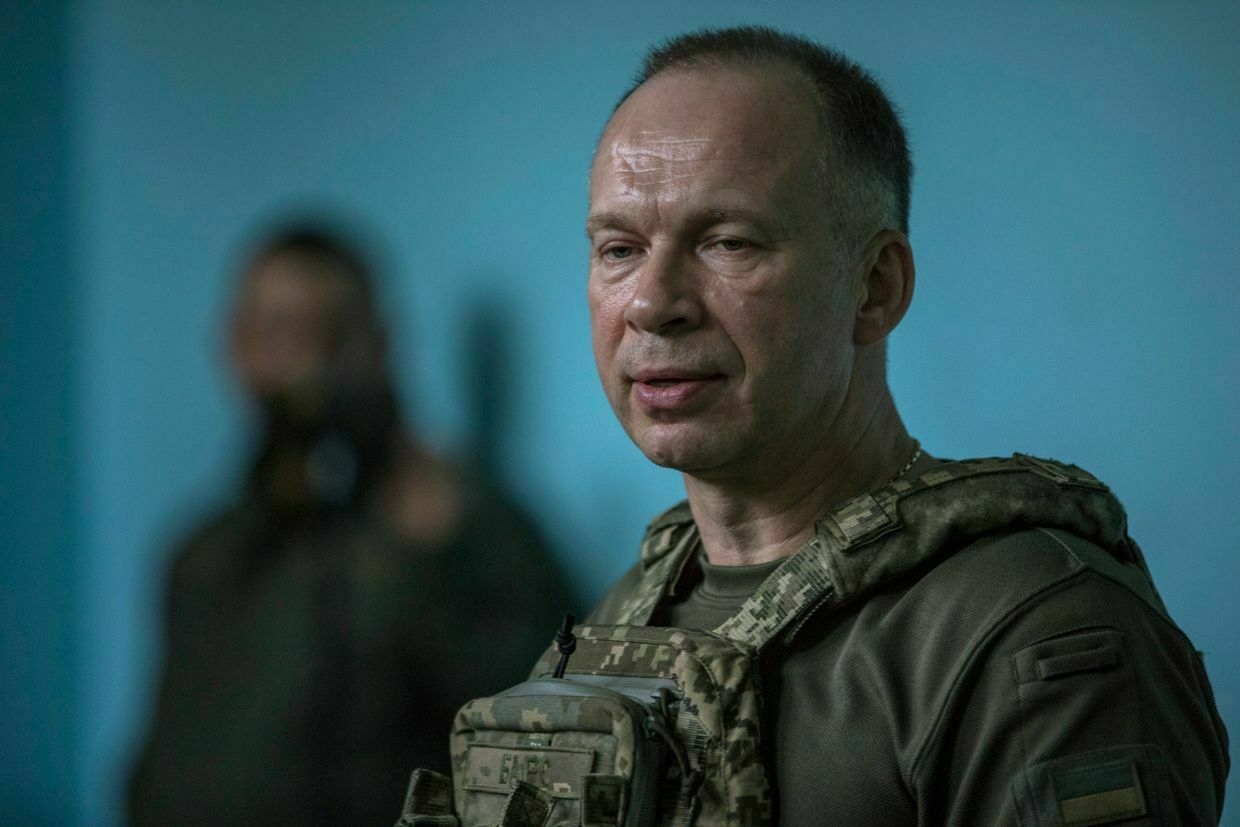
U.S. military assistance to Kyiv has decreased, with European countries now providing the main portion of aid, Commander-in-Chief Oleksandr Syrskyi said in an interview with the LB.UA outlet published on April 9.
Washington has been Kyiv’s leading military donor throughout the full-scale war, but President Donald Trump’s accession to office brought a major shift in U.S. policy on the Russia-Ukraine war.
Trump has permitted the continued flow of assistance approved by former U.S. President Joe Biden – except for a brief halt on all military aid in March – but has yet to sign off on any new packages.
“Support from partners, of course, plays a crucial role (in changing the strategic situation in the war),” Syrskyi said in the interview. The U.S. provided Ukraine with some $100 billion in military aid since the outbreak of Russia’s full-scale war in 2022, including $67 billion in arms.
“Now, the assistance from the U.S. has decreased, and the main support comes from our partners in Europe,” the commander added.
A number of European countries have pledged further aid packages for Ukraine amid the growing uncertainty about U.S. support. The Trump administration has also urged Europe to increase its share of aid for Ukraine and take more responsibility for its own security.
“But we must also rely on our own strength. We have had success in the production of artillery and quite significant successes with electronic warfare,” Syrskyi said.
“Drones as well. So many types, models of drones used to strike (Russia) at the tactical, operational, and strategic levels."
Aiming to reduce its reliance on foreign support, Ukraine has ramped up its domestic defense production over the past years. The country’s 2025 budget allocated Hr 55 billion ($1.3 billion) for weapons production.
President Volodymyr Zelensky said in February that around 40% of the weapons and equipment Ukraine uses on the battlefield are Ukrainian-made, while the U.S. contributes roughly 30%.
Trump spares Russia from tariffs, but oil price plunge could wreck war economy regardlessU.S. President Donald Trump has inadvertently hit Russia’s economy after his “Liberation Day” tariffs caused oil prices to drop drastically on April 7, with potentially massive ramifications for the Kremlin’s ability to fund its ongoing war in Ukraine. Russia has so far failed to agree to a fullThe Kyiv IndependentDominic Culverwell
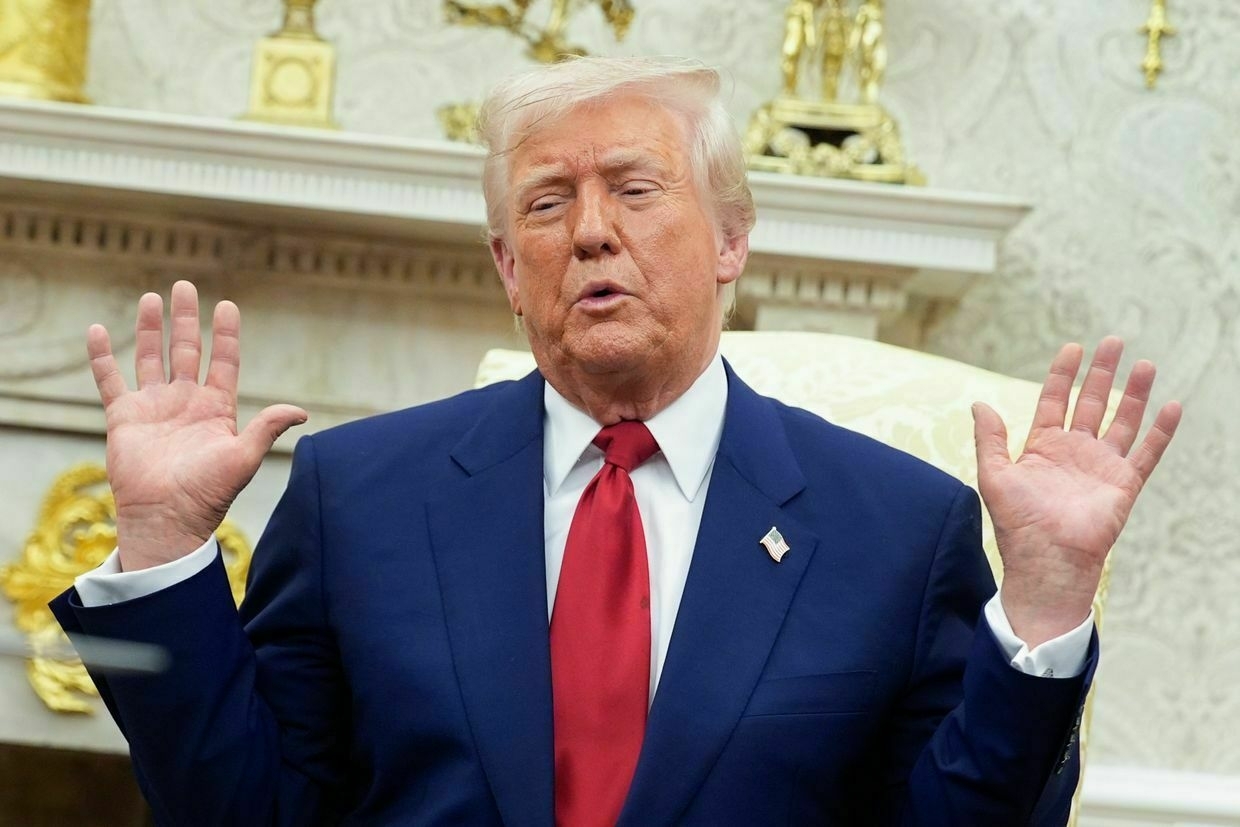
-
Trump spares Russia from tariffs, but oil price plunge could wreck war economy regardless
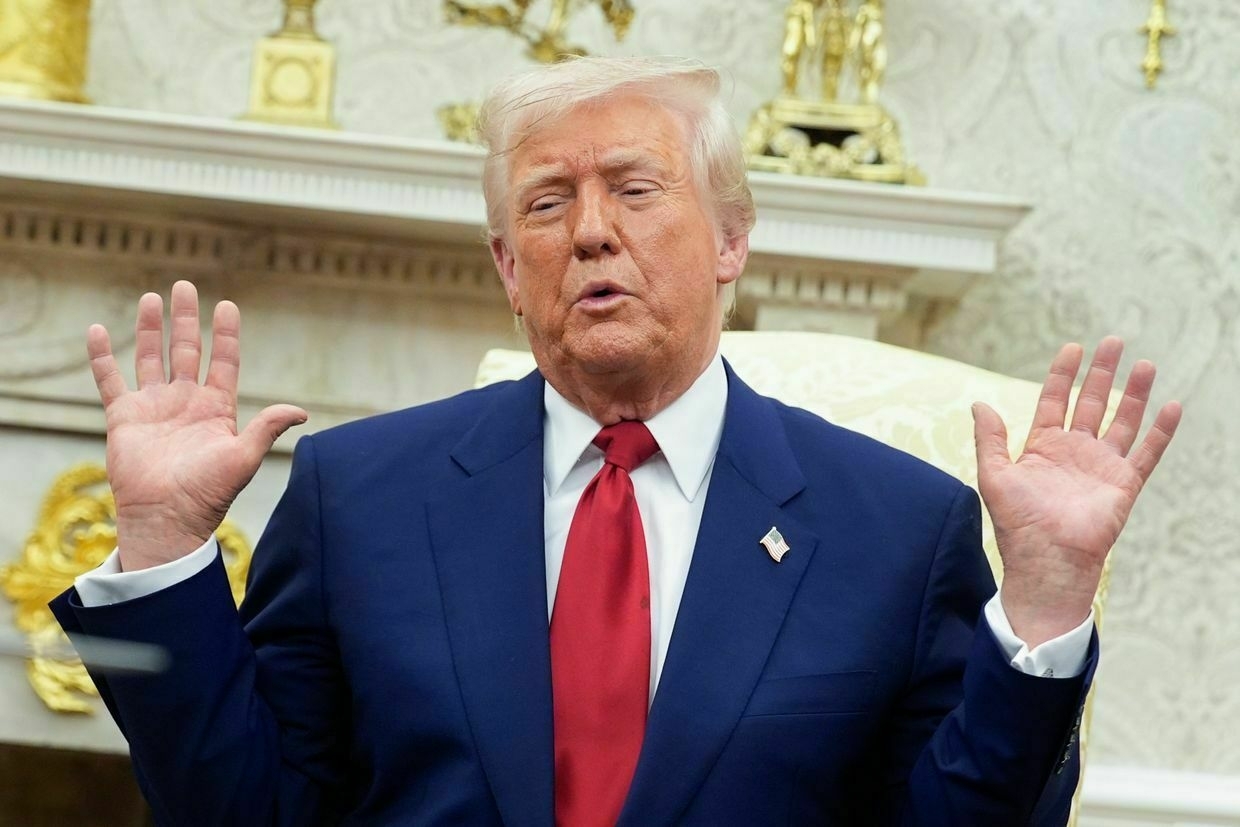
U.S. President Donald Trump has inadvertently hit Russia’s economy after his “Liberation Day” tariffs caused oil prices to drop drastically on April 7, with potentially massive ramifications for the Kremlin’s ability to fund its ongoing war in Ukraine.
Russia has so far failed to agree to a full ceasefire, and while Trump has been vocal about being “pissed off” and “very angry” with the Kremlin, he is yet to take any concrete action to force Russia to end its full-scale invasion.
He has multiple forms of leverage he could use against the Kremlin — increasing military aid to Ukraine, strengthening the enforcement of existing sanctions, or imposing additional tariffs on countries that buy Russian oil.
So far, he has not used any of it, but his “Liberation Day” tariffs imposed on nearly every country in the world — but notably not Russia — may end up forcing Russian President Vladimir Putin to reconsider his options — and the Kremlin is already panicking.
Russia’s oil economyRussia’s economy is heavily dependent on oil revenues, which make up around 30% of its total state budget.
As the war in Ukraine has dragged on, the Kremlin has massively increased defense spending, and 32% of the 2025 budget expenditure was allocated to the military and its war machine in Ukraine.
But there’s an issue — when drawing up the 2025 budget, the Kremlin budgeted for an oil price of $70 per barrel. But on April 7, the price of Russian Urals oil tumbled to a 21-month low of $51.54 per barrel on the Baltic port of Primorsk, according to Argus Media.
“If the average price is lower (than $70 per barrel) throughout the year, Russia will have less money to earn and spend, especially to cover growing expenses connected to illegal actions against Ukraine,” Wojciech Jakobik, a Warsaw-based energy analyst, told the Kyiv Independent.
“Russia’s National Wealth Fund would be depleted faster, and Russia would need a truce quicker,” he added.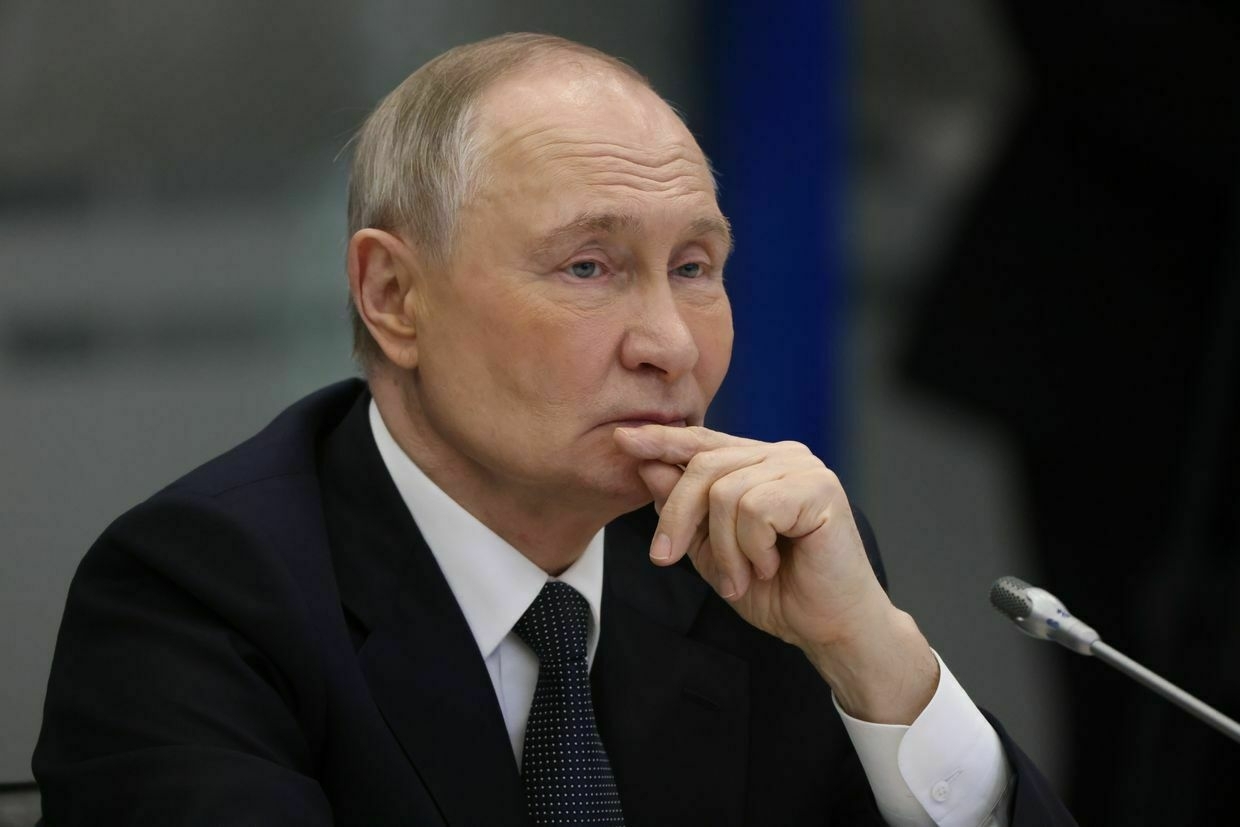
Russian President Vladimir Putin in Murmansk, Russia, on March 26, 2025. (Contributor / Getty Images) What’s caused the drop in oil prices?Ukraine has long been targeting Russian oil assets with drones in an attempt to deplete the Kremlin’s oil revenue, but Trump has done a more effective job in recent days by dragging the world into economic uncertainty.
Trump’s 34% tariffs on China caused Beijing to retaliate with its own 34% tariffs on American goods. The White House responded on April 7 by saying it would add an additional 50% tariff to Chinese goods on top of last week’s 34% tariff and the previous 20% tariff, bringing the total to over 100%.
The EU, which was slapped with 20% tariffs on its goods, has also threatened retaliation.Trump’s actions sparked concerns of a global recession, leading global oil prices to plunge in anticipation of a slowdown in economic activity.
So while Russia was spared the imposition of tariffs, it’s now suffering heavily due to the global ramifications of the unfolding global trade war.
The price drop ignited panic in Moscow, and the Kremlin is monitoring the “extremely turbulent, tense” situation, Kremlin spokesperson Dmitry Peskov told Interfax on April 7.
“Our economic authorities are monitoring this situation very closely and, of course, are doing and will do everything necessary to minimize the consequences of this international economic storm for our economy,” he added.
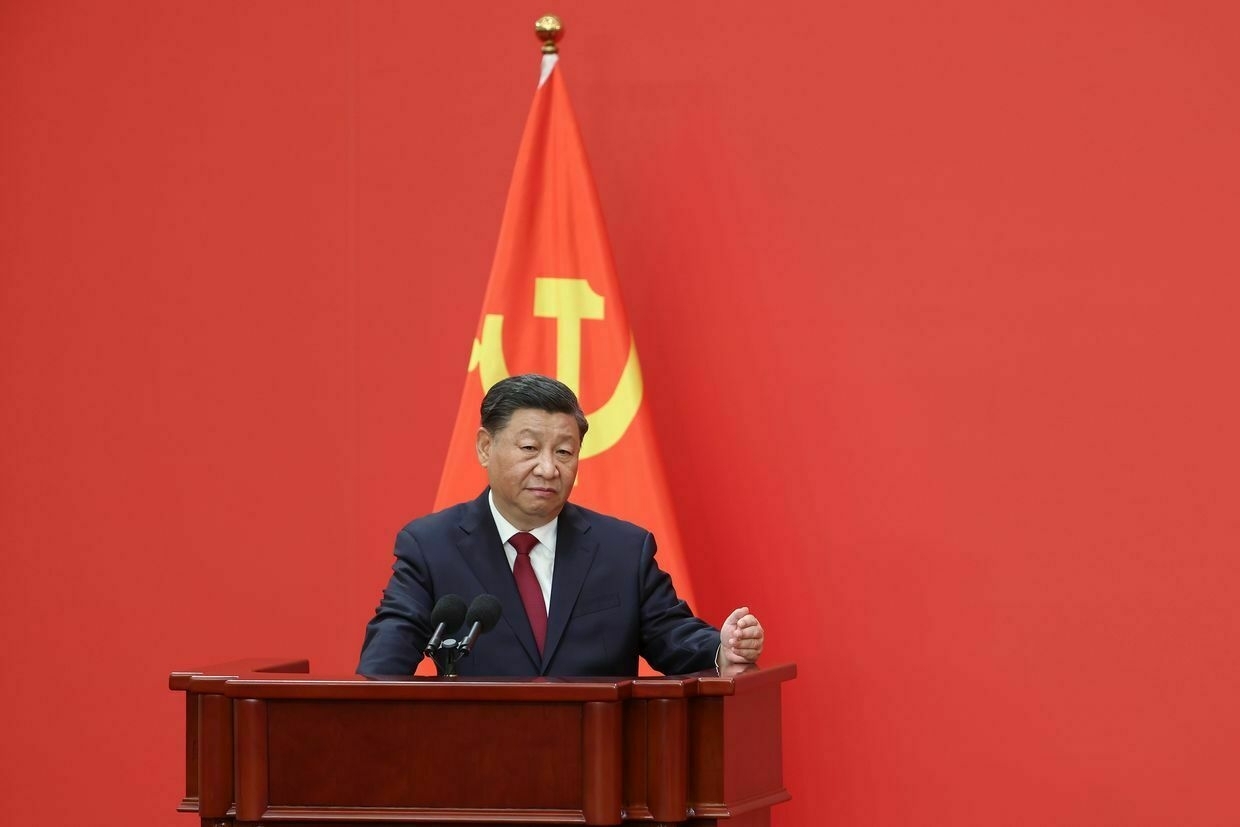
Chinese President Xi Jinping in Beijing, China, on October 23, 2022. (Lintao Zhang / Getty Images) Are tariffs the only reason Russian oil revenue is falling?Peskov laid the blame squarely on Trump’s tariffs but there are other factors contributing to the drop in oil revenue for Russia.
Russian fossil fuel revenues were declining even before the tariffs, partly due to American and British sanctions in January which caused “shadow fleet” shipments to drop by 21% in February, the Center for Research on Energy and Clear Air (CREA) reported.
The sanctions have also lowered demand for Russian crude in China and India — Moscow’s main markets. On top of this, Trump’s tariffs are likely to hurt China’s economy in particular and consequently, its oil demand.
“Since the start of the war with Ukraine, Russia has become significantly dependent on China. Therefore, it’s more vulnerable to the health of the Chinese economy,” Lilit Gevorgyan, associate director of economics at S&P Global Market Intelligence, told the Kyiv Independent.Additionally, the OPEC+ oil cartel, of which Russia is a member, has recently unwound restrictions on oil production faster than expected, John Gawthrop, editor at Argus Eurasia Energy, told the Kyiv Independent.
Trump previously said Russia’s war could end “immediately” if OPEC+ lowered oil prices. The cartel, consisting of 12 countries, accounts for 40% of the global oil production and 60% of global oil trade.
OPEC+ pledged to increase oil production by 411,000 barrels per day instead of the expected 140,000 per day, starting next month. This will push down prices as there is more oil on the market.
“There’s massive uncertainty about what’s going on in the global economy and you’ve also got more oil coming out into the market. It creates the perfect storm,” Gawthrop said.Banks have cut forecasts for Brent crude, the global benchmark, to as low as $60 per barrel. As recently as late March, Brent prices reached $72.52 a barrel.
As Ukraine, Russia agree to ceasefire at sea, Moscow’s battered Black Sea Fleet is set to get a reprieveThe White House on March 25 announced that Ukraine and Russia had agreed to “eliminate the use of force” in the Black Sea, returning the spotlight to a theater of battle that has been relatively quiet for more than a year. Throughout 2022 and 2023, Ukrainian strikes against Russian ships,The Kyiv IndependentMartin Fornusek
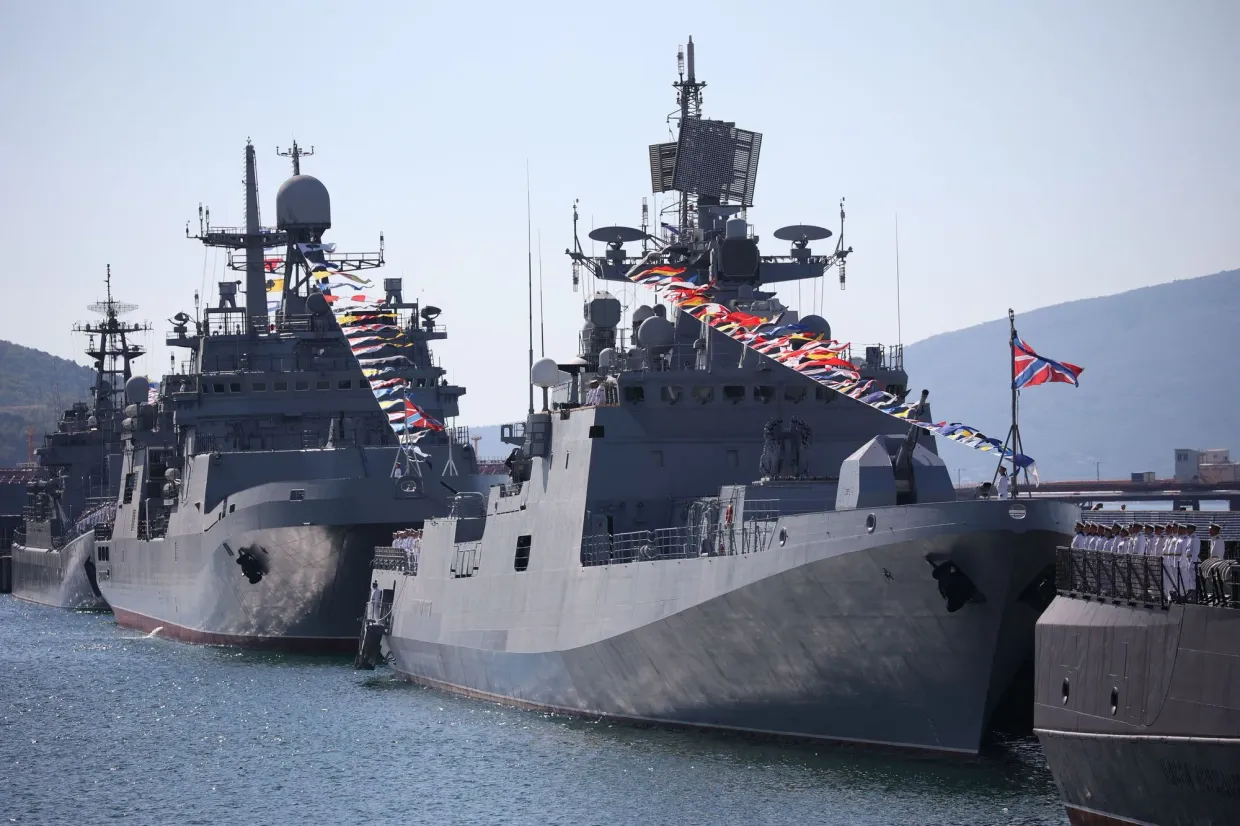
What does this mean for Russia?It doesn’t look good for Russia — reduced income from energy would add additional pressure to its already strained economy.
Moscow is balancing funding living standards, a war, and macroeconomic stability.Sanctions alone haven’t yet toppled its economy largely due to the Russian energy sector raking in cash.
Russia’s state budget earned around $100 billion from crude exports alone in 2024, according to S&P Global Market Intelligence.
“If you take out a big chunk of revenue that had been expected, it becomes harder to maintain that already precarious balance. Something may have to give,” Gawthrop said.
Russia could cut social spending and investment activities to fund its war machine, but continued prices below $70 per barrel could affect its ability to do so in the longer term, Jakobik said.And if oil prices fall even further, it could force Moscow into seeking a truce with Ukraine quicker, he added.
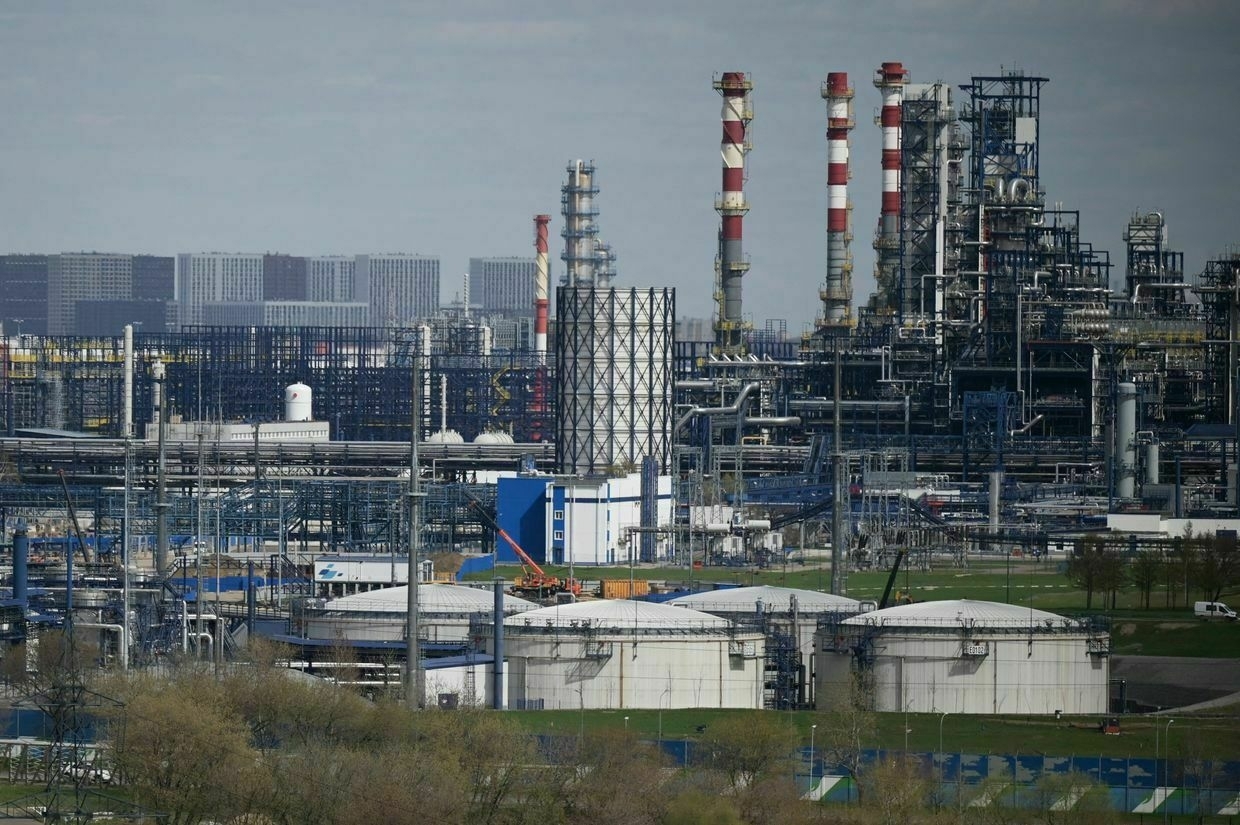
A view of Gazprom Neft’s oil refinery on the southeastern outskirts of Moscow, Russia, on April 28, 2022. (Natalia Kolesnikova / AFP via Getty Images) Will oil prices continue to drop?Banks don’t expect Brent prices to come back this year or next. Goldman Sachs forecast Brent prices would be $62 per barrel by December 2025 and $55 by December 2026, Reuters reported.
With OPEC+ increasing oil production, it could push down prices even more. If the cartel goes further into a “price war,” it runs the risk of dragging global oil prices below $60 per barrel, which will bring Russian oil down too, Jakobik said.
In 2020, during the COVID-19 pandemic, Riyadh faced off with Moscow, drastically increasing oil production and causing prices to drop below sustainable levels for producers. The Russian ruble fell 7% against the dollar as a result.
Another face-off between Moscow and Riyadh is unlikely as Russia is complying more with OPEC+ regulation, Gawthrop said.But Kazakhstan has ramped up production recently, which could cause prices to fall to a painful level for Russia.
“If oil prices fall to a level that is deemed to be too uncomfortable, OPEC+ will probably rein in production again. Although when we talk about uncomfortable price levels, the Saudis can take much more pain in terms of low oil prices than Russia can,” Gawthrop said.
Trump is dragging the world into another unprecedented economic catastrophe that could mirror the 2008 financial crash or pandemic, Gawthrop added.Unless the U.S. reverses its tariff policy, he doesn’t expect the market to rebound anytime soon.
Putin issued a decree. Now, millions of Ukrainians face an impossible decisionAs the U.S. tries to bring an end to the war in Ukraine, Russian President Vladimir Putin has issued a decree that appears to present Ukrainians living in occupied territories with a choice — submit to Russian law by Sept. 10 or face punishment. The decree, published by the KremlinThe Kyiv IndependentKatie Marie Davies
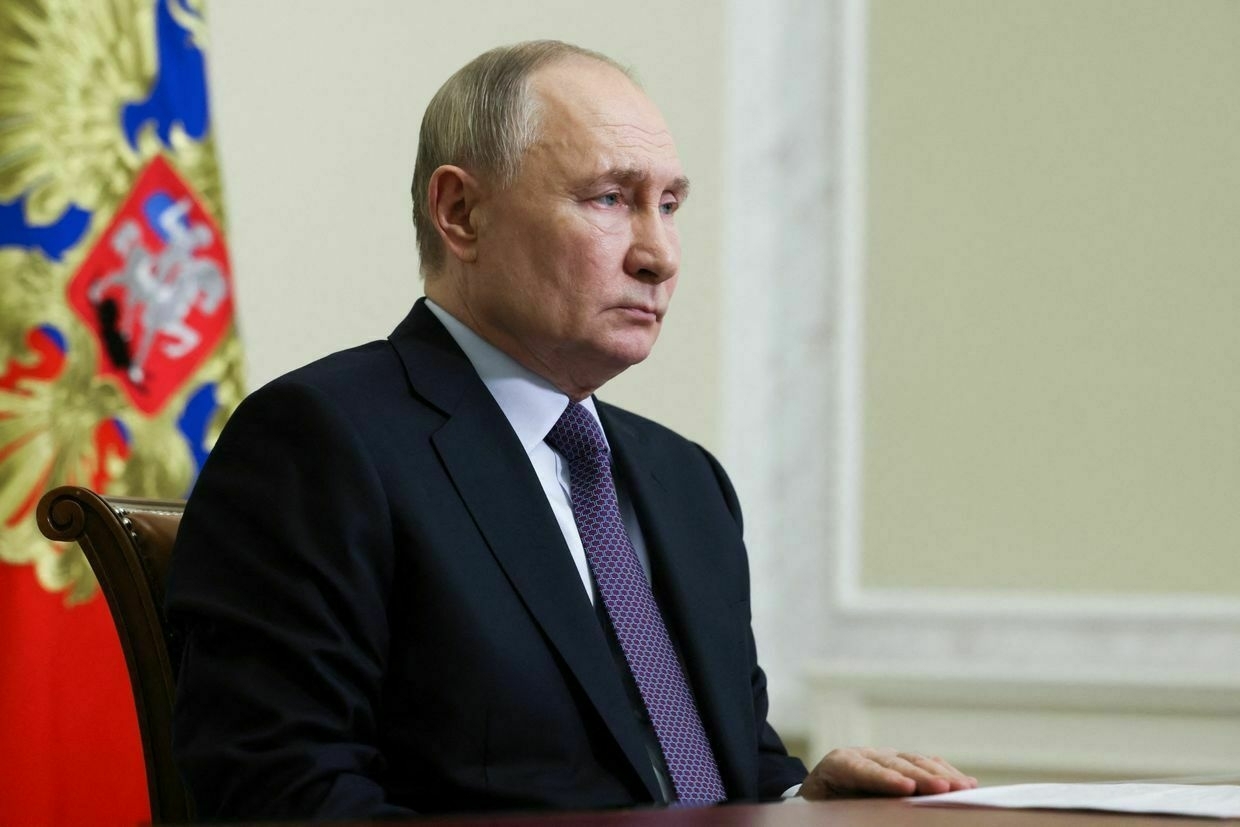
-
Russian offensive operations reportedly intensify across Ukraine's front line
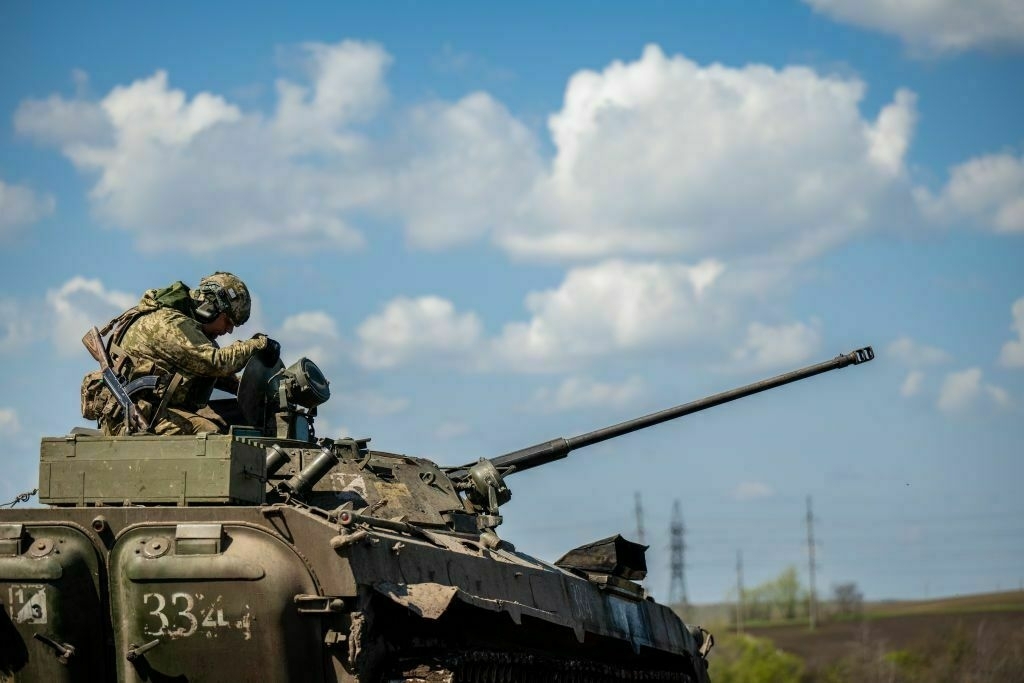
Russian offensive operations across the front line in Ukraine have intensified just as Washington is pushing for a truce, CNN reported on April 9, citing Ukraine’s General Staff and soldiers.
The news comes as Commander-in-Chief Oleksandr Syrskyi said on April 9 that Moscow’s new spring offensive “has actually already begun."
For over a week, Russian forces have been conducting more aggressive maneuvers in multiple regions, particularly south of Pokrovsk in Donetsk Oblast — a critical logistics hub situated roughly 70 kilometers (40 miles) northwest of Russian-occupied Donetsk.
Syrskyi earlier claimed that despite renewed pressure, Russia is “stalling” in the Pokrovsk sector and failing to achieve major territorial gains. He previously said 7,000 Russian troops were killed near Pokrovsk in January alone.
A Ukrainian reconnaissance officer deployed in the area told CNN that Moscow has been moving in reinforcements and equipment to prepare for expanded attacks.
The Lyman sector, located in northern Donetsk Oblast, has also seen escalating clashes. Ukrainian troops there are heavily outnumbered, sometimes by a ratio of 10 to 1, according to Anastasia Blyshchyk, a spokesperson for Ukraine’s 66th Separate Mechanized Brigade.
Russian forces are pushing from the east, aiming to capture key logistical routes linking Lyman with the rest of Donetsk and Luhansk oblasts. The second region remains almost entirely under Russian occupation, with Ukrainian forces holding only a few small settlements.
Combat data analyzed by CNN confirms a surge in Russian activity across the front line over the past two weeks.
Trump is setting Europe up for failure in a new Cold WarU.S. President Donald Trump’s radical changes to U.S. foreign policy have led many to suspect that he wants to align America more with Russian President Vladimir Putin over the long term. The expectation now is that the United States, China, and Russia will carve up the worldThe Kyiv IndependentPeter Eitel
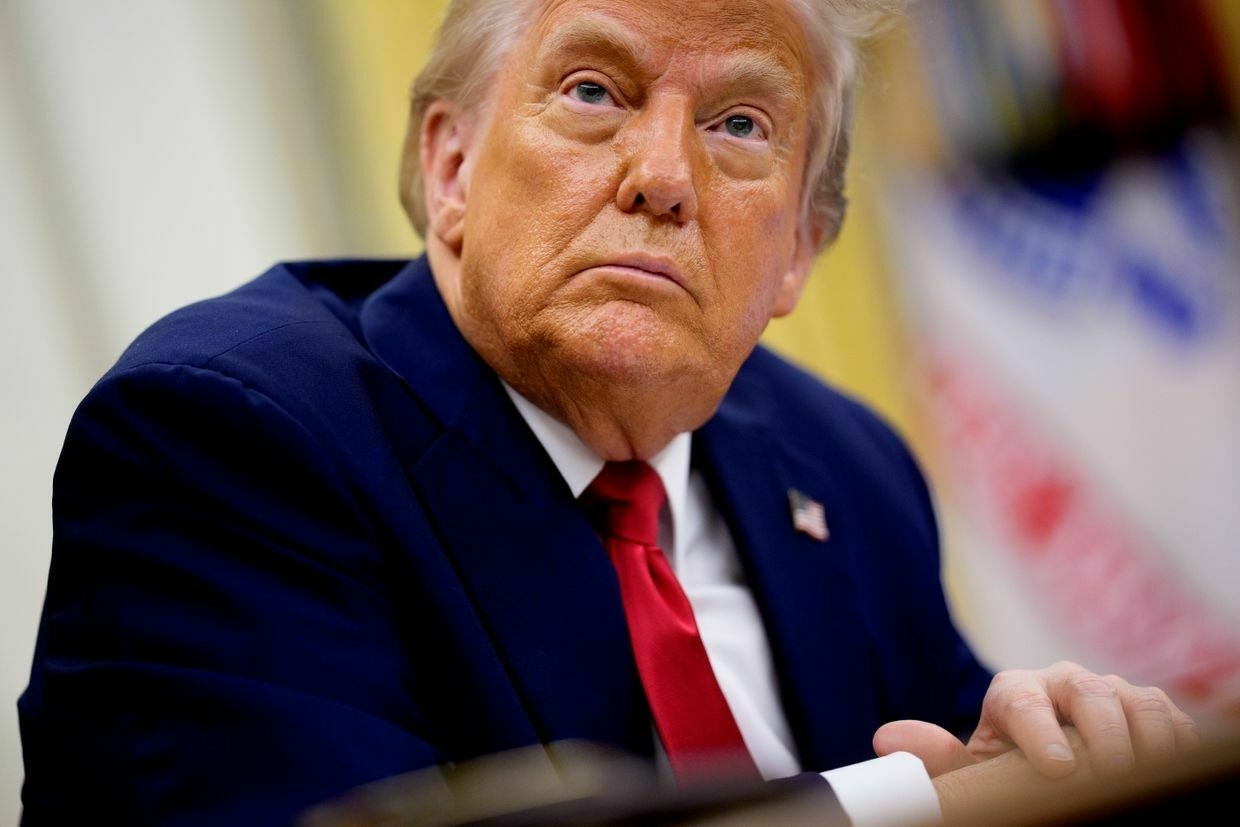
President Volodymyr Zelensky warned in March that Russia is preparing for new assaults on the northeastern Kharkiv and Sumy oblasts after Moscow’s rapid advances in Kursk Oblast.
Despite efforts by U.S. President Donald Trump to mediate a ceasefire, Russia rejected a U.S.-Ukraine proposal for a full 30-day truce, continuing its onslaught to seize more land before potential peace talks.
Data from the battlefield monitoring group DeepState shows that Moscow captured only 133 square kilometers (50 square miles) in March, the lowest monthly gain since June 2024.
Still, pressure is building again. Fighting has surged at the end of the month, especially in Donetsk Oblast, where Russian forces are testing Ukraine’s defenses.
Zelensky said on Jan. 15 that Ukraine’s military consists of 880,000 soldiers, tasked with defending the entire country against 600,000 Russian troops concentrated in different areas.
Presidential Office Deputy Head Pavlo Palisa said on April 3 that Moscow plans to increase its grouping by 150,000 more soldiers in 2025, equivalent to around 15 motorized infantry divisions.
Russia has capacity to mobilize 5 million trained troops, Syrskyi saysRussia has increased its force in Ukraine “fivefold since the beginning of the aggression,” Commander-in-Chief Oleksandr Syrskyi said, putting the number of Russian troops currently deployed in the country at 623,000.The Kyiv IndependentMartin Fornusek
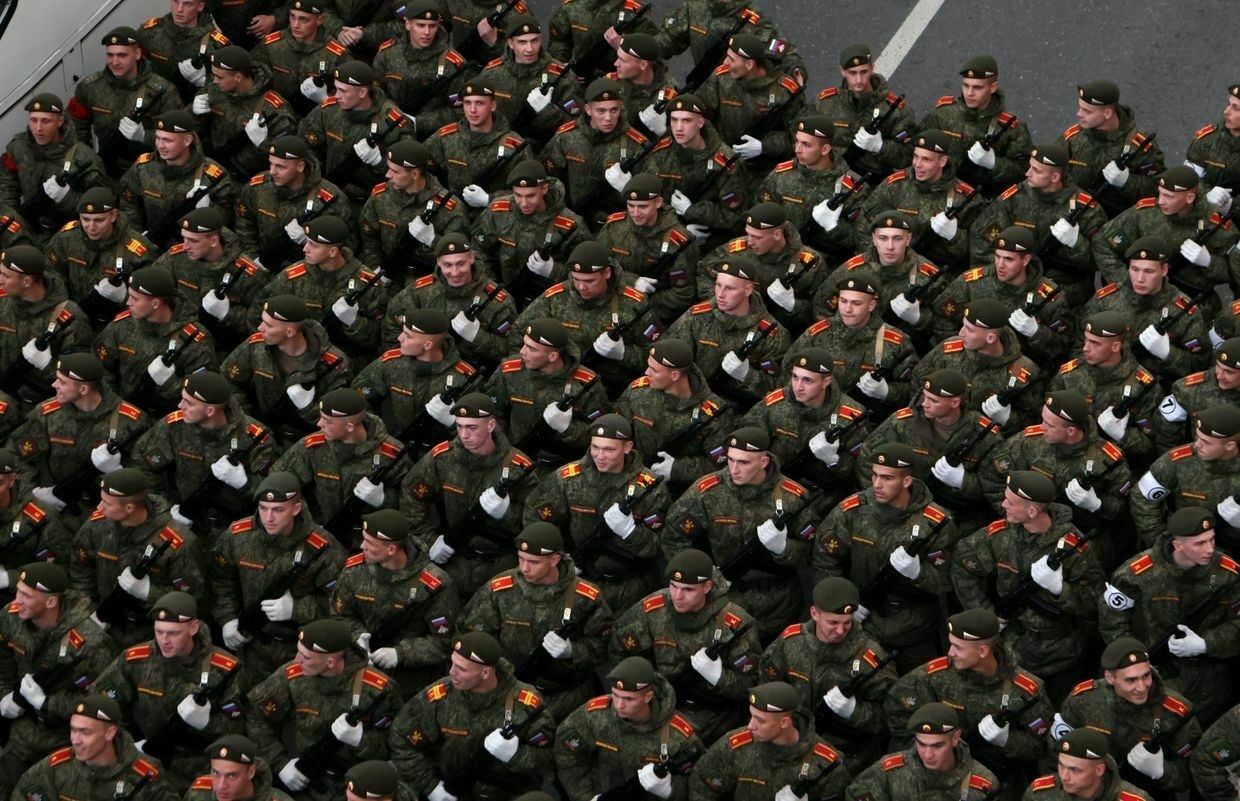
-
Trump’s tariffs risk disaster while bipartisan Russia strategy offers hope
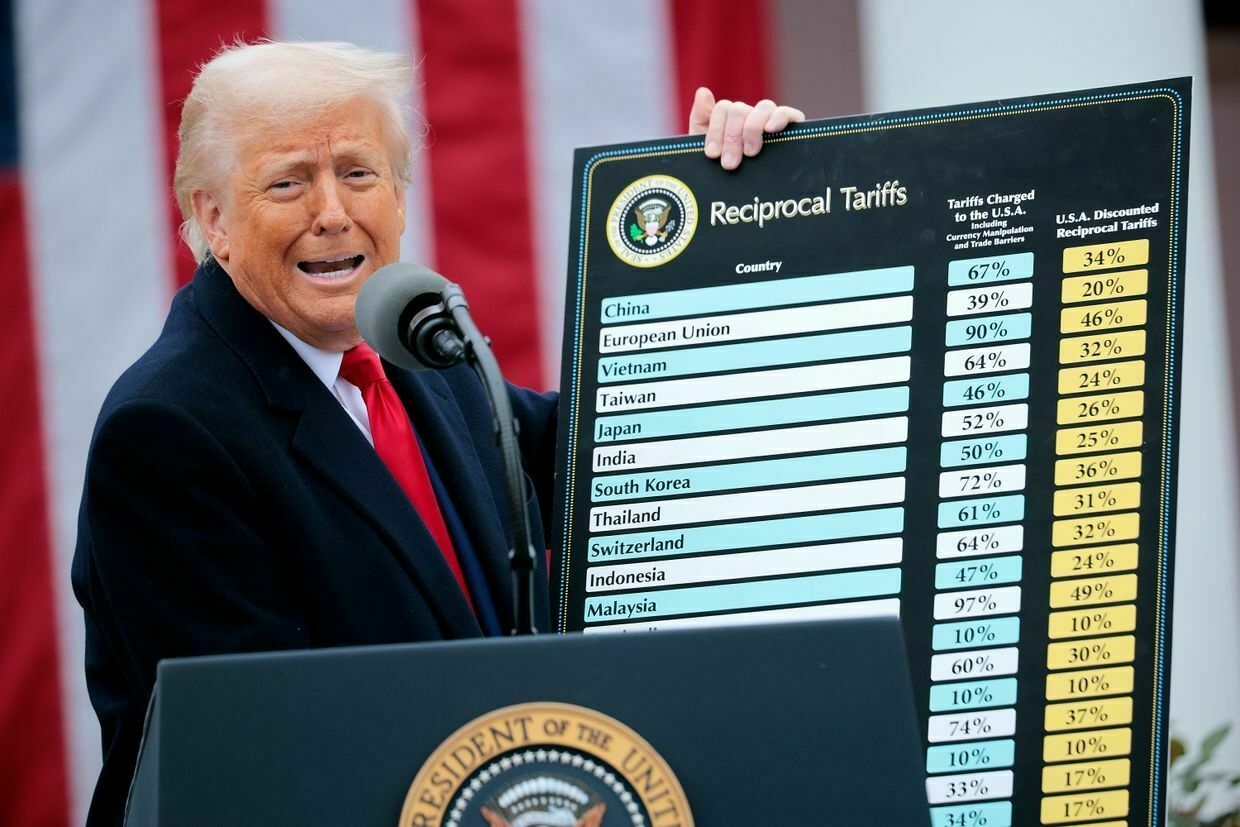
There is unfortunately absolutely nothing good to say about the announcements U.S. President Donald Trump made during his recent “Liberation Day” event in the White House Rose Garden. Try as one might to “sane-wash” Trump’s economic policies, there is simply no coherent rationale for his supposedly “reciprocal” trade tariffs.
Kim Clausing of UCLA sums it up perfectly: “The largest tax increase in more than fifty years will burden U.S. consumers, generating thousands of dollars in tax increases for the median household.” Michael Strain of the American Enterprise Institute is similarly spot on, noting that these new tariffs “will decrease, not increase, manufacturing employment. They will reduce the competitiveness of manufacturing companies.” And, as for the underlying methodology for calculating the new tariff rates, Doug Holtz-Eakin does not mince words, “They’ve got an indefensible foundation to an indefensible policy.”
Clausing worked on taxes for the Treasury Department under U.S. President Joe Biden, while Strain and Holtz-Eakin are highly regarded Republican economists. When these three agree so completely, it is a powerful indication that Trump’s latest tariffs represent an impending national disaster.
Interestingly, the day before Trump’s announcement, 50 senators, led by the Republican Lindsey Graham and Democrat Richard Blumenthal, advanced a better bipartisan tariff proposal, aimed at pressuring Russia to seek genuine peace with Ukraine. The overall structure of the proposal is sensible, and its most obvious flaw — it would impose tariffs on countries that import oil from Russia, rather than on Russia itself — is entirely fixable.
Importantly, the Senate bill can have a real impact without necessarily passing the House. Just the threat of congressional action on this front will be enough to get the Kremlin’s attention. After all the disruptions to trade, foreign aid, and relations with NATO and other U.S. allies, Trump needs a win on the international stage. This bill can help him get that, and perhaps Graham, Blumenthal, Trump can share a Nobel Peace Prize if Russia really does sue for genuine peace.
Glenn Hubbard, chair of the Council of Economic Advisers under George W. Bush, and Catherine Wolfram, who worked on related issues as a senior Treasury Department official during the Biden administration, recently set out very clearly the right way to think about how to put pressure on Russia.
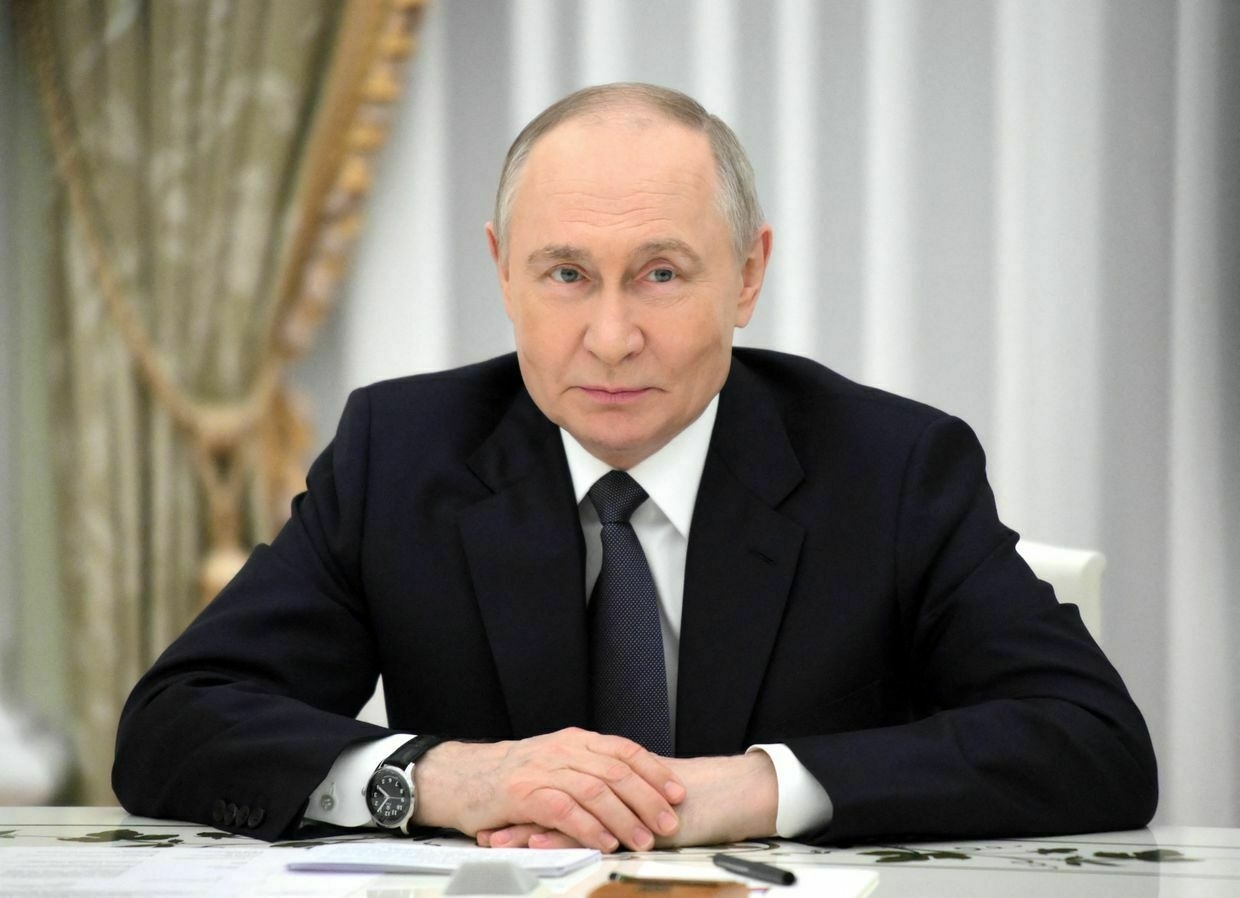
Russian President Vladimir Putin meets with the Chinese foreign minister at the Kremlin in Moscow, Russia, on April 1, 2025. (Grigory Sysoyev / Pool / AFP via Getty Images) Hubbard and Wolfram note that Russia needs ongoing hard-currency earnings in order to purchase armaments and other essential war-related supplies from abroad, and fossil-fuel exports (worth about $600 million per day) are the Kremlin’s only significant source of dollar revenue. The strategy they propose is simple and brilliant:
“The administration should impose sanctions on any company or individual — in any country — involved in a Russian oil and gas sale. Russia could avoid these so-called secondary sanctions by paying a per shipment fee to the United States Treasury. The payment would be called a Russian universal tariff, and it would start low but increase every week that passes without a peace deal.”
Most Russian oil moves via ship, and all these shipments (and the underlying financial transactions) are meticulously tracked by commercial experts. It would therefore be straightforward to ensure that if Russia failed to pay the required tariff on any shipment, all parties to the transaction, including any tanker owner or operator, the insurer of the cargo, and the purchaser, would become liable. If these private parties in turn declined to pay within, say, 30 days, they would themselves be subject to sanctions. Recent evidence confirms that no one — including Indian and Chinese entities — wants to be caught up in American sanctions.
A $20-per-barrel tariff on Russian oil would generate between $40 and $50 billion per year, payable to the US. Ideally, the threat of a Russian universal tariff (RUT) would pressure Russia into serious negotiations, where its removal could be part of a deal that ends Russia’s devastating and entirely illegitimate invasion and brings lasting peace to Ukraine. It would be easy to set this up so that any new military aggression would immediately trigger renewed or increased tariffs under the RUT. To get out from its RUT, Russia just has to stop attacking people.
If Russia continues to negotiate in bad faith, the U.S. would still collect billions annually under the RUT. In that scenario, Russia would at least be defraying the costs imposed on others from its full-scale assault on Ukraine. During COVID, Russia did not cut oil production, even when world prices dipped below $20. Under the RUT, Russia will need revenue more than ever, so there should be no reduction in world oil supplies.
Trump’s “Liberation Day” tariffs were the culmination of a terrible first two months for his administration on the world stage. He badly needs a win to boost American prestige around the world and convince investors that the US has not become an entirely nihilistic and self-destructive place. A slightly improved version of the bipartisan tariff proposal – one that imposes real costs on Russia – would do exactly that.
Editor’s Note: Copyright, Project Syndicate. This article was published by Project Syndicate and has been republished by the Kyiv Independent with permission. The opinions expressed in the op-ed section are those of the authors and do not necessarily reflect the views of the Kyiv Independent.
Mineral diplomacy or modern-day extortion in Ukraine?Eleven years ago, Russia seized Ukrainian territory by force. Three years ago, Russia launched a full-scale invasion of Ukraine. Today, Ukraine faces a new threat to its sovereignty: U.S. President Donald Trump’s demand that the country hand over a significant amount of its mineral wealth or face th…The Kyiv IndependentAndrew Bogrand
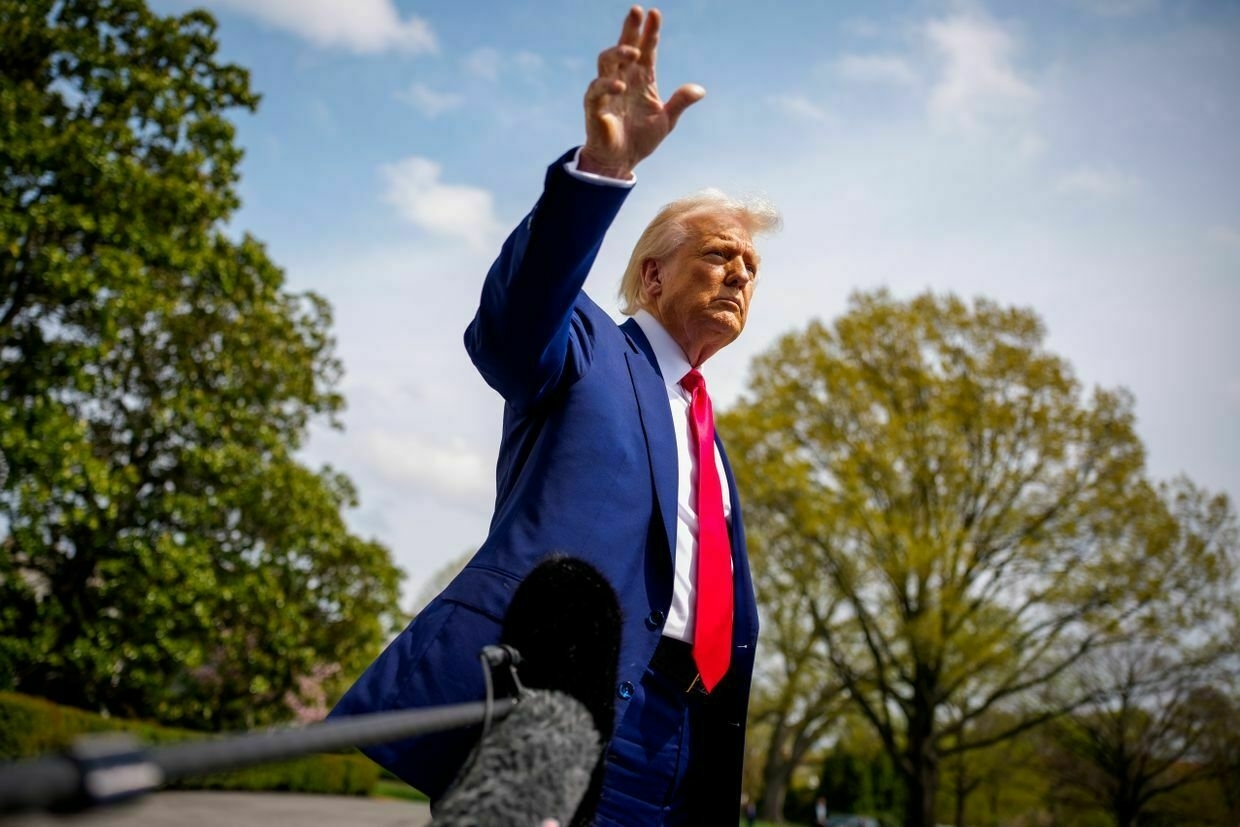
-
Trump is setting Europe up for failure in a new Cold War
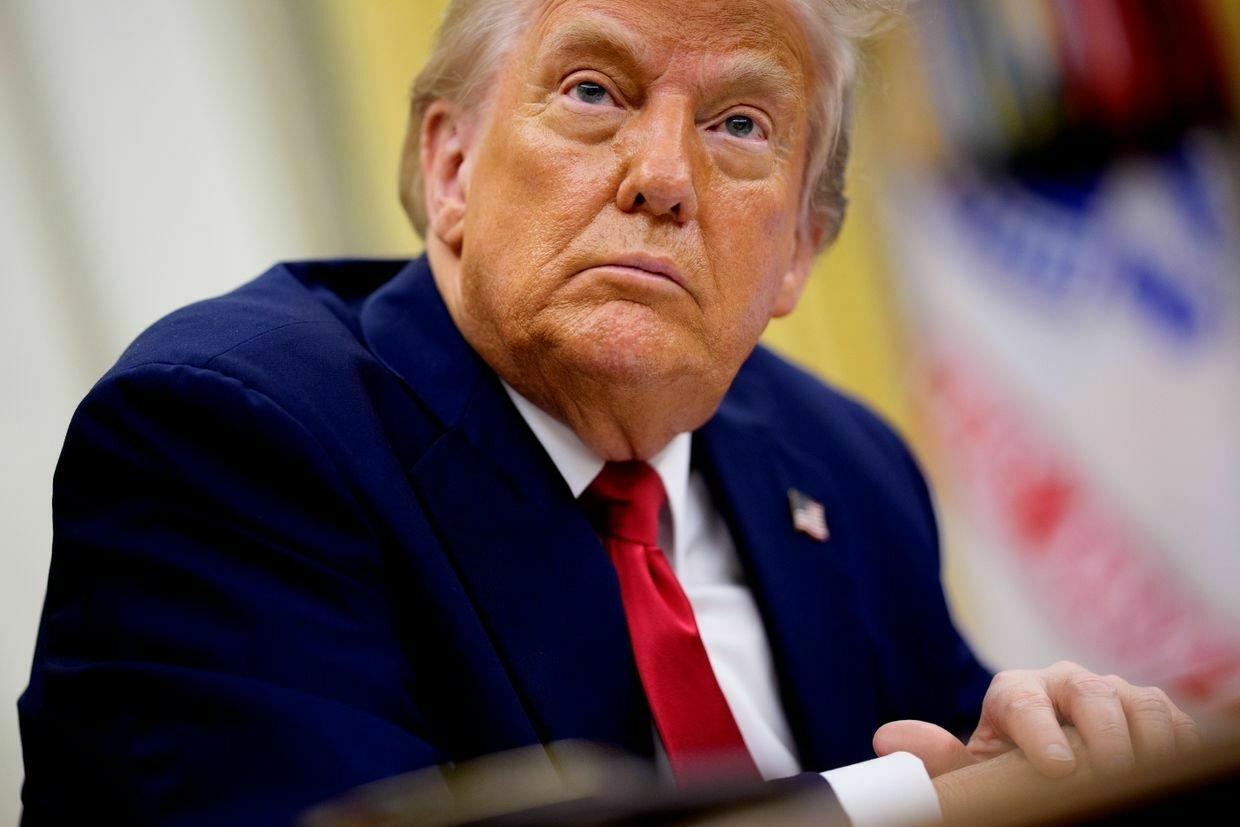
U.S. President Donald Trump’s radical changes to U.S. foreign policy have led many to suspect that he wants to align America more with Russian President Vladimir Putin over the long term. The expectation now is that the United States, China, and Russia will carve up the world among themselves, as the victors of World War II did at the 1945 Yalta Conference. As Trump abandons America’s 80-year-old commitment to preserving a rules- and law-based international order, the world is heading back to the age of “might makes right.” Yet because Trump sees all diplomacy as transactional, he is surrendering America’s main power multiplier: its ability to form and lead alliances.
Of course, Trump’s approach does not necessarily mean that he will seek an especially close relationship with Putin or express admiration for Chinese President Xi Jinping. Moreover, one should not assume that Putin and Xi would ever come to trust the U.S., even if they become friendly with Trump. Why would the leaders of authoritarian, dictatorial systems suddenly put their faith in a country whose strategy could fundamentally change after the next election?
A better description of the situation is that Trump has turned not so much toward Russia as away from Europe. He simply wants to be done with the war in Ukraine and, ideally, with the entire transatlantic partnership. As a project that confers equal rights on all its member states, the European Union flies in the face of his understanding of the world.
In Trump’s view, the Ukraine war and America’s obligations toward European allies are costly obstacles to national greatness. He believes that the U.S. can dominate the world single-handedly if it dispenses with rules, norms, and international commitments. The ensuing great-power competition need not rise to the level of military conflict, but it will certainly feature a war-like struggle for technological, economic, and financial supremacy.
“A better description of the situation is that Trump has turned not so much toward Russia as away from Europe.”
Such a change in U.S. strategy has profound implications for Europe. America’s withdrawal leaves a power vacuum on the continent, which is already being buffeted by the harsh crosswinds of the geopolitical competition. Trump thinks he has unburdened America by abandoning Europe, but the Russians and Chinese know better. They are all too eager to exploit the breakdown of the transatlantic alliance. Ultimately, Trump, Xi, and Putin will each try to divide Europe, albeit for their own reasons.
Paradoxically, at a time when the global center of gravity has shifted from the Euro-Atlantic to the Indo-Pacific, Europe is nonetheless becoming the fulcrum of world politics once again. Europe may not yet have much geopolitical heft without the U.S., but that doesn’t mean its member states and institutions are condemned to be minnows swimming in a sea of sharks. Europe’s technological, economic, and military potential is substantial; Europeans’ success or failure at realizing it will determine the future world order.
Until now, the EU’s need for unanimity has rendered it ineffective and too slow to act, owing to the considerable differences between its member states. Thus, the first task is to develop a new structure for cooperation. The recently proclaimed “coalition of the willing” in support of Ukraine is a first major step toward freeing ourselves from dependency on the U.S.. Notably, this initiative includes non-EU members, and it is being led by France and the United Kingdom, rather than by the EU.
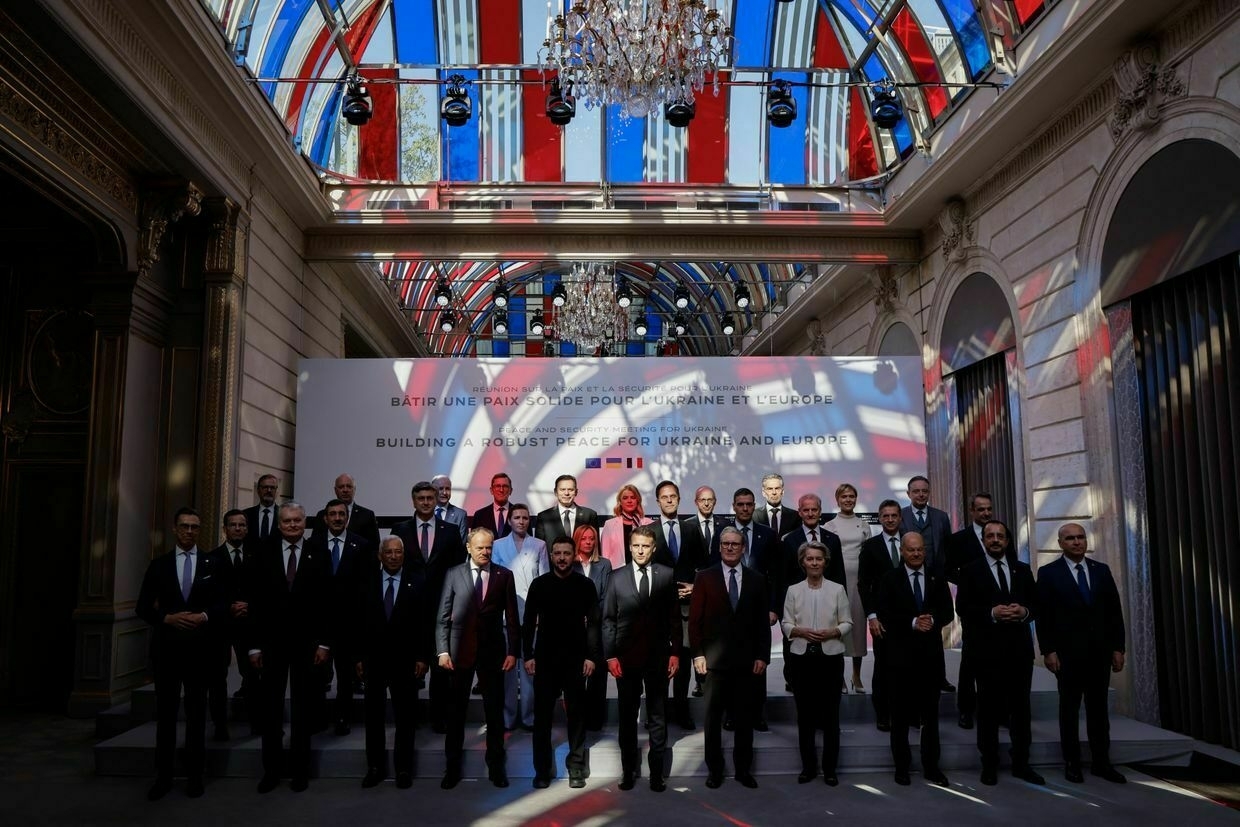
Officials pose for a group photo during a summit for the "coalition of the willing" at the Élysée Palace in Paris, France on March 27, 2025. (Ludovic Marin / Pool / AFP via Getty Images) With France and the U.K. (each a nuclear power) continuing to lead, the group should create a provisional security council to work toward establishing a European defense union that also includes Germany, Poland, and Italy. In addition to addressing questions of membership, this council can clarify the coalition’s relationship with the EU and NATO, determine members’ contributions to conventional and nuclear deterrence, and coordinate military support for Ukraine.
But these changes will not be enough for Europe to survive on its own. Europe also must find new sources of economic strength. Beyond reducing bureaucracy and creating attractive conditions for companies, Europe needs stronger incentives to promote innovation and research and development. If it cannot marshal the resources to attract the world’s top researchers and most innovative companies, it will not achieve the dynamism that it needs.
Finally, Europe must work with its neighbors to the south. By contrast, withdrawing from international cooperation to focus its resources on tanks and grenades would only fuel the zero-sum geopolitical contest that Europe is trying to navigate around.
Germany will have a central role to play in these efforts. For many years, it seemed to lose sight of Europe, engaging in fruitless navel-gazing. Fortunately, this dangerous posture now seems to be a thing of the past. Even before taking office, incoming Chancellor Friedrich Merz has sent a powerful signal to the world: Germany is back, and it is back in an altogether different way. The vast sums of money promised to strengthen its defense posture and infrastructure show that these are not empty words. Merz understands that a successful German “pivot to Europe” requires a robust, dynamic German economy.
Merz and his future coalition partner, the Social Democratic Party, clearly recognize how much Europe’s fate depends on Germany stepping up to promote European integration. So, too, does French President Emmanuel Macron, who is already working in close coordination with the incoming German leadership.
But Germany can also help Europe by remaining a strong voice for dialogue and diplomacy, even as it embarks on a new defense-building drive. Military strength and openness to engagement are two sides of the peace-building coin. The future of European peace and prosperity is now wholly in Europeans’ hands.
Editor’s Note: The opinions expressed in the op-ed section are those of the authors and do not necessarily reflect the views of the Kyiv Independent.
Ukraine, Russia must focus on ceasefire over peace dealThe war between Russia and Ukraine continues unabated. Neither side is in a position to achieve its stated objectives through military force. But now there is significant diplomatic activity as well. Ukraine has agreed to a 30-day ceasefire, in large part to patch up relations with U.S. President D…The Kyiv IndependentRichard Haass
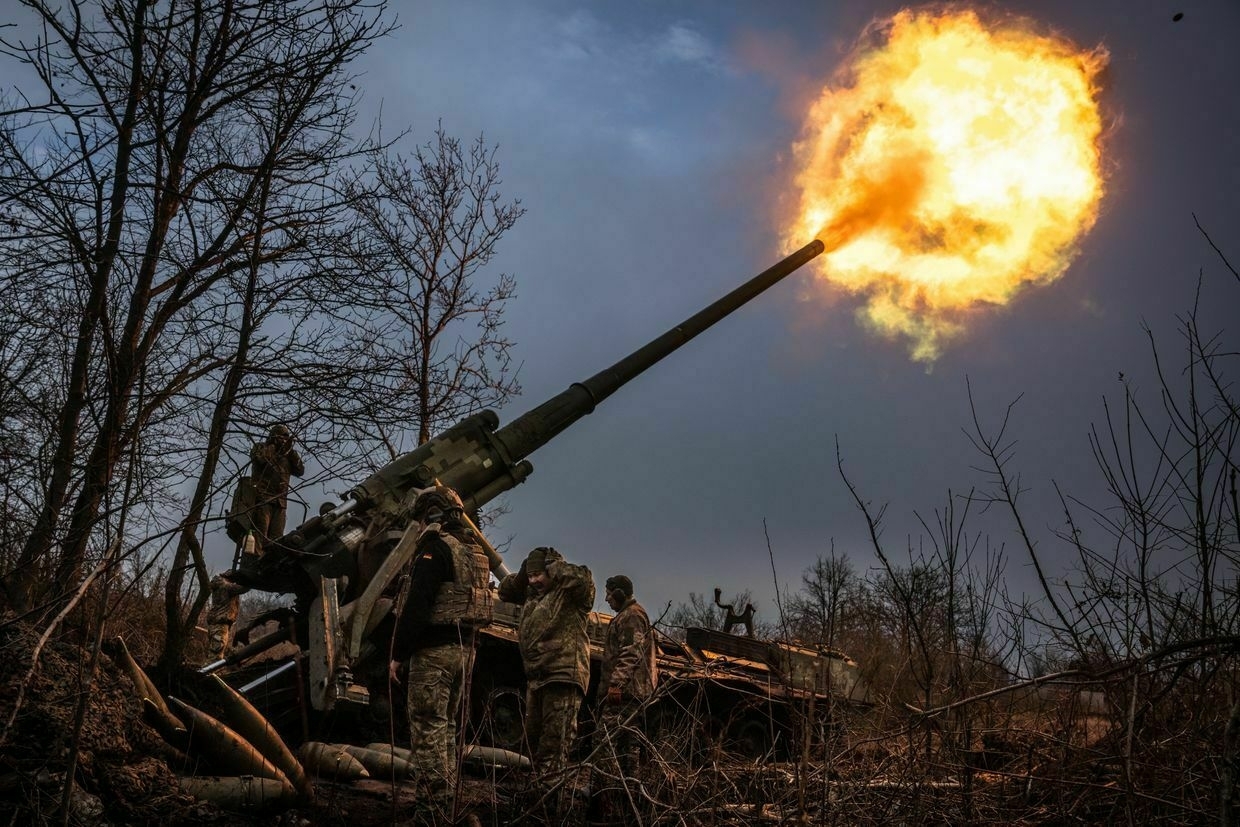
-
Russia's spring offensive has 'already begun,' Syrskyi says
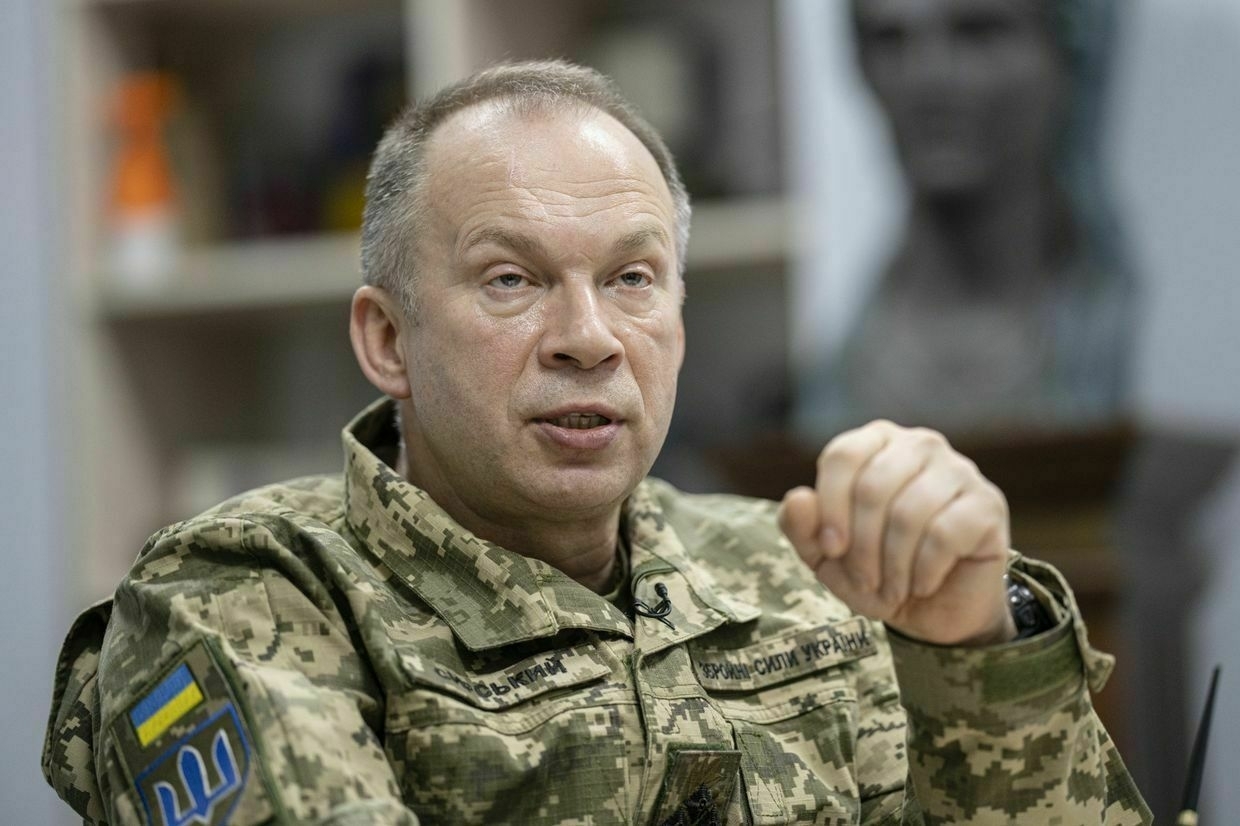
Russia’s new spring offensive against Ukraine “has actually already begun,” Commander-in-Chief Oleksandr Syrskyi said in an interview with the LB.UA outlet published on April 9.
Syrskyi’s comments come after President Volodymyr Zelensky warned that Moscow is amassing forces for a fresh offensive against the Kharkiv and Sumy oblasts this spring.
“I can say that the president is absolutely right, and this offensive has actually already begun,” Syrskyi said.
For nearly a week, Russian offensive operations have almost doubled in all main sectors, the commander-in-chief noted.
Ukrainian officials and experts have been warning that Russia may launch a new offensive against the two northeastern regions to strengthen its hand in potential negotiations. The development comes after Russia recaptured much of its territory in Kursk Oblast, a Russian border region Kyiv attacked last year to disrupt plans for an offensive against Sumy Oblast.
U.S. President Donald Trump has sought to broker a ceasefire in Ukraine, but Moscow has rejected the 30-day truce agreed upon by Washington and Kyiv and continues its onslaught, hoping to use the time to seize more territory.
Russia made significant advances on the battlefield, primarily in Ukraine’s eastern Donetsk Oblast, last fall, but its push had slowed down in the early months of 2025.
When asked whether the upcoming Zapad 2025 drills in Belarus in September could be part of preparations for the new offensive, Syrskyi acknowledged that military exercises can be used to redeploy and amass a new group of forces.
At the same time, the Ukrainian commander-in-chief does not expect that the fall exercises will be used for that purpose, though Kyiv “has to take this factor into account."
In Kyiv, skepticism about ceasefire reigns as Russia ramps up deadly attacks and US remains muteFollowing weeks of loud statements and attempts at diplomacy, the lack of clarity feels unsettling. Ukraine had agreed to a full ceasefire and got nothing in return. Russia had refused to comply. Over the past week, Russia further escalated its attacks on Ukrainian cities, killing dozens of civilia…The Kyiv IndependentYuliia Taradiuk
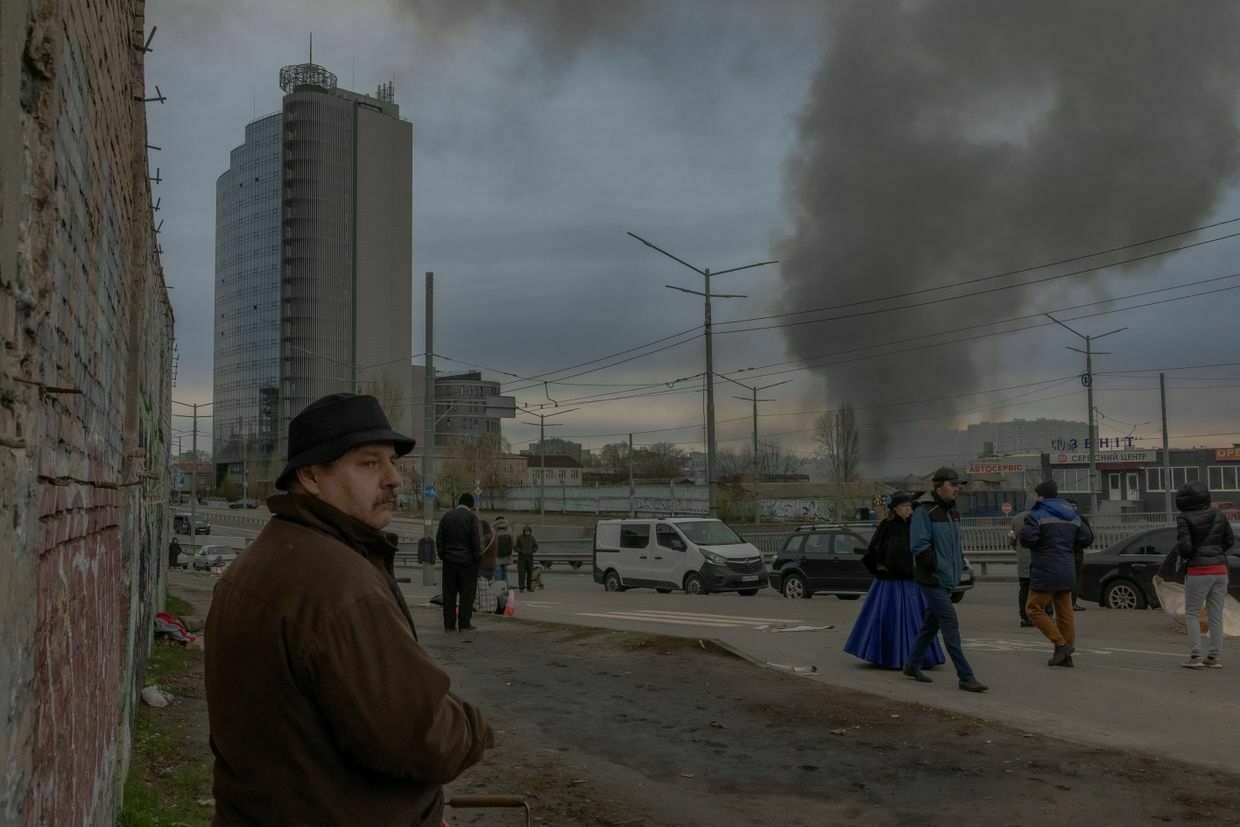
-
US made 'no decision' yet on cutting military presence in Europe, Pentagon says
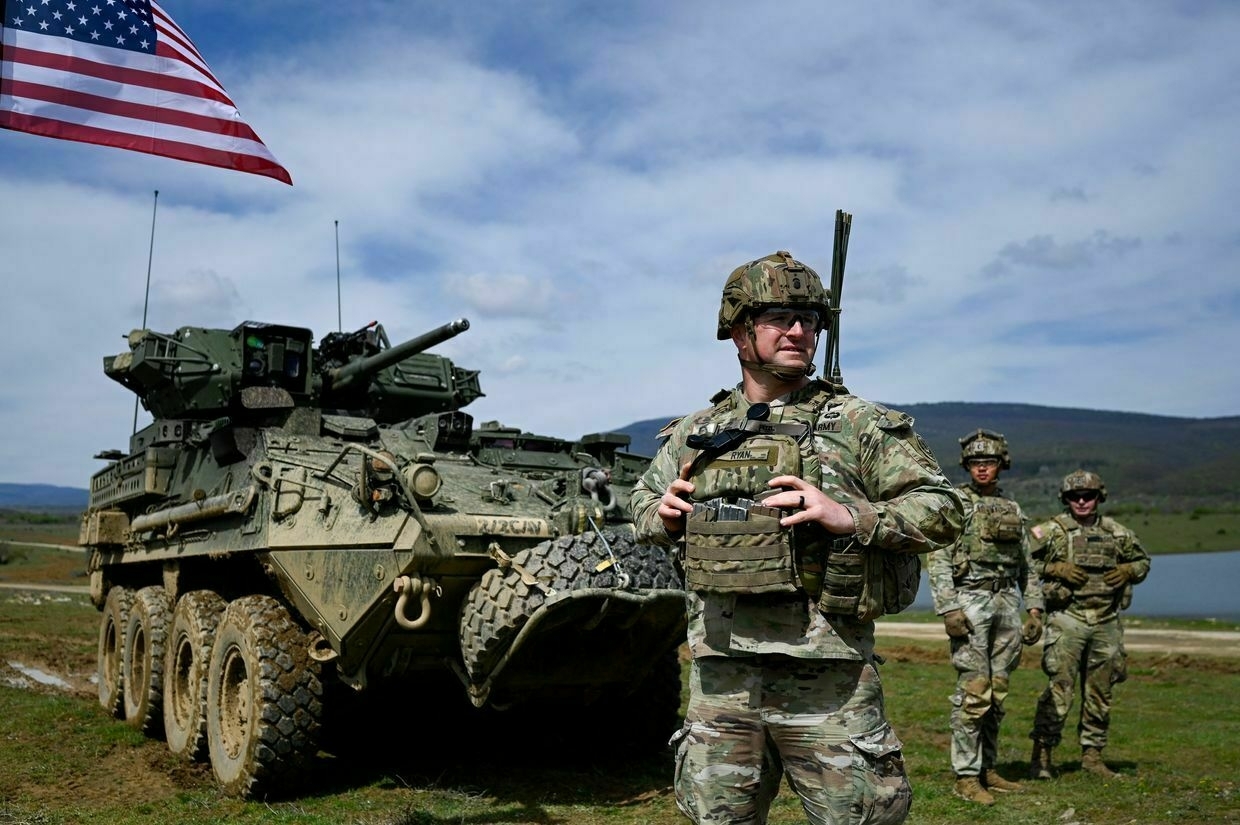
The United States has not made a final decision on reducing its military presence in Europe, the Pentagon press office told Polish broadcaster TVP Info on April 8.
“No decision has been made yet,” the Pentagon said. “The U.S. commitment to NATO is strong, but the U.S. expects European allies to lead Europe’s conventional defense."
The statement follows a report by NBC News that senior U.S. defense officials are considering cutting as much as half of the 20,000 additional troops sent to Europe after Russia’s full-scale invasion of Ukraine in 2022.
U.S. forces remain stationed across Poland, Romania, and the Baltic states as part of NATO’s deterrence and reassurance posture.
The possible drawdown comes as U.S. President Donald Trump and Defense Secretary Pete Hegseth press European allies to take greater responsibility for the continent’s security.
The U.S. Army Europe and Africa Command announced on April 8 the relocation of American personnel and equipment from Poland’s Rzeszow-Jasionka Airport, a key logistics hub for military aid to Ukraine.
The redeployment, which will move assets to other locations in Poland, follows months of planning and is part of a broader strategy to optimize U.S. military operations across the region.
The debate over troops and future U.S. involvement comes as NATO faces growing pressure to raise defense spending. Trump has called for increasing the alliance’s benchmark from 2% to 5% of GDP, a target that far exceeds current commitments by most members.
Finland’s Defense Minister Antti Hakkanen recently warned that Europe must create a clear, coordinated roadmap with Washington to assume a larger share of the defense burden.
U.S. Secretary of State Marco Rubio has said Trump remains supportive of NATO but expects a “realistic pathway” from allies to reduce dependency on the United States.
Russian military airfield reportedly targeted in mass drone attackIndependent Telegram channel Astra reported that drones targeted the military airfield in Mozdok, from where MiG-31K carriers of Kinzhal hypersonic missiles are deployed.The Kyiv IndependentTim Zadorozhnyy
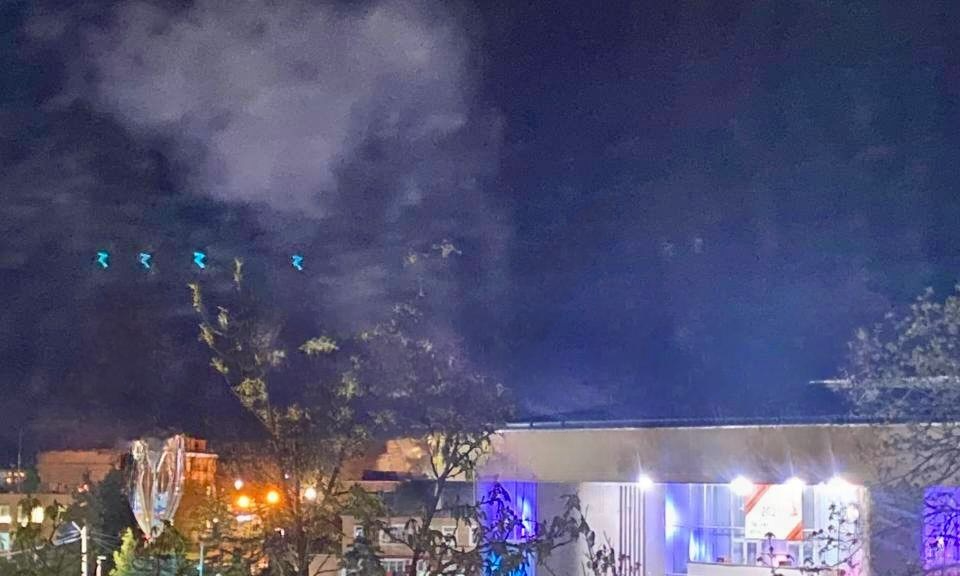
-
Ukrainian diaspora groups urge NHL to reject games with Russian league
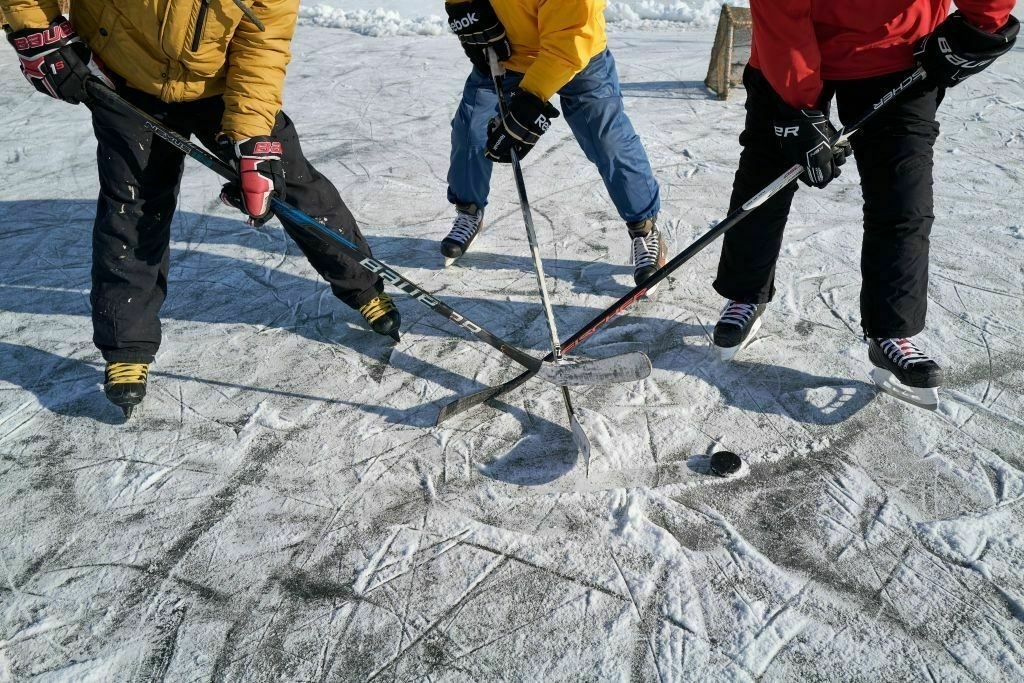
More than 30 Ukrainian-American and Ukrainian-Canadian groups are urging the National Hockey League (NHL) to reject the idea of organizing matches against teams from Russia’s Kontinental Hockey League (KHL).
In a letter sent on April 7 to NHL commissioner Gary Bettman, first reported by NBC News, the organizations said collaborating with the KHL would harm the NHL’s reputation and “would be an affront to millions of American and Canadian NHL fans and to people of Ukrainian descent in both countries."
Razom for Ukraine, a U.S.-based nonprofit advocating for international support for Ukraine and a co-signer of the letter, shared it on X on April 8.
As of March, at least 591 Ukrainian athletes and coaches have been killed by Russia, 22 are held in captivity, and 11 are missing. Some 725 sports facilities have been damaged or destroyed by Russian attacks, including 17 Olympic, Paralympic, and Deaflympic training bases.
The appeal comes shortly after Alexander Ovechkin, who is originally from Russia, became the NHL’s all-time leading goal scorer. The organizations warned that any cooperation between the NHL and KHL “would forever stain your organization’s reputation, facilitate the broader reintegration of the Russian Federation into world sporting bodies, undermine the NHL’s own stated values, and alienate millions of hockey fans."
Daniel Balson, director of public engagement at Razom for Ukraine—a U.S.-based organization that co-signed the letter—called for a stronger stance from the NHL. “Our letter simply asks for the NHL to make plain and public its opposition to any such collaboration,” Balson said, according to NBC News. He added that potential NHL-KHL matches would coincide with “Russian bombs raining fire on Ukraine civilians."
The controversy emerged after Russian President Vladimir Putin reportedly suggested hockey matchups between American and Russian players during a call with U.S. President Donald Trump last month. According to the Kremlin, Trump supported Putin’s proposal, although the NHL said it was “not part of the original conversation, and there have been no further discussions."
White House press secretary Karoline Leavitt said last month that although hockey was discussed during the leaders' call, the administration’s priority is securing a peace agreement, not scheduling hockey matches.
Ukrainian athletes who will never have a chance to compete at the OlympicsAudiences from across the world tuning into the Olympics kicking off with this Friday’s opening ceremony in Paris should, as they enjoy the show, be conscious of why Ukraine will not be fully represented this summer – and at future athletic competitions. Among the tens of thousands of Ukrainians ki…The Kyiv IndependentKateryna Hodunova

-
'Morons and crooks' — Ukrainian-born US lawmaker slams media, Zelensky after controversial remarks
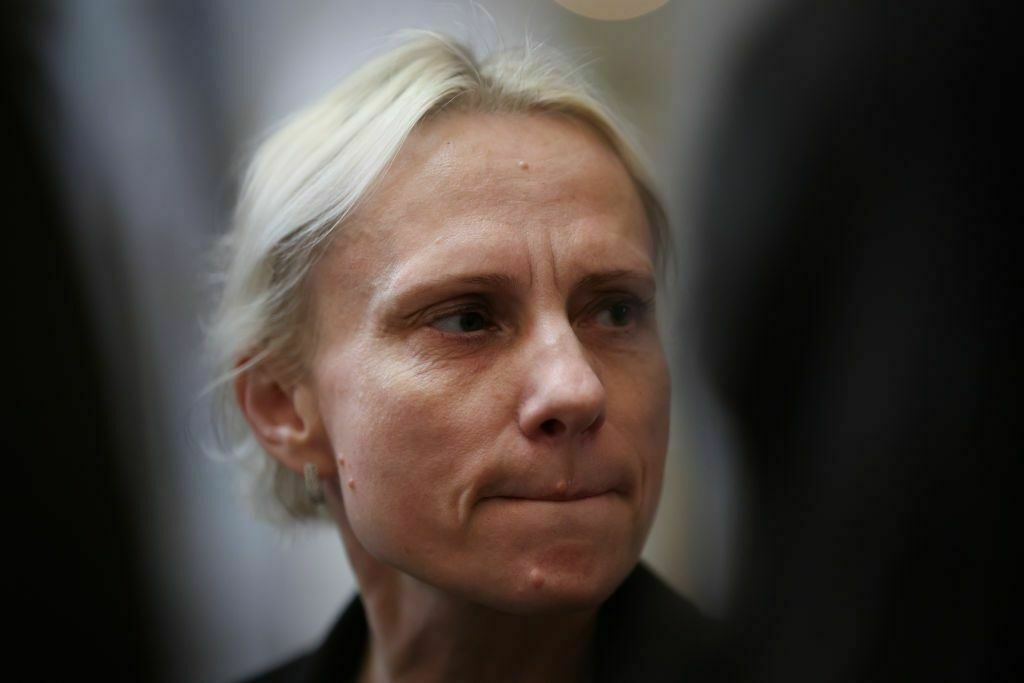
U.S. Congressional Representative Victoria Spartz issued a statement on April 8 in response to media coverage of her comments on the war in Ukraine.
The Ukrainian-born lawmaker stirred controversy called on President Volodymyr Zelensky to and suggested Ukraine cede territories to Russia in an interview with the Telegraph published April 7. Kyiv responded to her comments, accusing Spartz of repeating Kremlin talking points.
In a statement published April 8, Spartz accused the Telegraph of “intentionally misrepresenting” her views on the war and doubled down on her criticism of the Zelensky administration.
“I spent an enormous amount of energy trying to help the Ukrainian military to win their brutal fight against Russia,” Spartz said.
“Unfortunately, if you have morons and crooks like Zelensky and his puppet parliament running your country, it’s a lost cause. (Russian President Vladimir) Putin might be evil, but he is not a moron."
While Spartz claimed that the Telegraph’s coverage was “dishonest,” she repeated her assertion that Ukraine will not be able to retake territories currently occupied by Russian forces.
“The current reality on the ground is that Ukraine is not in the position to retake its territories, nor could they agree to give them up permanently,” she said.
“Therefore, only a temporary solution with the help of the United States can be achieved, which will give each side some time to regroup. The end result of that war will have to be decided later and not just on a battlefield."
Spartz, a Republican and supporter of U.S. President Donald Trump, was born in Chernihiv Oblast and moved to the U.S. in 2000. Elected to Congress in 2021 and 2024, she initially supported U.S. aid for Ukraine but has since become a vocal critic of Zelensky’s government and now backs Trump’s push for negotiations with Russia.
In recent months, Spartz has publicly distanced herself from Ukraine policy, citing “a lack of clear strategy” and expressing skepticism over continued military assistance. She accused Zelensky of disrespecting Trump during their Oval Office clash in February.
Spartz has also faced controversy at home. Politico reported in June 2024 that she was under preliminary investigation by the House Ethics Committee for allegedly mistreating staff and fostering a hostile work environment.
Does Trump have red lines with Russia? The question has experts stumpedHe’s been “pissed off,” “not happy,” and “very angry,” but so far, U.S. President Donald Trump is yet to take any concrete action to force Russian President Vladimir Putin to agree to a full ceasefire. Trump has multiple forms of leverage he could use against the Kremlin — increasing militaryThe Kyiv IndependentChris York
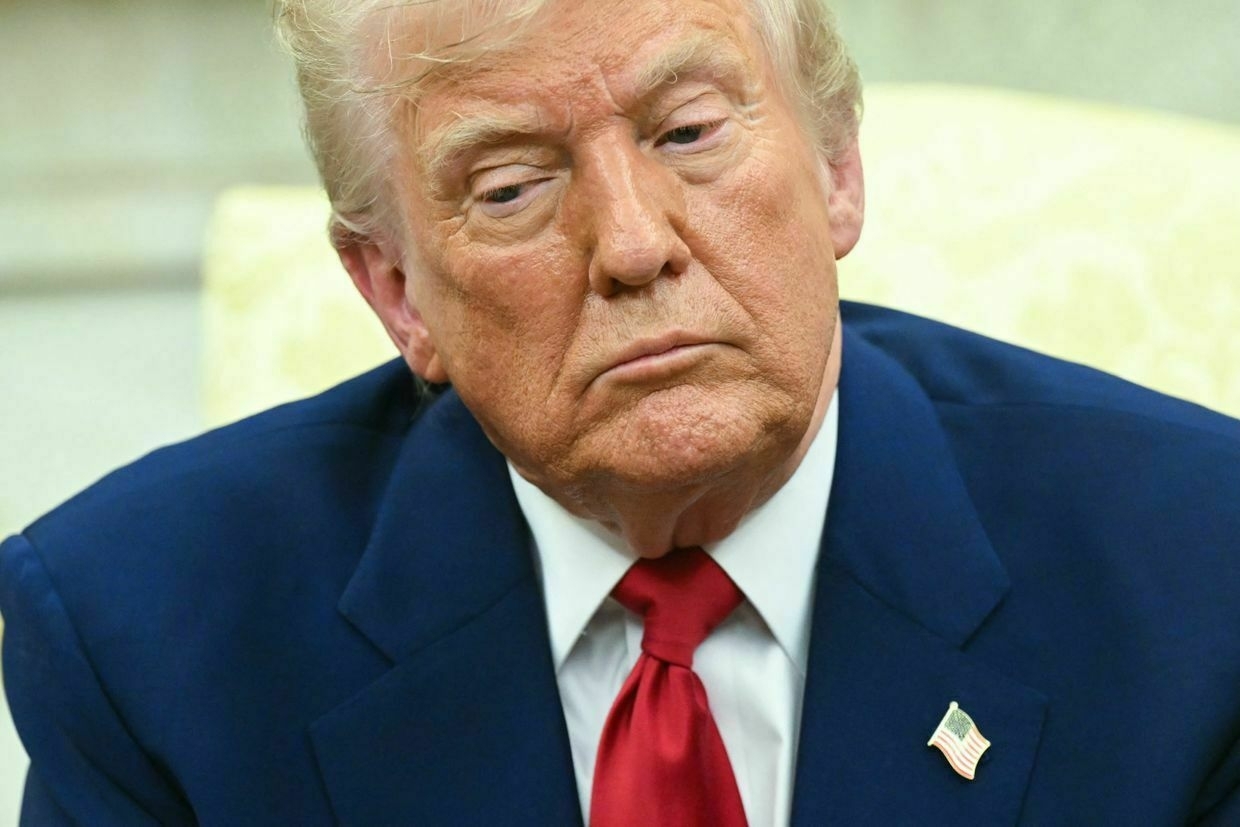
-
Ukraine war latest: Kyiv captured 2 Chinese nationals fighting for Russia, Zelensky says
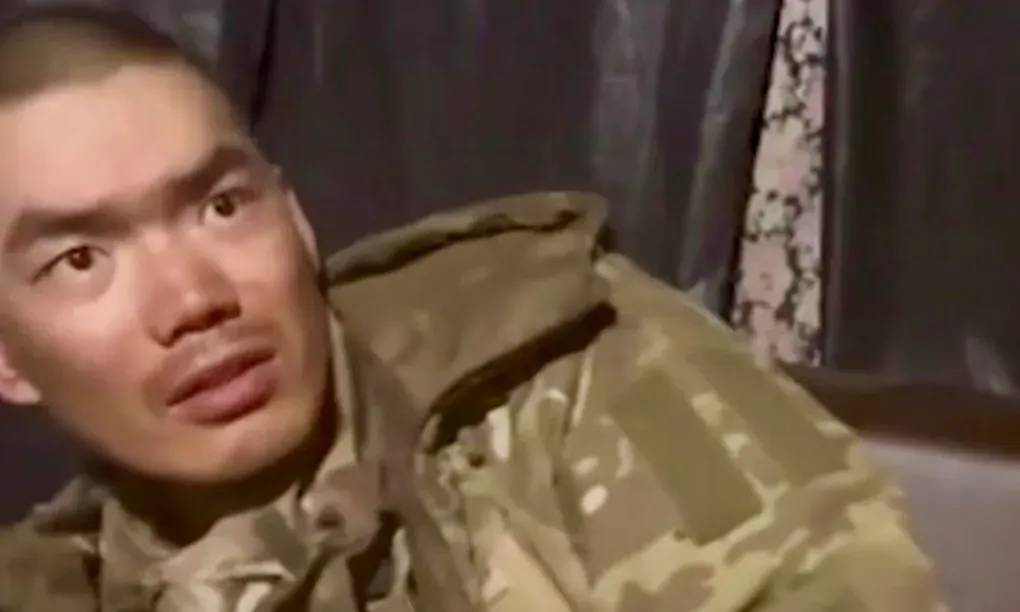
Key developments on April 8:
- Ukraine captured 2 Chinese nationals fighting for Russia, Zelensky says
- Russian forces sometimes outnumber Ukraine 10 to 1 in Lyman sector, military says
- More Patriot systems for Ukraine the “best support” from US right now, Zelensky says
- Belgium to provide Ukraine with $1-billion defense package
Ukrainian troops have captured two Chinese nationals who were fighting in the ranks of the Russian military against Ukraine, President Volodymyr Zelensky said on April 8.
“We have information that there are much more than two such Chinese citizens in the occupier’s units,” Zelensky said. “We have the documents of these prisoners, bank cards, personal data."
Ukrainian troops clashed with six Chinese soldiers near the villages of Tarasivka and Bilohorivka in Donetsk Oblast, according to the president.
The two captured are being held by Ukraine’s Security Service, according to Zelensky. He instructed Foreign Minister Andrii Sybiha to urgently contact Beijing to determine how Chinese officials will respond.
Sybiha said that Ukraine had summoned China’s charge d’affaires to express condemnation and demand an explanation regarding the matter.
“Chinese citizens fighting as part of Russia’s invasion army in Ukraine puts into question China’s declared stance for peace and undermines Beijing’s credibility as a responsible permanent member of the UN Security Council,” the minister posted on X.
Zelensky emphasized the apparent recruitment of Chinese nationals — whether direct or indirect — highlights the Kremlin’s commitment to continuing its aggression.
“We definitely need a reaction to this. A reaction from the United States, Europe and everyone in the world who wants peace,” he said.
Zelensky added that China is another country, along with Iran and North Korea, that supports Russia in its war against Ukraine.
“But there is a difference: the North Koreans fought against us in the Kursk direction, the Chinese are fighting on the territory of Ukraine,” the president said at a press conference with Belgian Prime Minister Bart de Wever.
New round of US-Russia talks set for April 10 in Istanbul, Kremlin saysThe negotiations will involve representatives of the two countries’ foreign ministries, Kremlin spokesperson Dmitry Peskov said.The Kyiv IndependentKateryna Denisova
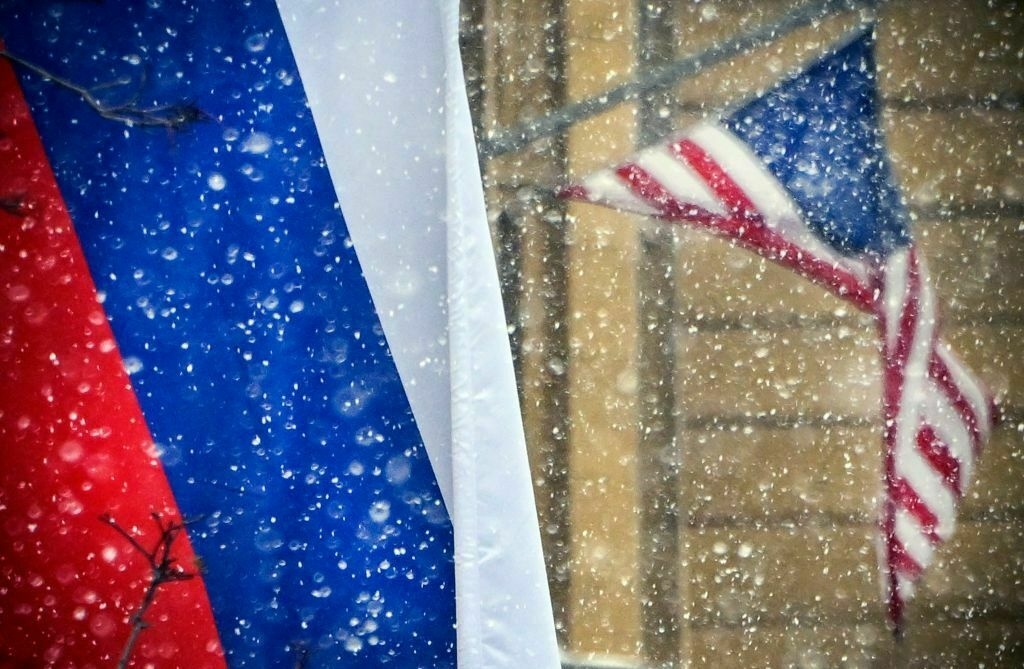
Russian forces sometimes outnumber Ukraine 10 to 1 in Lyman sector, military saysRussian forces in the Lyman sector of the Donetsk Oblast sometimes outnumber Ukrainian troops by 10 to 1, Ukrainian military spokesperson Anastasia Blyshchyk said on April 8.
“Sometimes there are 10 Russian occupiers for one of our infantrymen,” said Blyshchyk, who represents Ukraine’s 66th Separate Mechanized Brigade.
“The Russians are pressing with an incredible amount of infantry, which they simply have a lot of."
Blyshchyk said Russian troops are deploying in both large and small groups, exploiting weather conditions to gain ground. Despite suffering major losses, she added, Russian units quickly replenish their ranks.
The Lyman sector, situated in northern Donetsk Oblast, remains one of the most contested front-line regions. Russia has repeatedly targeted the area due to its proximity to key transport routes and logistical hubs.
Over the past month, fighters from the 66th Brigade alone inflicted heavy losses on Russian troops, reportedly destroying two battalion-sized units, Blyshchyk said.
According to the General Staff’s report on April 5, Ukrainian forces faced 152 combat engagements that day, with the heaviest fighting recorded in the Pokrovsk, Lyman, Toretsk, and Kursk directions.
‘Putin believes he has the upper hand’ — Ukraine braces for a new Russian spring offensiveIn a way unseen since the start of the full-scale invasion, the daily grind of the front line in Russia’s war against Ukraine has taken the back seat in world headlines. The dizzying U.S. President Donald Trump-led attempts to negotiate peace in the world arena dominate the news cycleThe Kyiv IndependentFrancis Farrell
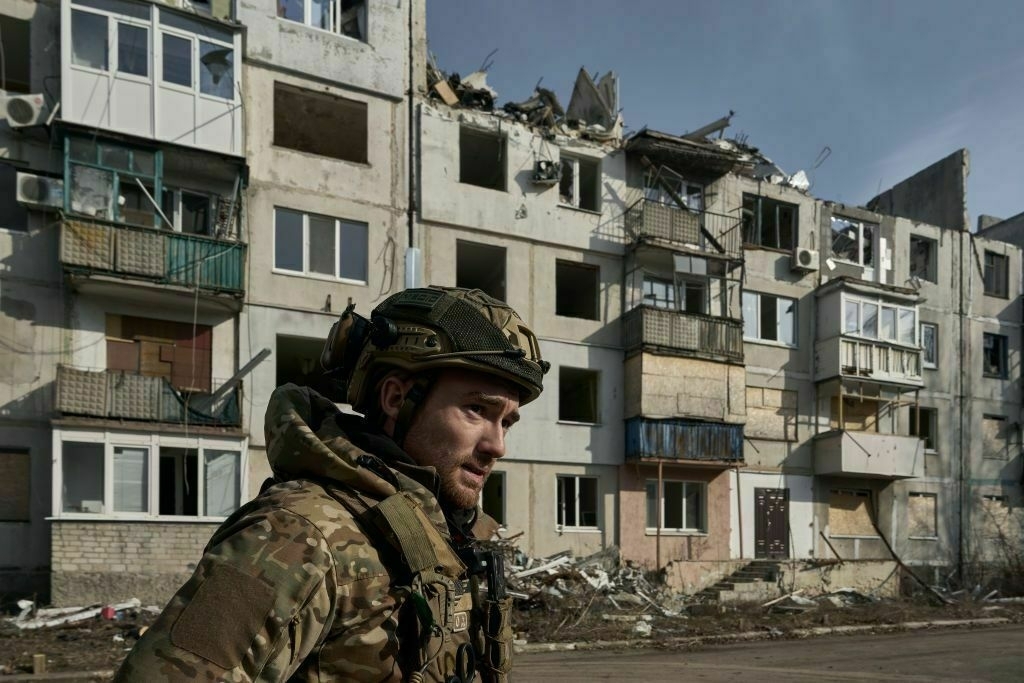
More Patriot systems for Ukraine the “best support” from US right now, Zelensky saysNew Patriot air defense systems for Ukraine could be the strongest sign of U.S. support, President Volodymyr Zelensky said on April 8, just days after Russia’s deadly missile attack on the city of Kryvyi Rih.
A Russian missile strike on Zelensky’s hometown in Dnipropetrovsk Oblast on April 4 killed 20 people, including nine children, and injured over 70.
Asked how this attack affected the Ukraine-U.S. ceasefire talks, Zelensky said that Western partners had been asked once again to bolster Ukraine’s air defense, including with additional Patriot systems.
“I thank our partners for supporting Ukraine and condemning it (Russia’s attack on Kryvyi Rih). But condemnation is not enough,” Zelensky said during a press conference with Belgian Prime Minister Bart de Wever in Kyiv.
“The Russians should be put in their place. They must end this war. The United States can transfer Patriot systems, they have a lot of them available. This is the best support for Ukraine today from the United States — to hand over Patriot systems."
Does Trump have red lines with Russia? The question has experts stumpedHe’s been “pissed off,” “not happy,” and “very angry,” but so far, U.S. President Donald Trump is yet to take any concrete action to force Russian President Vladimir Putin to agree to a full ceasefire. Trump has multiple forms of leverage he could use against the Kremlin — increasing militaryThe Kyiv IndependentChris York
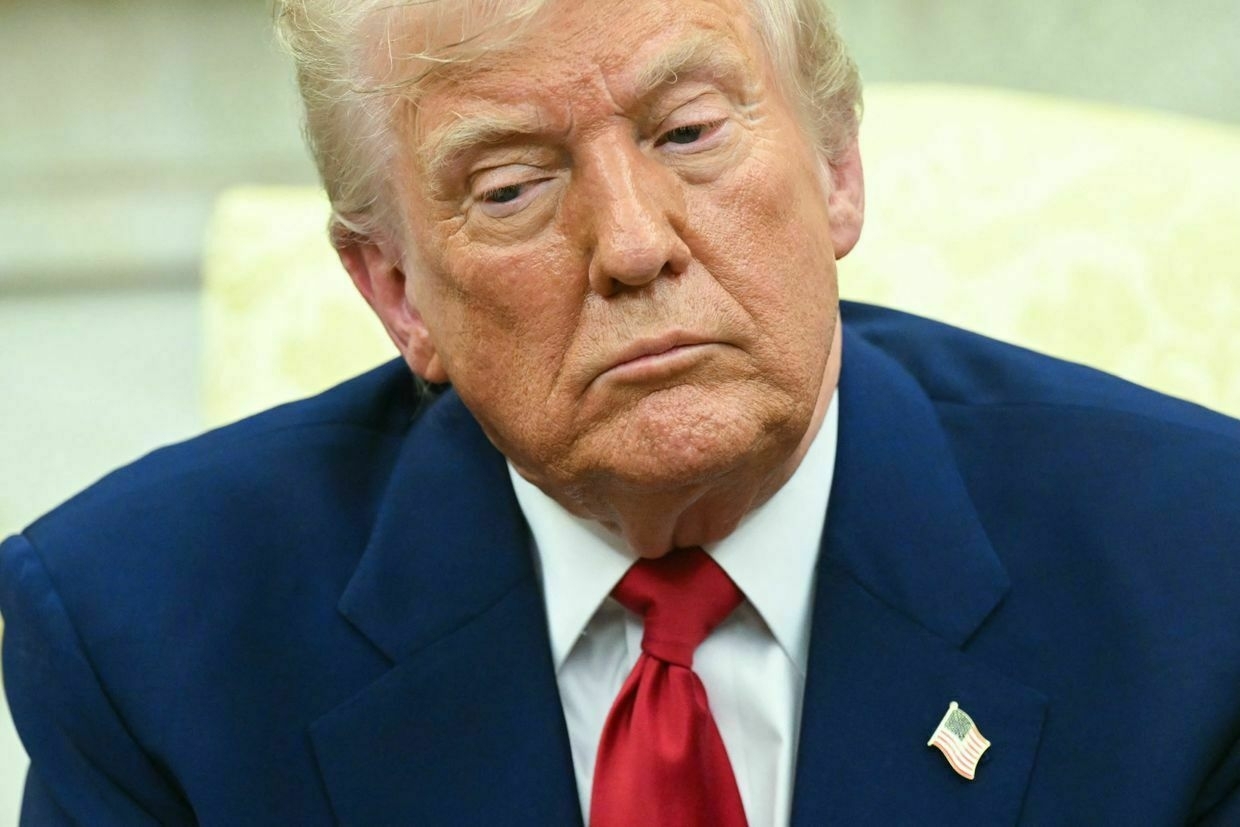
Belgium to provide Ukraine with $1-billion defense packageBrussels will provide Ukraine with a new defense aid package worth 1 billion euros ($1 billion), Belgian Prime Minister Bart De Wever said at a press conference in Kyiv on April 8.
The announcement came during a visit of Bart De Wever, along with Foreign Minister Maxime Prevot, and Defense Minister Theo Francken to Ukraine. The Belgian delegation visited Bucha in Kyiv Oblast and met with President Volodymyr Zelensky earlier in a day.
The funds will be used to purchase arms and strengthen Ukraine’s defense sector, including the production of new types of weapons.
“We talked about joint production of weapons and investments in production in Ukraine — this is something that will work for the whole of Europe,” Zelensky said.
Kyiv reached three agreements with Belgian manufacturers, he added.
According to De Wever, Brussels will also provide Ukraine with two F-16 fighter jets for spare parts in 2025. Two more planes are expected next year, he added.
Note from the author:
Ukraine War Latest is put together by the Kyiv Independent news desk team, who keep you informed 24 hours a day, seven days a week. If you value our work and want to ensure we have the resources to continue, join the Kyiv Independent community.
-
In Kyiv, skepticism about ceasefire reigns as Russia ramps up deadly attacks and US remains mute
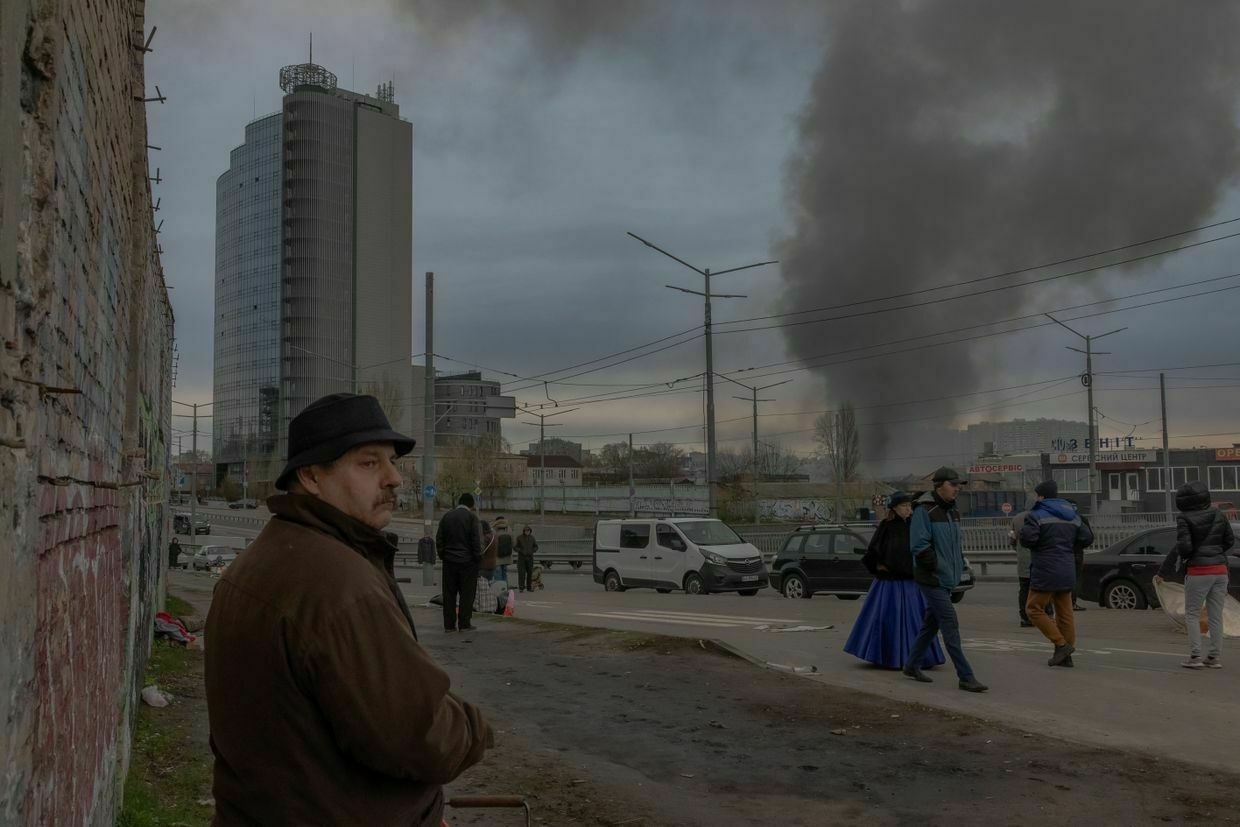
Following weeks of loud statements and attempts at diplomacy, the lack of clarity feels unsettling.
Ukraine had agreed to a full ceasefire and got nothing in return. Russia had refused to comply. Over the past week, Russia further escalated its attacks on Ukrainian cities, killing dozens of civilians, among them children.
The White House, which prioritized stopping the killings in Ukraine, remained notably mute.
“I don’t know what’s happening there,” U.S. President Donald Trump said on April 7, though he added he was “not happy… with the bombing.” But has so far the White House has not taken any concrete action to pressure Russia into a ceasefire.
As a result of the grueling uncertainty, people on the streets of Kyiv and those in high cabinets say they don’t believe a ceasefire can be achieved in the foreseeable future, nor that the U.S. can help bring one as it had promised.
“What kind of peace talks can there be?” Oksana, a 47-year-old cashier in Kyiv, asked.
“They announced a ceasefire dealing with the energy system, and on the same day started hitting civilians, people, and residential buildings,” she told the Kyiv Independent a day after yet another Russian missile strike on Kyiv kept her awake throughout the night, worried for her children.
Like other Kyiv residents interviewed, Oksana remained skeptical of diplomatic efforts with Russia, saying that “the Russians will go to the negotiation only if it meets their conditions 100 percent."
“This is Russia’s way of showing its true intentions — to continue terror as long as the world allows it.”
The rising skepticism among Kyivans comes as President Volodymyr Zelensky calls for a tougher Western response, stressing that "the pressure on Russia is still not enough."

Oksana, a 47-year-old cashier in Kyiv, Ukraine on April 7, 2025. (Yuliia Taradiuk) "This is Russia's way of showing its true intentions — to continue terror as long as the world allows it," Zelensky said in a Telegram post on April 6.
Oleksandr Merezhko, head of the parliament's Foreign Affairs Committee and a lawmaker from Zelensky's Servant of the People party, believes that people in Kyiv have "more and more disappointment and less and less illusions about the possible ceasefire."
"We see that initially, people had some hope that maybe before Easter, as Trump wanted, there would be a ceasefire," Merezhko told the Kyiv Independent.
"But with each day, this hope diminishes," he added, referring to the growing number of deadly attacks.
Zelensky, whose hometown of Kryvyi Rih in central-eastern Dnipropetrovsk Oblast suffered a missile strike on April 4 that saw at least 20 killed, including nine children, stressed that the Russian attack numbers were growing.
On April 6, an overnight Russian ballistic missile strike on Kyiv killed at least one and wounded three.
Russian troops have launched over 1,460 aerial bombs, almost 670 drones, and over 30 missiles of various types against Ukraine during the past week, according to Zelensky.
Merezhko dashed the feasibility of a potential ceasefire with Russia, saying that Russian President Vladimir Putin does not appear interested in such a deal. The lawmaker explained that Putin continues to put forward "absolutely unacceptable demands and conditions."
Earlier in March, Ukraine agreed to the U.S.-proposed 30-day ceasefire. Russia has so far rejected the proposal, demanding that Ukraine be barred from receiving Western military aid and mobilizing and training new troops.
Among the latest demands, Putin said he would favor a change of government in Ukraine to continue talks.
Trump has thus far insisted on Putin's commitment to the potential truce, trying to end the war in Ukraine by pressuring Kyiv instead of Moscow.
Ukrainian officials say Putin doesn't want peace and is using the time to inflict more damage.
"What we see from his actions: he continues to kill civilians, including children in Kyiv," Merezhko said.
"So judging not by his words but his actions, he has no intentions to have any reliable, stable, sustainable ceasefire."
"Ukrainian society has long had no illusions about the sincerity of Russia's intentions," according to Dmytro Fomin, former public opinion researcher at the Center for Content Analysis.
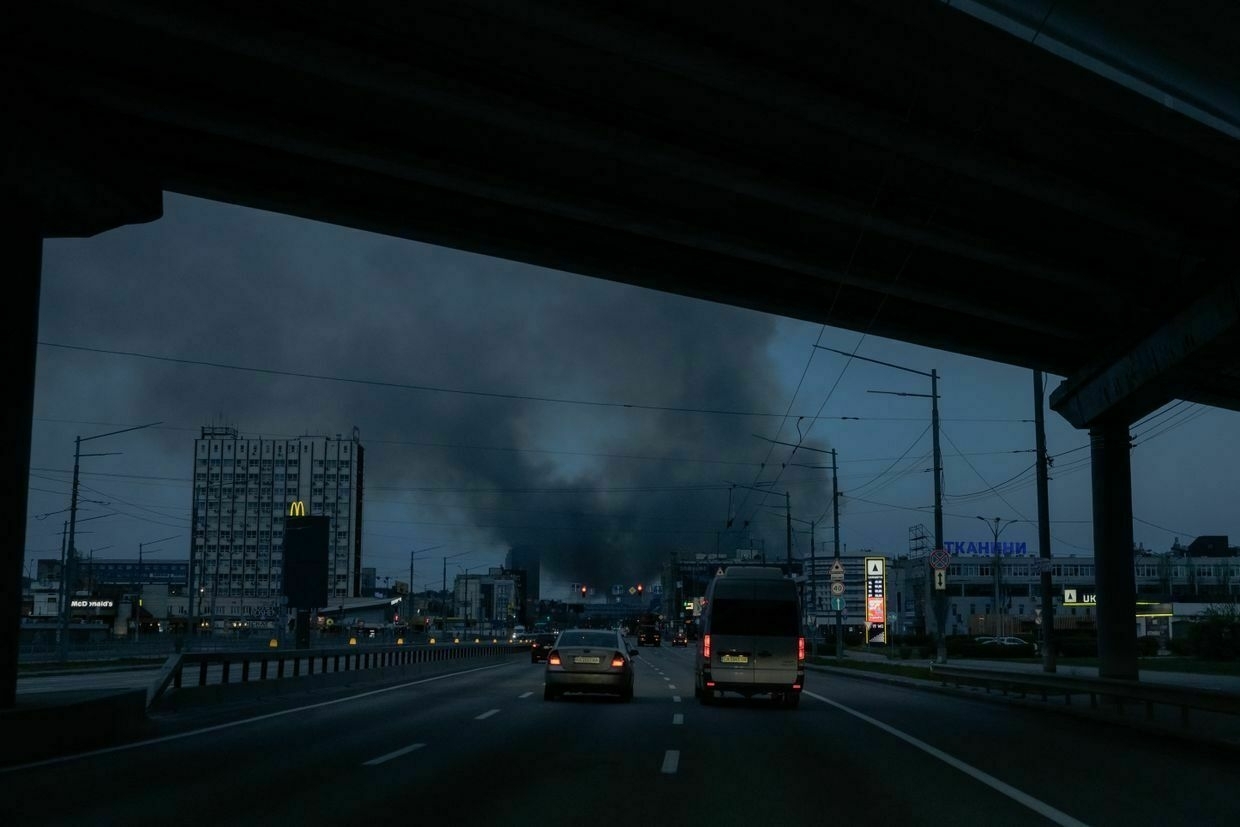
Cars drive on a road as smoke rises in the distance following a Russian missile attack in Kyiv, Ukraine, on April 6, 2025. (Roman Pilipey / AFP via Getty Images) 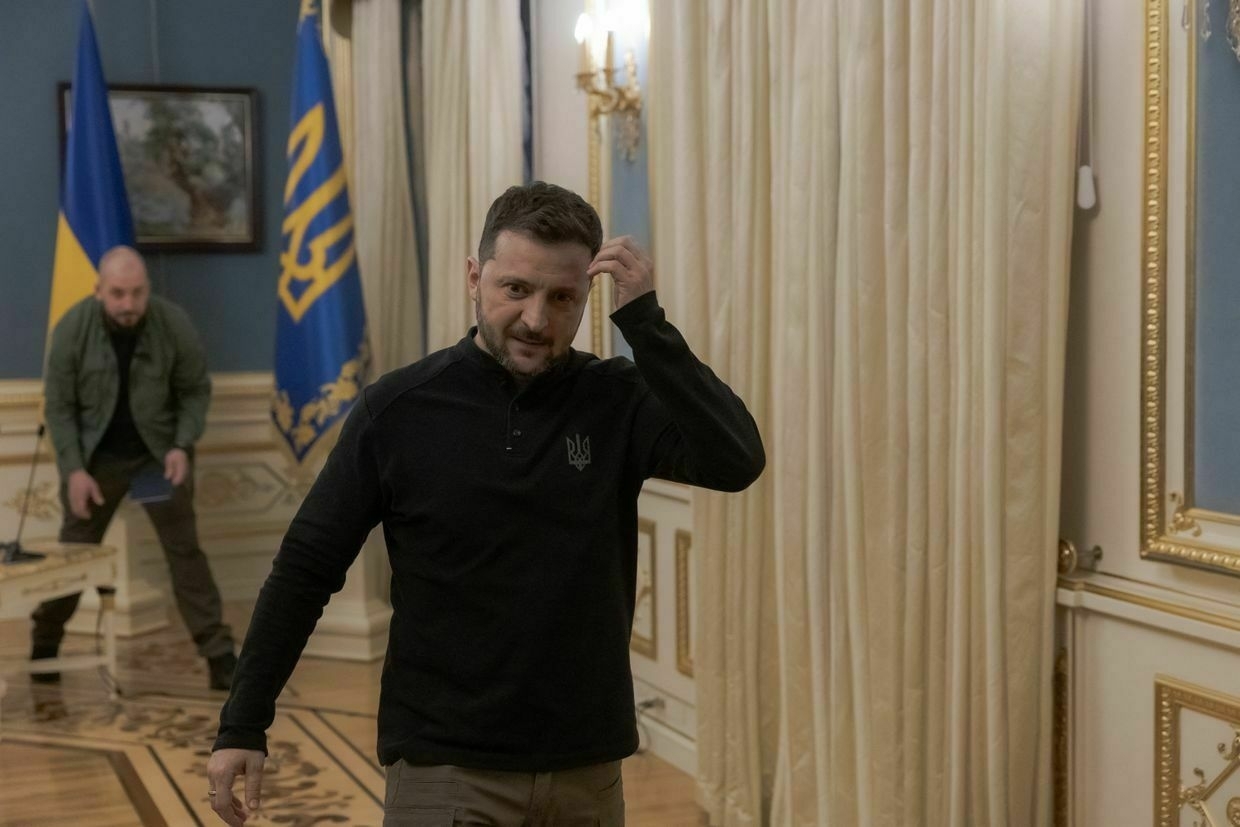
Ukrainian President Volodymyr Zelensky leaves after a press conference in Kyiv, Ukraine, on April 4, 2025. (Roman Pilipey / AFP via Getty Images) Mykyta Poturayev, head of the parliament's Humanitarian and Information Policy Committee and Vice-President of the OSCE Parliamentary Assembly, said, "There is no room to discuss ceasefire" when Putin doesn't want to stop the war.
Poturayev said it is difficult to make predictions when no one knows the potential decisions that the U.S. could make in the coming months regarding the war.
"Nobody knows what the position of the U.S. will be in the long run," Poturayev told the Kyiv Independent.
Peace talks began when Trump abruptly declared the start of negotiations to end the war in Ukraine after a phone call with Putin in February. Since then, Trump's team has met with both the Russian and Ukrainian delegations in hopes of ironing out conditions for a potential agreement.
The U.S. took a sharp policy shift in early March, temporarily freezing its military aid and intelligence sharing to Ukraine following a heated Feb. 28 Oval Office clash between Trump, his Vice President JD Vance, and Zelensky.
Following a series of Russian attacks on Ukrainian cities over the past week, Trump reiterated his calls for a ceasefire and said, "I don't like the bombing."
"We are talking to Russia. We would like them to stop," Trump told reporters on April 6.
Olexiy Haran, politics professor at the Kyiv Mohyla Academy, said the intensified attacks may be Russia's intent to "maximize the stakes" and possibly to show it to Trump in particular.
"The question here is how we can break the Russian position — the only thing (that can) is pressure," Haran told the Kyiv Independent.
"But (Trump) is not doing anything right now."
Poturayev was more optimistic.
"With every day, we (Ukraine, the U.S., and Europe) have a more and more common understanding of the situation of Russia's real position," Poturayev said.
People who spoke with the Kyiv Independent, however, don't expect this to lead to any sort of result.
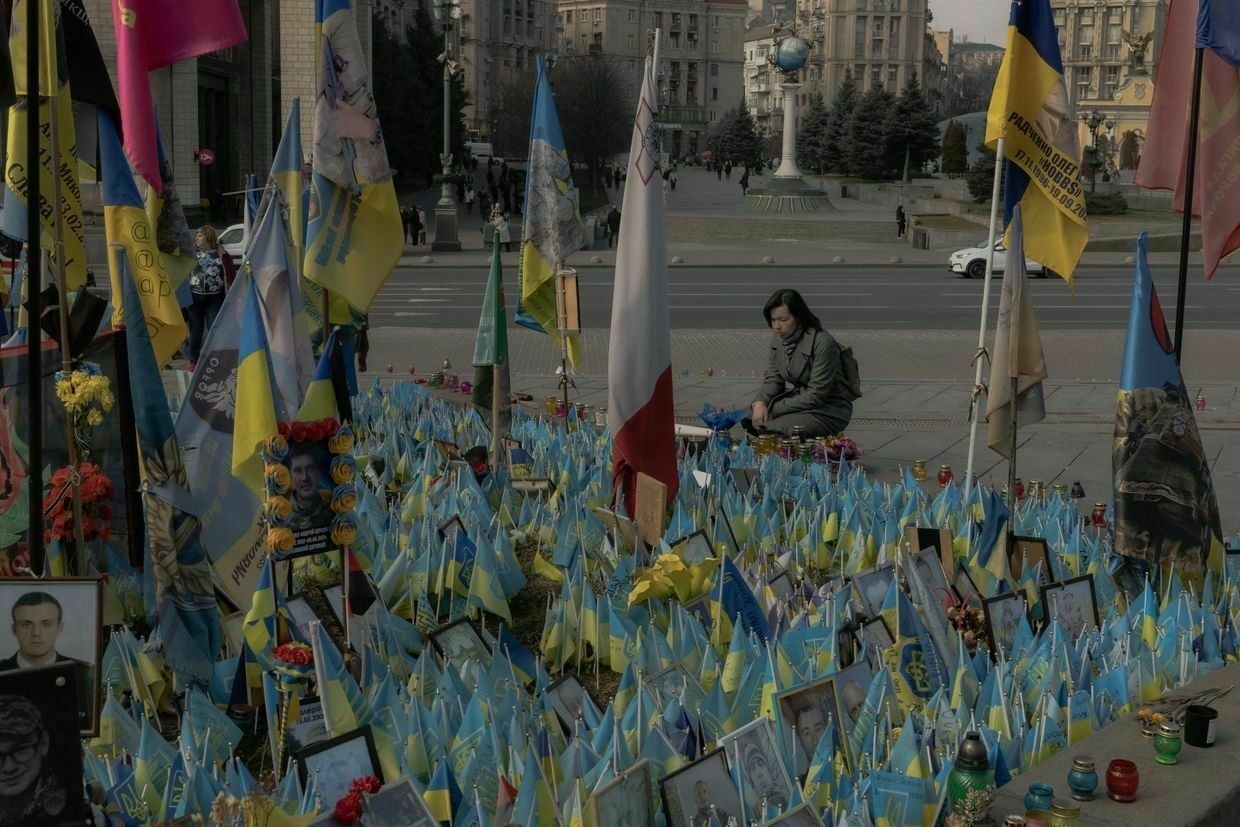
A woman visits a makeshift memorial for fallen Ukrainian and foreign fighters on Independence Square in Kyiv, Ukraine, on March 11, 2025. (Roman Pilipey / AFP via Getty Images) Does Trump have red lines with Russia? The question has experts stumpedHe’s been “pissed off,” “not happy,” and “very angry,” but so far, U.S. President Donald Trump is yet to take any concrete action to force Russian President Vladimir Putin to agree to a full ceasefire. Trump has multiple forms of leverage he could use against the Kremlin — increasing militaryThe Kyiv IndependentChris York
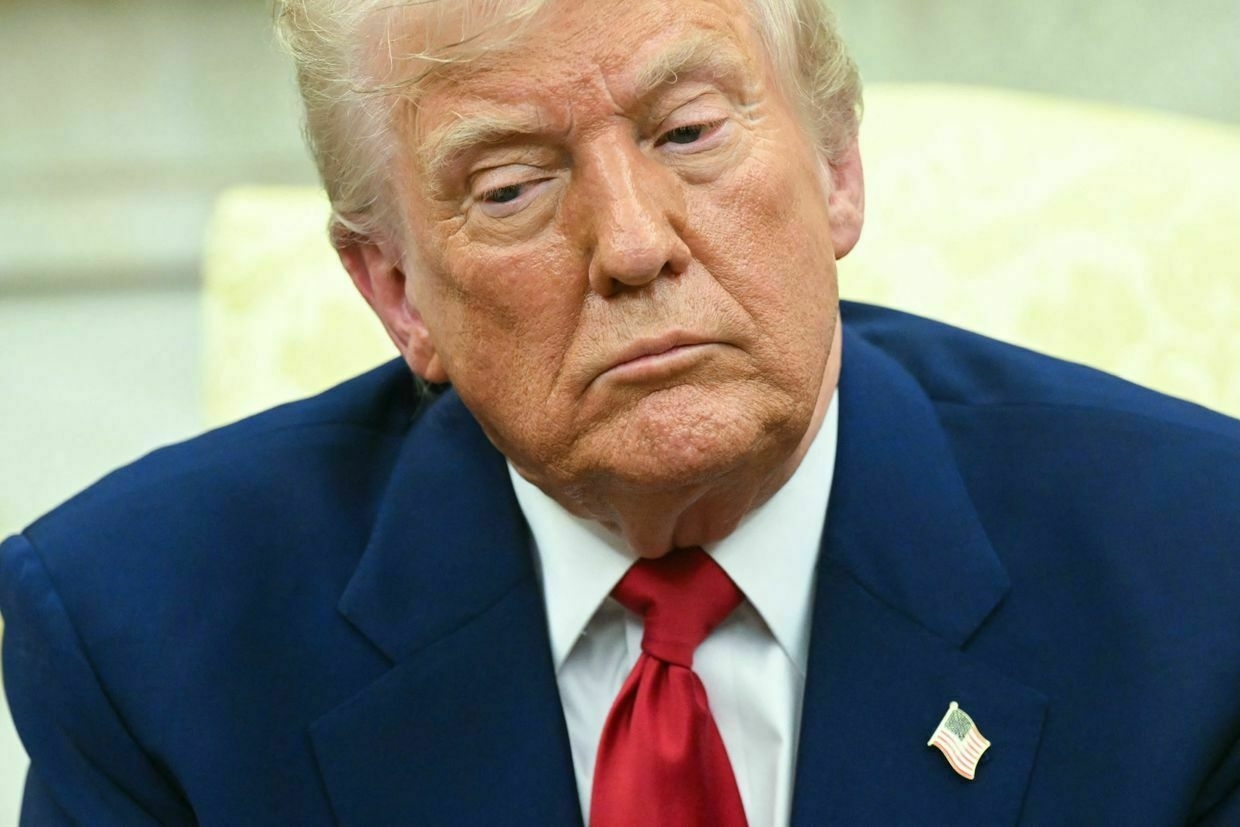
-
Does Trump have red lines with Russia? The question has experts stumped
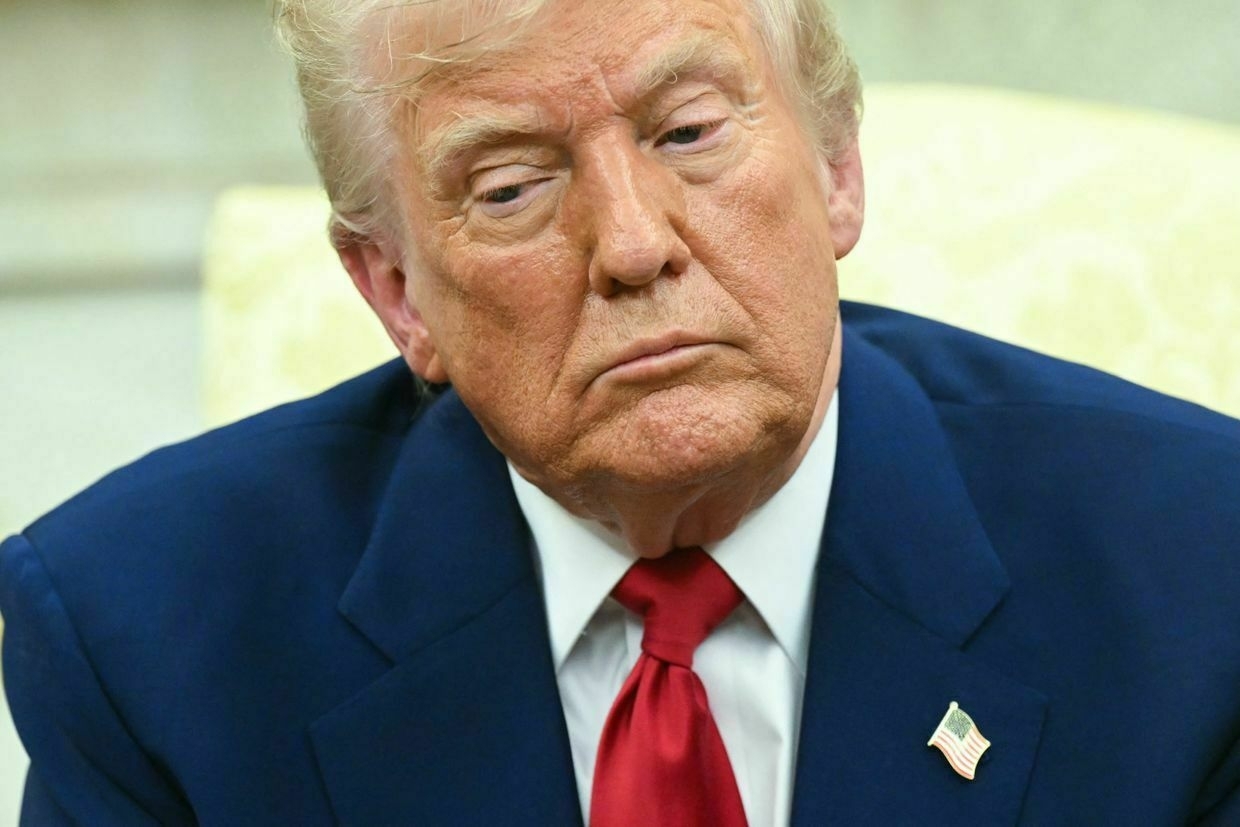
He’s been “pissed off,” “not happy,” and “very angry,” but so far, U.S. President Donald Trump is yet to take any concrete action to force Russian President Vladimir Putin to agree to a full ceasefire.
Trump has multiple forms of leverage he could use against the Kremlin — increasing military aid to Ukraine, strengthening the enforcement of existing sanctions, or imposing additional tariffs on countries that buy Russian oil.
So far, Trump has used none of it, and aside from a few angry statements, he is letting Putin wage war unabated.
Trump took office vowing to bring a swift end to the war in Ukraine, plans that Kyiv was eager to get on board with.
Ukraine agreed to a U.S.-proposed full 30-day ceasefire on March 11, saying it was ready to take such a step if Russia also agreed to the terms.
To date, and nearly one month later, Russia has refused.
Instead, Moscow agreed to a partial energy ceasefire in the Black Sea and in relation to strikes on energy infrastructure — two theaters of the war in which Ukraine has been pummelling Russia.
Meanwhile, Russian missile and drone attacks against Ukraine have continued in devastating fashion — one strike in Kryvyi Rih on April 4 killed 20 people, including nine children.
“I’m not happy about what’s going on with the bombing because they’re bombing like crazy right now,” Trump said on April 7 at the White House.
“They’re bombing — I don’t know what’s happening there."
We asked three experts if Trump actually has a red line with Russia and what they think it would take for him to finally take action against the Kremlin.
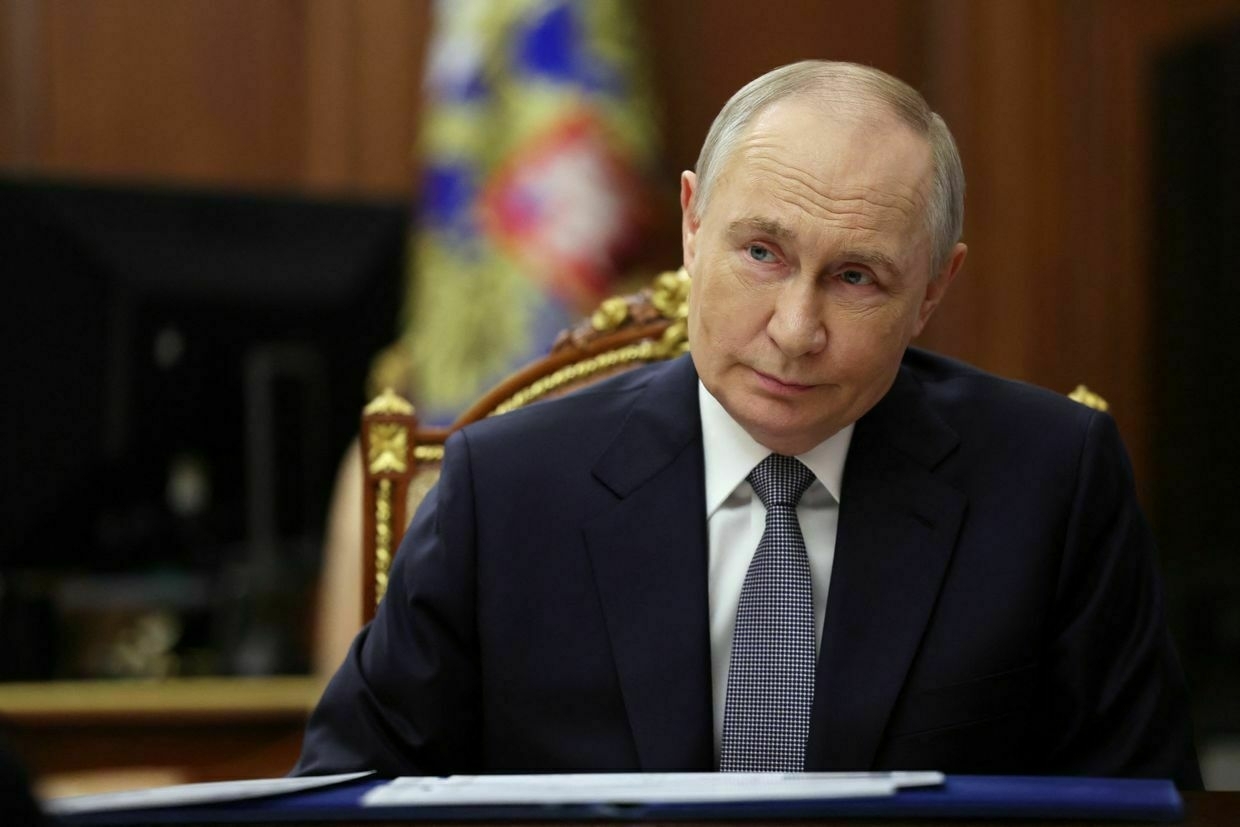
Russian President Vladimir Putin meets with Russia’s minister of culture in Moscow, Russia, on April 4, 2025. (Vyacheslav Prokofyev / Pool / AFP via Getty Images) Ivo Daalderpolitical scientist and former U.S. permanent representative to NATOI am not sure President Trump has a red line when it comes to Russian actions.
Aside from saying he would be ‘pissed off’ if Putin refused to end the war, he and his administration have taken positions that clearly favor Russia and disfavor Ukraine, including blaming Kyiv for starting the war, conceding the Russian narrative on Crimea and the four oblasts Moscow wants to annex, excluding the possibility of Ukraine joining NATO, temporarily halting military and intelligence aid, and seeking to recoup past expenditures and much more by effectively seizing Ukraine’s mineral and natural resource wealth.
Rather than drawing a clear red line, Trump is more likely to tire from the conflict and move on to other matters even while the war continues.
Mariana Budjerynsenior research associate with the Project on Managing the Atom (MTA) at the Harvard Kennedy SchoolI don’t have a good response to your question about the White House and red lines — unpredictability seems to be the name of the game with the current administration.
The Trump administration’s initial ambition was to impose a ceasefire and/or negotiate the end of war settlement quickly. It is proving harder than anticipated as Russia clearly does not intend to abandon its maximalist goals.
What is happening here is not exactly Russia crossing Trump’s red lines but rather upsetting Trump’s plans for quick war termination. How he will react remains to be seen.
He can double down and entirely sacrifice Ukraine, he can turn against Russia just as suddenly as he turned U.S. policy toward Russia, or he can refocus his attention elsewhere (trade wars, Greenland, Canada, etc) and let the war drag along without U.S. assistance to Ukraine.
All of these options are feasible.
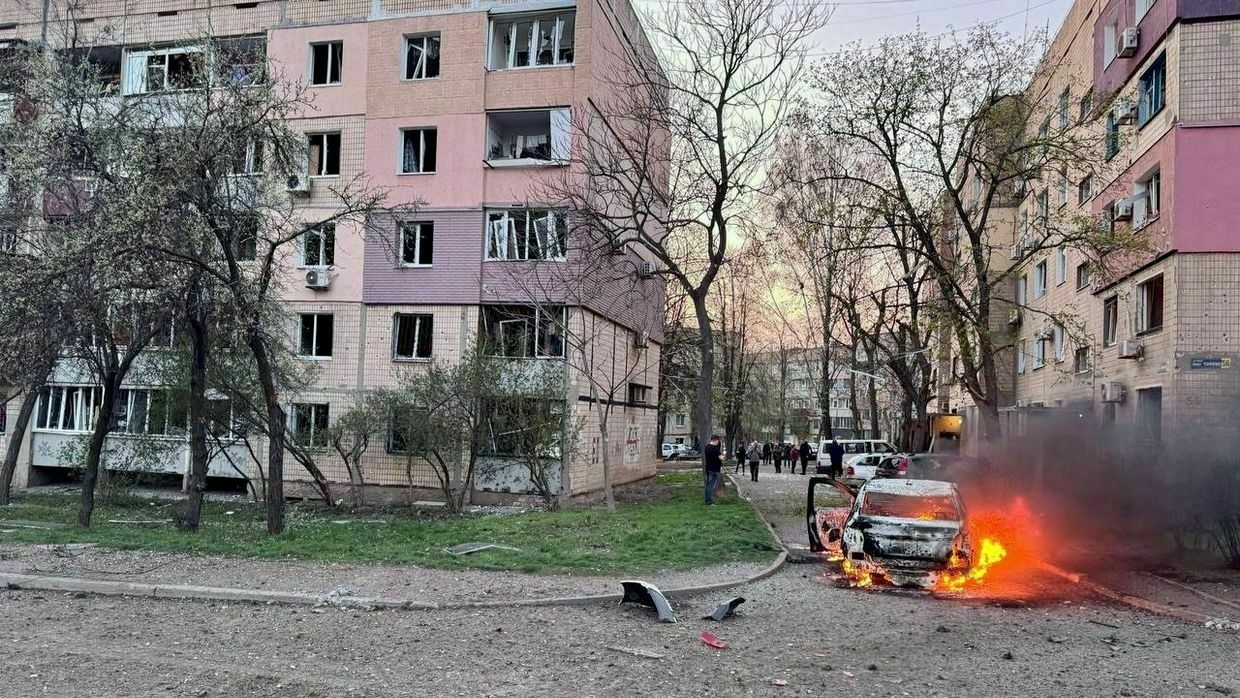
The aftermath of a Russian attack against Kryvyi Rih in Dnipropetrovsk Oblast, Ukraine, on April 4, 2025. (President Volodymyr Zelensky / Telegram) 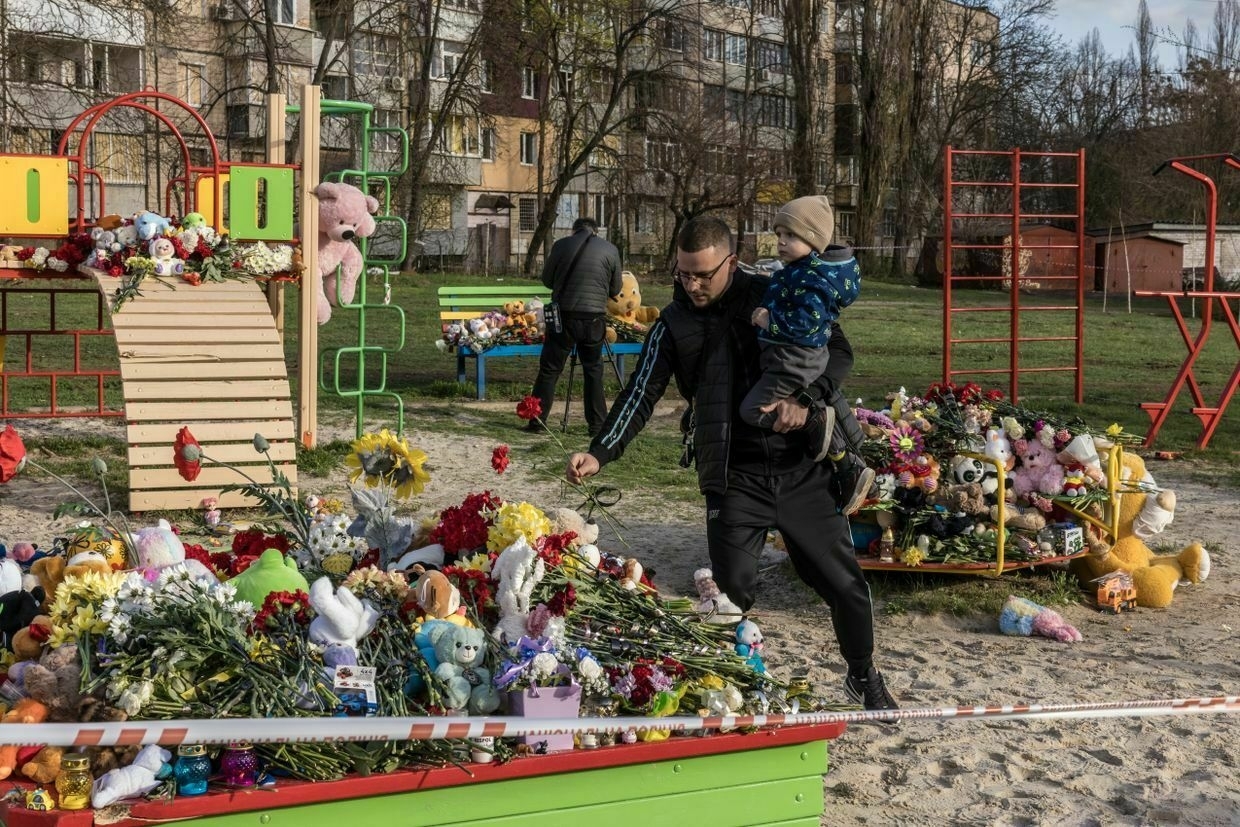
A man with a boy lays flowers at a playground to commemorate victims of a Russian missile strike in Kryvyi Rih, Ukraine, on April 5, 2025. (Oksana Parafeniuk / For The Washington Post via Getty Images) Jenny MathersRussian political expert and lecturer at the U.K.’s Aberystwyth UniversityYou asked what might be a red line for Trump as far as Putin’s behavior is concerned.
I don’t think you will find that red line — if it exists at all — in continuing brutality against Ukraine, including violating the ceasefire terms, attacking civilian targets, and killing children.
These things just don’t register with Trump as Putin’s crimes since he seems to blame Ukraine for not giving in to Putin and giving him what he wants.
It would be a different story, though, if Putin does something that makes Trump look foolish, publicly humiliates Trump in some way, or perhaps makes the U.S. look foolish.
Otherwise, Trump is likely to accept any kind of behavior from Putin without retaliation.
Did you notice how quickly Trump walked back his comment about being annoyed with Putin for not being ready for a peace deal?
Trump realizes that he is being played and that Putin is just using delaying tactics to get what he wants, but Trump evidently regards that with some admiration, as one card sharp might admire the skill of another.
BREAKING: Ukraine captured 2 Chinese nationals fighting for Russia, Zelensky says“We have information that there are much more than two such Chinese citizens in the occupier’s units,” President Volodymyr Zelensky said.The Kyiv IndependentTim Zadorozhnyy
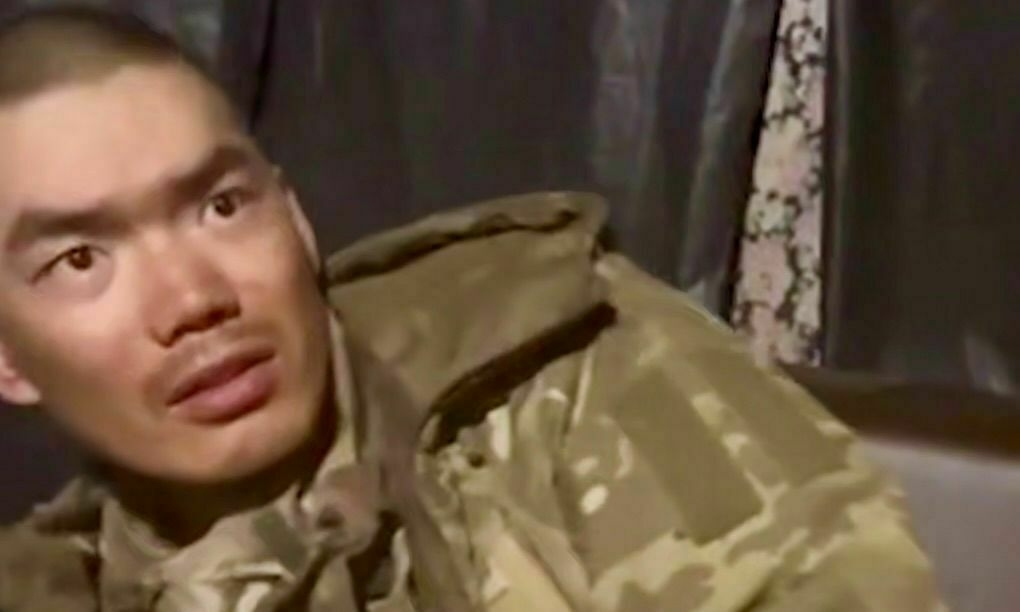
-
NEWSFLASH: Chinese soldiers fighting for Russia captured by Ukraine
Editor’s Note: Read this – and all of our – breaking news alerts by upgrading to a paid subscription!
The Ukrainian military has captured two Chinese citizens who were fighting in the Russian army. This happened in the Donetsk region, announced President Volodymyr Zelenskyy.
Video of captured Chinese soldier, from Zelenskyy’s Telegram channel:
This news comes over a period of incredible tension between China and the United States over tariffs. The global trade war complicates all of America’s international relationships.
And while the U.S. has been alienating both friend and foe due to the Trump tariffs, China has been signaling that it is willing to replace America’s leadership in some key areas.
China even teamed up with historical adversaries like Japan and South Korea to respond to the latest American trade moves.
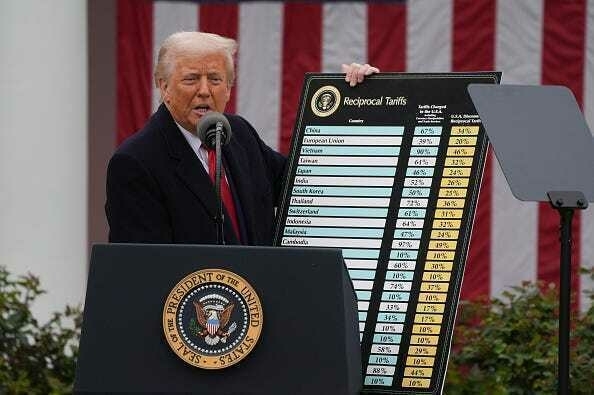
President Donald Trump holds a chart as he announced a plan for tariffs on imported goods during an event in the Rose Garden at the White House. (Photo by Demetrius Freeman/The Washington Post via Getty Images) China has also offered to play a role in brokering a peace between Ukraine and Russia, suggesting that it could contribute peacekeepers to maintain any negotiated outcome.
However, the capture of two Chinese soldiers undercuts the communist nation’s ability to claim some sort of neutral status.
After the paywall, you will learn about:
—The story of a third Chinese man who fought against Ukraine
—Who has custody of the Chinese POWs
—What the response from the Zelenskyy administration has been so far in Kyiv
-
Trump About Russians Bombing Ukraine. Largest NATO Air Training. Norway's Shells Aid to Ukraine



